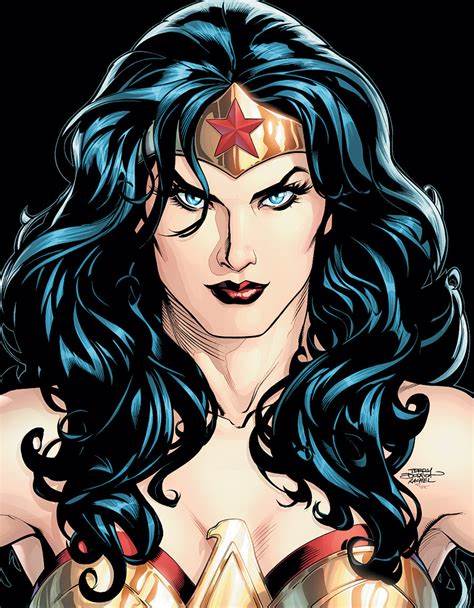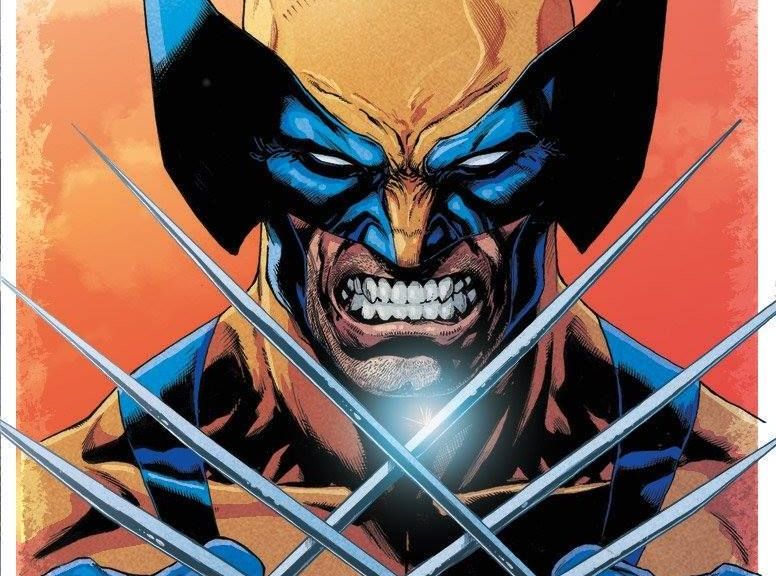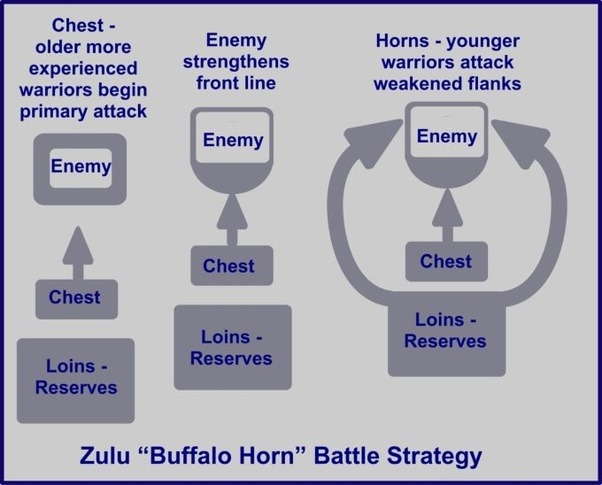So, for the first time in a while, I am posting on my blog again. This reason is because of a stupid technical issue that basically caused the site to not load the administrative tools from any browser I used, until I decided to try Microsoft Edge. But enough about that, lets move on to the topic at hand.
The. Motherfucking. Snyderverse. Now for those who have been listening to the podcast I host with Tombstone da Deadman (Metas & Mutants), I have definitely had thoughts on the DCEU as a whole. And they haven’t been overwhelmingly positive (there are good things about it, but the bad has been so much more noticeable). Now, I get to kind of expand on my thoughts a lot in a way that doesn’t hog time on the mic, and also in a way where I can sit down and plot out my thoughts in less of a free-wheeling way.
The DCEU under Zack Snyder:
So, the DCEU under Zack Snyder is split into two main groups. The movies he was the director of. And the movies he was a producer of. He also helped co-write a few movies as well, and we’ll give those movies credit where they fall.
Man of Steel: The first entry into the DCEU, Man of Steel was directed by Snyder, and was the movie that really thrust Henry Cavill into the lime-light. Before this he had a main role on the TV series “The Tudors” but his portrayal of a grim Superman put him on a whole new level.
Batman v Superman: Dawn of Justice: The second entry into the DCEU, Snyder was also the director here, and introduced us to the DCEU version of Batman, Lex Luthor, and Wonder Woman.
Suicide Squad: This one should have an asterisk next to it. It is part of the DCEU, and David Ayer (who directed it) was a fan of trying to follow Snyder’s footsteps into the darker, more gritty, universe that the DCEU was evolving towards. It gets a mention here as Snyder was also the executive producer, as well as directed a single scene (the Flash cameo) in the movie.
Wonder Woman: This entry into the DCEU is the first writing credit Snyder has for the DCEU. He was also a producer (but not the executive producer) for the film.
Aquaman: Snyder was an executive producer on this film
Wonder Woman 1984: This one, Zack Snyder IS credited as a producer, but is the first one he doesn’t have the (p.g.a) mark on. The (p.g.a) mark adopted in the early 2000’s is placed next to producers names on movies/credits if they do any significant work on the film. This likely signifies that his input and production work was minimal (or even non-existent and just credited).
Justice League (Snydercut/HBO release): This is the conclusion of the Snyderverse, as of the time of the writing of this blog. Snyder is both the Director and co-writer of this story.
Justice League (Theatrical/Whedon Cut)*: Technically, Snyder still has a director credit to it, even though the movie has maybe 30 minutes of footage he shot in it. He also has a writer credit, again, despite the fact that it didn’t use most of his story. This one gets an asterisk because it is hard to claim this one is truly part of the Snyderverse despite said credits.
There should also be mention that the upcoming James Gunn version of the Suicide Squad, and the upcoming Flash movie, Snyder IS the Executive Producer on. So they will be part of the Snyder-verse, but aren’t talked about here as we can’t really analyze them given that they haven’t released yet.
Non-Snyderverse DCEU Films:
These movies are still part of the DCEU, but aren’t directed by, or produced by Zack Snyder, and thus won’t be analyzed as part of the “Snyderverse”. There are only two current films that fall under this. Shazam, and Birds of Prey (and the Fantabulous Emancipation of One Harley Quinn).
Tone:
Under Snyder’s guidance, we’ve had a very different style of storytelling from what we’ve gotten out of comic book movies recently (both the Fox Studios universe, the Sony universe, and the MCU). There are some similarities to the Nolan-verse regarding the darker tones, but Snyder still took it a few steps further. Overall, you have a darker and more serious universe. The heroes are just as impulsive, but the ramifications are often far more serious. The consequences of the actions taken are felt across multiple movies, in some fairly serious ways. Superman faces trial for destruction of property and lives in Batman v Superman. Batman burns some bridges in that film as well, and is stuck trying to unite the same people who mostly don’t trust him, in the Justice League film. Cyborg is dealing with the concept of man vs monster in both a philosophical, and very literal, way. As I’ve mentioned in a previous post (How Politics Shape Comics) the Snyderverse does have a fairly heavy influence from the Russian-American philosopher Ayn Rand. The Objectivist beliefs really take a precedence in the Man of Steel movie. The shaping of Clark Kent through his adoptive father. The bus scene when he was a kid is a prime example of the “if you can’t help yourself, you don’t deserve help” mindset of those beliefs.
“What was I supposed to do. Just let them die?” a young Clark asked.
“Maybe; but there’s more at stake here than our lives or the lives of those around us. When the world… When the world finds out what you can do, it’s gonna change everything; our… our beliefs, our notions of what it means to be human… everything. You saw how Pete’s mom reacted, right? She was scared, Clark.” Jonathan responded
While Jonathan backs up what he said, with something that is most definitely true (including that people wouldn’t understand and they’d be scared), the willingness to instill in his young son that perhaps he should just let people die if they can’t help themselves out of those situations, is definitely a dark twist on the big Red, White, and Blue optimistic boyscout we have grown up with. I’ve seen people jokingly suggest that the Superman of Man of Steel is almost more like “What if Batman had Superman’s powers”, and honestly, I feel like that’s fairly accurate. Which makes the introduction of Ben Affleck’s Batman a real interesting situation. If Superman is broodier than arguably any Batman we’ve seen so far (arguably, because Nolan’s Batman was up there as well), then the introduction of Batman has to be even more Batman-y. I know, not a real word, but you get the point. Batman has to be even more Batman than the darker, broodier, grittier, version of Superman we got.
The other downside to the darker tone of Snyder’s DCEU, is that while there are attempts at humour throughout the films, more often than not, it falls flat. Especially in the ones he directs himself (which tend to be the darker movies within the Snyderverse). That isn’t to say there aren’t some funny moments. But it’s hard to place humour in a consistent manner within a universe that is purposely as dark as this one is. Which is why it often seems out of place (an example being: Man of Steel, when Superman and Lois are kissing, and they stop. “You know they say it all goes downhill after the first kiss.” “I’m pretty sure that only applies to humans.” It just didn’t sit right given the gravity of the situation they were in, and the scenes that immediately preceded and followed it).
My Thoughts on the Movies:
Lets start it off in chronological order. And for note, I am not including Wonder Woman 1984 for a couple reasons. One, I haven’t watched it yet. And two, without the PGA title on his credit, we don’t actually know how much Snyder actually did with it (as it isn’t verified if he had anything to do with it, but was credited anyways. It’s common for sequels to credit people no longer on the project for helping “start” the franchise).
Man of Steel: My honest favourite Zack Snyder movie. Though honestly, the bar wasn’t that high (the first 300 was the only one really in contention for me). I definitely enjoyed the fact that we actually saw some backstory of Krypton in a more significant manner, and how it shaped the villain(s) in Zod and his army (as well as the biological parents of Clark). I also enjoyed seeing Clark as a school kid and dealing with the growth of his powers and how it affects both him, and the people around him (such as the scene where he was in school and had the massive anxiety attack involved from being able to hear absolutely everything at the same time). A darker take on the Superman mythos, I actually enjoyed the movie (with a few complaints, such as poorly timed humour, or the whole “you should just let the kids die” bus scene). If one added just a hint more optimism to the character itself while keeping everything gritty, it’d have been a damn near perfect Superman movie. 
Batman v Superman: Dawn of Justice: This one gets a lot of hate. And it’s not wholly unjustified. The biggest fault with this movie is that it tries to make multiple major storylines into one story. Even if it was expanded another hour or two, it’d still be a stretch to have made it work properly, and if anything, it should have been made two movies. It combines a few aspects of several stories (including the animated Justice League War, based off of the Justice League Origins comic, the future state based off of a loose adaptation of the Injustice series, the Death of Superman comic, and strong hints of Frank Miller’s “The Dark Knight Returns” series). If they focused on the “Batman vs Superman” story and used that to end on a cliffhanger going into the fight against Doomsday (which would be a great second movie to finish it off), I feel it could have played out far better. Ultimately, it felt rushed in the attempt to quickly introduce everyone and bring in the Justice League, and even doing one extra movie here would have really helped flesh it out. Given that the next 3 movies were Suicide Squad (generally unrelated to this movie), Aquaman (not related to this movie), and Wonder Woman (which covered her origins and World War 1, wouldn’t have had much impact on splitting this movie into 2), they easily could have done it before Justice League.
Suicide Squad: An attempt at an action-comedy with a ragtag group of villains sent on a suicide mission to stop an evil (in return for reduced sentences). This is best compared to the MCU’s Guardians of the Galaxy in theme, but it generally failed. Namely because the story didn’t draw you in and make you invested into the characters. It wasn’t as bad as I was expecting, but it still wasn’t all that good. For something called “the suicide squad”, very few members of the team died. There was Slipknot, who barely was in the movie, and Diablo (who in my opinion, was one of the most fleshed out characters in the movie). And technically Enchantress died, but she was also technically the movies villain? Not sure if you count that or not. Diablo died in such a fucking stupid way too. Dude controls and manipulates fire, but dies of an explosion (you know… fire). Overall, it’s failure to make you invested in the characters is the downfall of the movie, and even if the “Ayer cut” gets released, I doubt it makes the movie much better. On top of Diablo, Margot Robbie’s Harley Quinn is a highlight of the movie. The Suicide Squad’s iteration of Joker on the other hand, was pretty disappointing.
Wonder Woman: This one I thought was actually a decent movie. Solid display of her origins, and her first adventure into “the world of man”. While there was some groundbreaking moments in the film (first female lead in a solo-superhero movie) the movie itself had it’s flaws. The action scenes had an odd sense of pacing, with bits slowing down and speeding up at seemingly random (especially the “Bullet Time” scenes with Wonder Woman deflecting bullets). When the combat just slows and speeds up and then slows again, it kind of took me out of the scene. Overall, I thought it was a a decent movie, and definitely one of the better ones in the DCEU.
Aquaman: The laughing stock of DC’s debut in a major badass way on the big screen. I say laughing stock, because of how Aquaman is generally portrayed, especially in the older comics and cartoons. While they’ve definitely taken a turn towards making him more badass, it really stood out with the selection of Jason Momoa to fill the role of the half-Atlantean King of the Sea. The movie was visually stunning, and the story was pretty good. And Momoa plays a darker, grittier, more badass Aquaman very well. The only complaint I have about this movie is one specific special effects choice. When they’re underwater, all the speech sounds like they are speaking through actual water bubbles. 
Justice League (Snydercut): The Snydercut. The big payoff. The fan campaigned movie that caused a company wide civil war between Warner Brothers Studios and the telecom giant that owns them, AT&T (and in a twist, it was AT&T that forced the Snydercut to get made, WB wanted nothing to do with it). So the first thing about this movie for me is this. It was a 4 hour movie, and it felt like it. Let me explain that. Sometimes you get a 2 hour movie, and it feels like it was done in 30 minutes. Usually that’s a sign that the movie was good, and held you in, that you didn’t even know time passes. If a 2 hour movie feels like a 4 hour movie, it’s generally a sign that the movie had poor pacing, felt drawn out, and is generally not a good movie. Then you get movies that are two hours that feel like two hours. Usually that’s okay, it’s average, and was decent. The problem with it being just “average” on a 4 hour movie, is the fact that it’s a fucking 4 hour movie. But I digress, let’s get back on track here. The movie was average. 100% better than the theatrical cut, but it was an average movie. Multiple attempts at humour kind of fell flat. And there were a handful of scenes that could have easily been removed without it affecting the story at all. There were also a few scenes where it did the same thing as Wonder Woman where the fight would slow down, and then speed up again. The Flash scene with Superman was the exception to that, because it was meant to portray that Superman could actually keep up with Flash (which wasn’t known to Flash at the time). Also, what the hell was with the music every time Wonder Woman did something? That got real old, real quick. And then the original major battle with Darkseids forces (the one from 5000 years ago), there was a handful of historical inaccuracies on the part of the “armies of man” with that (for more details check out the Metas & Mutants episode where I touch on that here). As cool as it was to see J’onn J’onzz (the Martian Manhunter) in the movie, he played a very minimal role and his scenes were definitely in those scenes that could have been cut with no difference to the film. Arguably my favourite scene in the movie was the apocalyptic future scene (which was another scene which could have been removed with little to no difference in the film). As a side note, if Zack Snyder did a whole movie set in that future, I would 100% watch it, and probably enjoy it.
Overall, I’d give the Snyderverse a 6.5/10 rating. It was fairly average as a whole, with very few movies actually being standouts in my mind. If I were to put them in order of my favourite to least favourite, it’ll go like this.
1. Man of Steel
2. Aquaman
3. Batman v Superman: Dawn of Justice
4/5 Wonder Woman
4/5 Suicide Squad
6. Justice League: Snydercut
You’ll notice that I have Wonder Woman and Suicide Squad on about equal grounds. This is mostly because while Wonder Woman was the better movie, the way they did a lot of the fights took me out of the scenes in a way that Suicide Squad didn’t. And while there were a lot of flaws in Suicide Squad (including a lack of a scene that really made you feel that they came together as a team), I felt they did a better job at endearing a couple of the characters to the viewers (namely, Harley and El Diablo. Deadshot to a lesser extent). My big reason for the Snydercut being last on this list is heavily do to the runtime. A four hour movie that didn’t necessarily wow, makes it a bit unbearable. It almost feels like this should have been two movies, and they could have expanded it and brought the pace up a bit.
All posts by Cyhrus
The Family Life: Wolverine
This one is an interesting one, because the Howlett (Wolverine) family isn’t very traditional by any means, but is so influential within the world of the X-Men, and even to the world of the Avengers.
James “Logan” Howlett: Wolverine
The OG Wolverine, James was born in Cold Lake, Alberta, Canada (the exact year is unknown, but it’s between 1882 and 1885). His mother was Elizabeth Howlett, who had cheated on her husband with their groundskeeper Thomas Logan (James’ father). He has trained in multiple martial arts, has trained others in various martial arts (including Kitty Pryde, and Natasha Romanov/Black Widow). He is an experienced spy, mercenary, soldier, assassin, and is one of the best trackers in the world. He has served upon various X-Men teams including having lead their Black Ops squad X-Force on multiple occasions, as well as having served on the Avengers. Throughout his adventures he has also spent time as a member of the Fantastic Four, Department H, Weapon X/Weapon Plus Program, Alpha Flight, the Yashida Clan, the CIA, the Yakuza, The Hand, The Triads, the Canadian Army, and SHIELD, amongst others. If ever there is a man who has been there, done that, and seen everything, Wolverine is it. He has been both divorced, and widowed, and has many children, though many of them are dead. His main children are Akihiro (better known as Daken), and Laura Kinney (aka. X-23). He has had many lovers, some divorced, some have died, and some were in other universes (not saying this includes non-Marvel properties, but in a crossover, Logan married Top Cow’s Witchblade). Shortly after the death of his mother and father, he took the name “Logan” to hide himself. His powers include his Bone Claws (3 on each hand), Healing Factor (including disease and poison immunity), superhuman strength, durability, agility, and senses. He has low-end superhuman speed (being above peak human speeds, and able to keep up in short bursts with guys like Spider-Man). He also has animal empathy, which allows a very limited and primal communication with animals, and able to show them he isn’t a threat to them (this is primarily shown with his relationship with various wolf packs). He also has telepathic resistances, partially from his healing factor creating “scarred tissue” over his mind, psi-shields implanted by Xavier, and when he enters a berserker rage he becomes completely immune to telepathic assaults and control.
Laura Kinney: X-23, All-New Wolverine
The female clone of Wolverine, another attempt by the Weapon X project to create the perfect weapon, Laura Kinney was made using James’ DNA, and that of Sarah Kinney, a doctor on the project. She escaped Weapon X at the age of 16, and eventually met up with Logan and the X-Men. Despite being a clone of Logan (and in the Summers/Grey series of the Family Life, I’ve treated clones like brothers/sisters), their relationship has been that of Father/Daughter (Laura having mentioned on several occasions that she is the Daughter of Logan, not clone or sister). I make this important distinction, because there are clones of Laura, that she makes the distinction of them being her sisters. Laura has controlled “trigger scents” that can drive her into an uncontrollable rage, which has been used on her before. Laura, much like Logan, has been trained as an assassin, spy, and in martial arts. She has been a part of multiple X-Men (including Black-Ops squad X-Force), and has briefly served on the Avengers Academy squad. Laura’s powers include bone claws (2 in each hand, 1 on each foot), limited telepathic resistances, and a healing factor. Her healing factor isn’t quite as strong as Logan’s, but also doesn’t need to work as hard (because her whole body isn’t coated in Adamantium), but she is still immune to diseases and poisons. Also, much like Logan, she is an extremely skilled tracker, and also has superhuman reflexes, agility, stamina, and speed, but lacks the strength of her father (this is made up by the fact that she is significantly speedier, and more agile). 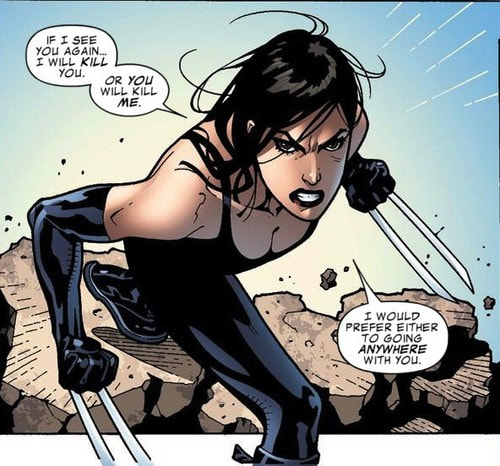
Akihiro: Daken
The son of Logan and his wife Itsu, Daken was stolen as a baby (who Logan thought was dead) and raised by Wolverine villain Romulus. Daken has traditionally been a villain throughout his career, but he has had a few heroic moments, primarily starting after the Death of Wolverine arc. He has teemed up with his sisters Laura and Gabbie, an alternate future Logan (Old Man Logan), as well as Deadpool, to help heal Roosevelt Island of a mysterious disease with their healing powers. Afterwards he had other team-ups with Laura, which helped him lean more into the side of “anti-hero” than “villain”, and the two definitely bonded. After the mutant nation of Krakoa declared it’s independence, there is a scene where Logan, Laura, and Daken, are sharing a bonding experience and family game night by playing Russian Roulette (seeing as their healing factors actually prevent them from dying that way). He has been a part of the Brotherhood of Evil Mutants, the X-Men, the Dark Avengers, and the Dark X-Men. His powers include a healing factor (including disease and poison immunities), though unlike others of the Wolverine family, his healing factor is heavily influenced by his mental state. If he is feeling guilty about something, his healing is slower, making it generally weaker. He is in peak physical human shape (strength, endurance, speed, agility), but he does have superhuman senses, and ability to deal with extreme weather (due to his healing factor). He has bone claws, 2 on each hand, and one on each wrist. He has a similar telepathic resistance to Laura, but he also has trained himself to have a telepathic “trap” in his mind for unwelcome telepaths. He also has pheromone based powers as well, allowing him to subtly influence people, make them feel more sluggish, or feel whatever emotional state he wants. It also allows him to hide his scent so effectively that expert trackers like Wolverine, Warpath, and Sabretooth, can’t actually find him by scent if he doesn’t want them to.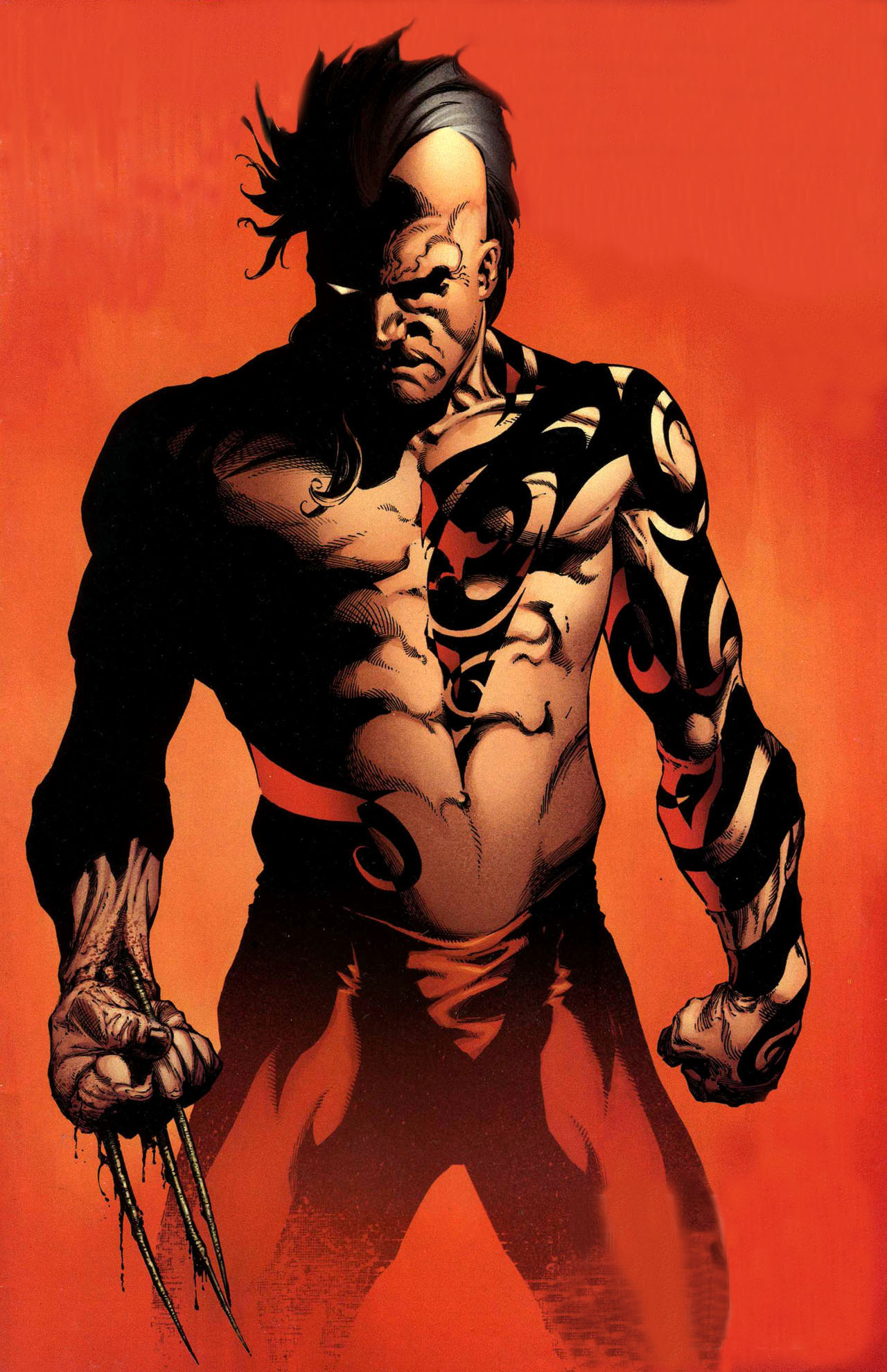
Gabrielle Kinney: Gabby, Honeybadger
Gabrielle, known most often as Gabby, is one of several clones of Laura, and they consider each other sisters, she was introduced with fellow sister/clones Bellona and Zelda. At the end of the arc, she was left in the care of Laura, to learn the ropes of being a hero. She is currently playing the role of sidekick to her big sister Laura, but has sprung out for teamups with the likes of Squirrel Girl and Deadpool. She also adopted a pet Wolverine named “Jonathon”. She has worked with the X-Men as far as teams go. Her powers include 1 foot long retractable bone claw on each hand, superhuman senses, and an immunity to pain. She has a healing factor, but it is unsure how strong it is, due to the fact that none of Laura’s other clones don’t have one at all.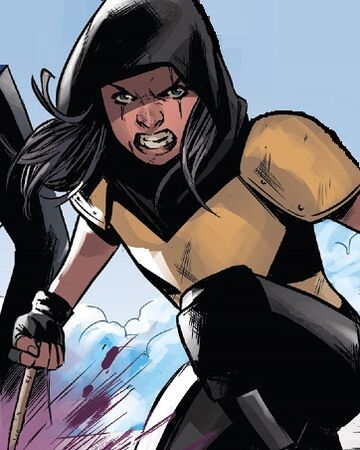
Dog Logan:
Dog Logan is the half-brother of Logan. He considers Logan weak because he was never motivated properly by their “pa” the way that Dog was. In the process of hunting down Logan, he got transported to the present day, where he met a future version of himself and tried to hunt down Logan again. Upon failure to kill Logan, he received a job offer to teach at the Hellfire Academy. He has no known powers, but it is unknown if time-travel has affected his aging at all. 
Honorable Mentions:
In here, we’ll have some quick “honorable mentions” of characters who are family, but have little to no serious impact in the comics, or are rather minor characters that are likely to not be mentioned in the future.
Folkbern Logan: A distant viking-age ancestor of Logan, had a brief run in with Thor
Itsu: One of Logan’s (now deceased) wives, mother of Akihiro/Daken
Erista: The son of Wolverine and a woman from one of the Savage Land tribes of humans
Raze Darkholme: The son of Logan and Mystique
William Downing: The son of Logan and Dolores Downing, took the name Gunhawk
Sawfist: The son of Logan and an unknown Mexican woman.
Cannon Foot: The son of Logan and an unknown woman
Shadowstalker: The daughter of Logan and an unknown woman
Fire Knives: Daughter of Logan and an unknown woman
Amiko Kobayashi: The adopted daughter of Logan, in care of Yukio Yashida
James Hudson: James Hudson, better known as the Canadian hero Guardian is the cousin of Logan
Shogun: A sliver of Logan’s soul, resurrected and given form to be an assassin for the Hand
Sabretooth: In the Fox movies, Sabretooth (Victor Creed) was Wolverine’s half brother, combining the roles of Sabretooth, and Dog Logan into one character.
Special Note:
A special note here, completely unrelated to the blog, is that I have a new project starting up. I will be co-hosting a comic podcast with musician, producer, photographer, gamer, and fellow geek, Tombstone da Deadman. I’ve covered his music in the past, and have actively followed his projects since first discovering his music. He also co-hosts a podcast with SPJ, called “Black Culture Geekz”. Our first episode should be coming out rather soon, but I can reveal to you, our podcast name:
The Passing of the Mantle
This was something that came up in a comment on a friends facebook status recently. And it’s the fact that Superhero names seem to get passed on more than the village bicycle. Don’t believe me, well, we are going to go over a few examples of it.
Batman: Bruce Wayne or….
We’re jumping right in to one of the big ones. When you think of Batman, the first thing that comes to mind is Bruce Wayne. But, this hasn’t always been the case. And no, I’m not talking about alternate universes (Thomas Wayne) or future Batman’s (Damian Wayne, Terry McGinnis). I’m talking, main reality, present era (well not necessarily “present” but still fairly recent) people.
In 1993, we saw Bane break the Bat in the Knightfall story arc. But Gotham needs it’s hero. In comes Jean-Paul Valley Jr, better known as the vigilante Azrael to fill the void as Batman. You also saw former Robin, Dick Grayson (Nightwing) fill in as Batman on multiple occasions. While all the Robin’s have some legitimacy to the title of Batman, until Damian Wayne came along, Dick Grayson was the heir apparent (and even Damian considers Dick as the only other legitimate heir). During the “Battle for the Cowl” story arc, Jason Todd (Red Hood) took up the mantle of Batman, and gave Gotham his own brutal form of justice. He even built his own Batcave where he would torture and starve criminals to death.
As you can see, we have 3 other people who have taken up the title of Batman here, but if you look at the “almosts” and “could have beens”, you have other alternate versions like Tim Drake as a possible/future Batman (referenced in JLA, Teen Titans, Sins of Youth, and Supersons). There was also a bit where Commissioner Gordon was wearing a mech Batman Suit when Bruce was suspected as dead. Either way you look at it, while Bruce Wayne may be Batman, Batman isn’t necessarily Bruce Wayne. Honorable mention to the Batman title, are all the Robins. Dick Grayson, Jason Todd, Tim Drake, Damian Wayne, Stephanie Brown, and in one weird story arc, Bruce Wayne himself.
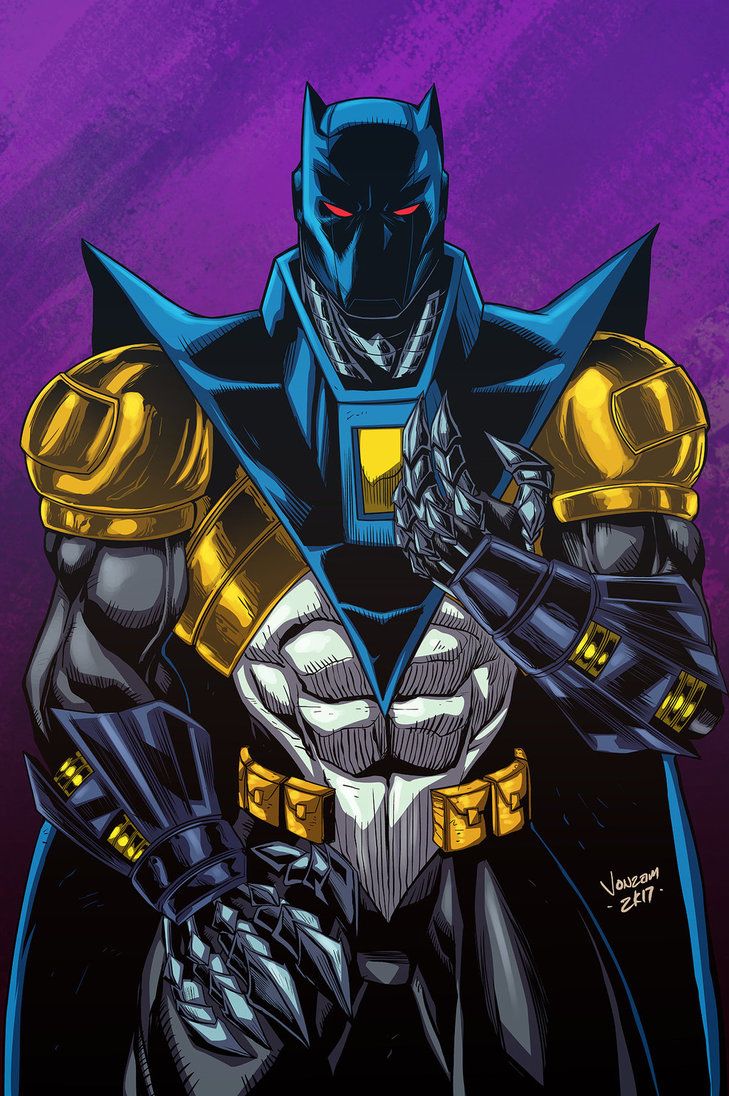 Azrael as Batman
Azrael as Batman
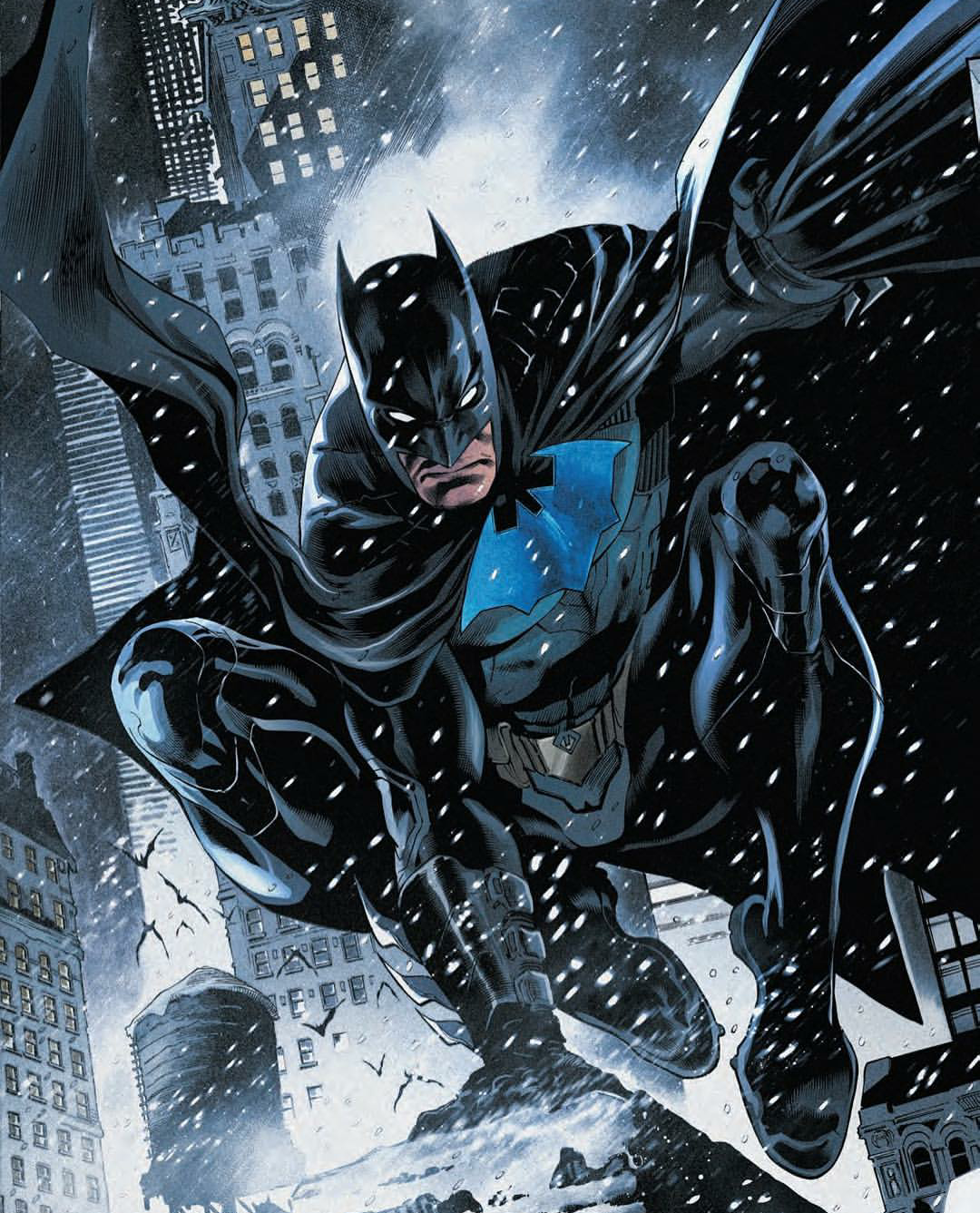 Nightwing as Batman
Nightwing as Batman
Spider-Man: Clones, clones, and surprisingly, not clones?
Spider-Man has a long history of doppelgangers and clones throughout his rather long history. Many of which died rather quickly, or faded and disappeared. But a couple of them stuck around for quite a while, and had a significant impact on the Spider-Man mythos. And as much as I try to avoid alternate realities for this argument, due to the rather regular of cross-reality team-ups of Spider-People thanks to the “Web of Fate”, and regular dimension hopping, it’s going to be hard not to bring up a couple of them (I’m going to limit this though, so we won’t necessarily see every alternate Spider-Man, most of which are still Peter in other realities).
First and foremost, we’re going with the guy who started off in the Ultimate universe (Earth 1610) who is now a staple in the main universe (Earth 616). Miles Morales, who took up the mantle of Spider-Man after Peter Parker died in the Ultimate universe, and though it started off rough, he eventually got embraced by those who knew Peter. After the events of Secret Wars, Miles became a part of the 616 universe, and unlike Peter, actually has many people who enjoy his presence (possibly because they’ve gotten used to it after all this time). Our next one is someone who has been Spider-Man, but rose to prominence during the “Clone Saga” as the Scarlet Spider, aka. Ben Reilly. When Peter became a father, and both Peter and Ben both being tricked into believing that Ben was the real Peter Parker, Peter retired from superheroing to focus on his family, and Ben took up the title of Spider-Man. Two other’s I am including in the Spider-Man are actually villains of the Spider. Otto Octavius, in the “Dying Wish” story line, swapped his brain into Peter’s body, and Peter’s brain into Otto’s body (and then Otto’s body died). Upon being given a new chance, Otto actually embraced being the hero (though a rather brutal one, who ruined Peter’s standing in the superhero community) and became the “Superior Spider-Man”. Eventually he sacrificed himself (and transferred his mind into a new body) for the greater good allowing Peter Parker to retake control of his body. The other villain I’m going to mention, has taken on the role of Spider-Man more than once. Sergei Kravanoff, aka. “Kraven the Hunter”. In the Kraven’s Last Hunt story line, he put Peter into a coma for two weeks, and took up the Spider-Man mantle. Desperate to prove he could be a better Spider-Man, he stalked the night, and beat criminals in a rather brutal fashion. When Peter got out of his coma, and the grave he was buried in, Kraven relinquished the title. And then in the recent Amazing Spider-Man story line “Hunted” upon being defeated by Peter, he put on the Spider-Man costume, and faced his clone/son, and took the beating (giving Peter and many of the other animal-based villains a chance to get free), resulting in his own death. He was then unmasked by his son/clone, who then took up the name Sergei Kravinoff, and the title Kraven the Hunter.
An honorable mention is the Gwen Stacy of the Earth-65 universe. She started off going by Spider-Woman (and often interacted with 616’s Jessica Drew Spider-Woman), though upon revealing her identity, became nicknamed Spider-Gwen. Her identity is still mostly secret in the 616 universe, so there she goes by the “Ghost-Spider”. Also on the Spider-Woman train, you have the Jessica Drew of the Ultimate 1610 universe, who is a female clone of Peter Parker and at the start, had all his memories (with the disorientating fact that her memories were as a male). And Kaine Parker (another clone of Peter Parker) while not having been Spider-Man, has also shared the Scarlet Spider name with one time Spider-Man Ben Reilly. This doesn’t even go in to the other clones or the other realities (Billie Braddock/Spider-UK, Miguel O’Hara/Spider-Man 2099, Peter Parker/Spider-Man Noir, Peter Porker/Spider-Ham, Pavitr Prabhakar/Spider-Man India, amongst many others).

Miles Morales as Spider-Man
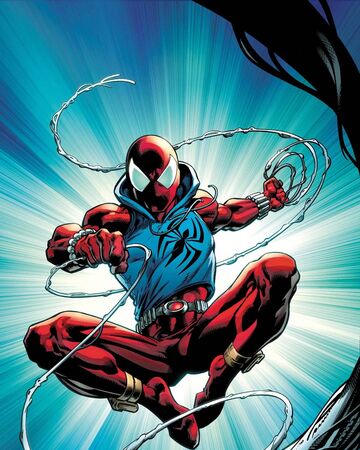
Ben Reilly as Spider-Man
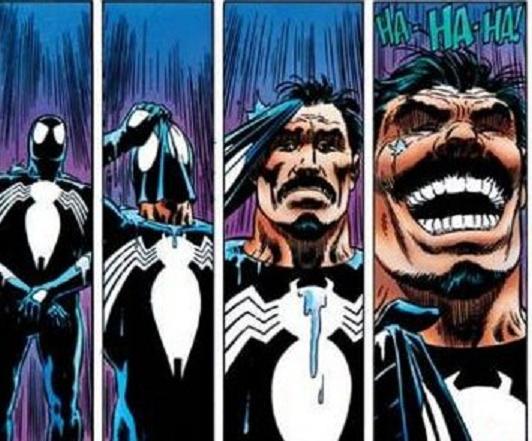
Kraven the Hunter as Spider-Man
Captain Marvel: Not Always a Kree, Not Always a Man
This is one that has caused some controversy, but mostly by butt-hurt ass-cheetos. Because in the MCU, they went with the Carol Danvers Captain Marvel. And all these fuckers were all “But Captain Marvel is a GUY”. And Captain Marvel was a guy, multiple times. But was also a girl. Multiple times. It’s a name that has been passed around quite a fair bit, all in the same prime 616 universe.
Let’s start with the OG. Captain Mar-Vell of the Kree Imperial Militia. Initially sent to spy and report on Earth as they start developing space travel, he got tired of the Kree’s plans towards Earth, aligned himself with Earth’s heroes, and used his powers for good. Jim Starlin (more can be found on him HERE) revamped the character into a cosmic hero, and wrote him up until the graphic novel “The Death of Captain Marvel”. After Mar-Vell was killed, the second Captain Marvel rose (and first human Captain Marvel). Monica Rambeau used her energy transformation abilities to fight villains. Monica kept the name Captain Marvel up until Mar-Vell’s son took over the title from her (in which Monica then went by Photon, than Pulsar, and now currently, Spectrum). The third Captain Marvel was the genetically engineered son of Mar-Vell, known by his name Genis-Vell. Eventually, Genis-Vell goes crazy and threatens to destroy the universe. He also does destroy the universe, and re-creates it (with some anomalies). One of the anomalies was that he now had a sister, who became the fourth Captain Marvel. Phyla-Vell takes the reigns of Captain Marvel rather briefly. She took on the name Quasar after the original one was killed, and then the name Martyr before her death only a couple years after her starting her time as Captain Marvel. The fifth Captain Marvel was actually a Skrull operative named Khn’nr (for those who don’t know, the Kree and Skrull have been at war pretty much since the two space-faring races met). So how did a Skrull take on the title of traditionally Kree heroes? Well, Skrulls lock on to the DNA of another being, and shapeshift into them. The downside (for the Skrull empire) is, sometimes the Skrulls take on the personality of the person they shape-shift into, if they don’t have the proper mental conditioning. Khn’nr did not have the mental conditioning to handle this, causing his own personality to be erased, and the personality of who he shape-shifted into (the dead hero Mar-Vell) became dominant. During the Secret Invasion event (where the Skrulls tried to take over Earth, with many of their operatives taking over the roles of many heroes), he fought, and died, alongside the heroes of Earth against the Skrull invasion. The sixth Captain Marvel went back to the Kree, with the hero Noh-Varr. Originally, Noh-Varr was part of the Dark Avengers team. Upon discovering the Dark Avengers were all criminals (this was when Norman Osborne lead SHIELD and many heroes were hunted as criminals, while criminals took their identities), he had quit. Eventually Noh-Varr was designated the Kree Protector of Earth, and stopped being Captain Marvel and took up the name Protector. He has since changed his hero-name to Marvel-Boy. And this leads us to the SEVENTH (and current) Captain Marvel, Carol Danvers. For years she was known as Ms. Marvel (and had also gone by the names Binary and Warbird), the half-Kree, half-Human heroine has taken on the title, and worked to honour the legacy, of Mar-Vell. Carol is also the Captain Marvel of the MCU (and the one people freaked out about because “Mar-Vell was a Dude” even though he’s been dead since the 80’s). Since taking the name Captain Marvel, she has kept the name, making her the third longest tenured Captain Marvel having been the Captain for 8 years (behind only Mar-Vell who held it for 15 years, and Monica Rambeau who held it for 11 years).
I am going to give a quick honorable mention here is going to Kamala Khan, who has taken on the name Ms. Marvel, the old name of the Carol Danvers, the current Captain Marvel. But as you can see, Captain Marvel has had seven different characters take on the name. That’s one of the highest I can think of outside of the characters that are part of an army of sorts (the Nova Corps for example, where every member is known as Nova, or any of the Lantern Corps in DC, where they are all Green/Red/Yellow/etc. Lanterns).
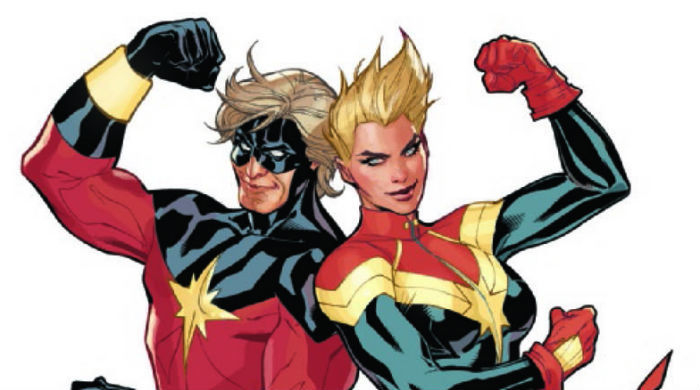
Mar-Vell and Carol Danvers as Captain Marvel
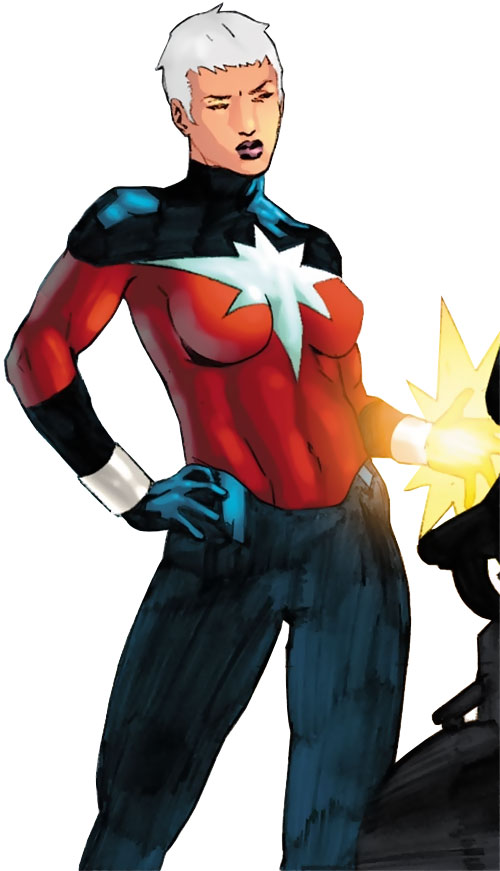
Phyla-Vell as Captain Marvel

Monica Rambeau as Captain Marvel
Superman: Man of Steel, Metaphorically AND Literally
Superman is most commonly associated with Clark Kent, and eventually in the future, Jonathon Kent (Clark and Lois’s son, and Damian Wayne’s moral conscience in the Super-Sons series). And while there are many other versions of superman from alternate realities, I’m going to focus on a couple that have taken on the role of the Man of Steel in the main continuity (whichever Earth it was at the time, as the various Crisis’s have definitely impacted things).
First up, we are going with John Henry Irons, aka. Steel. He never technically used the name Superman himself, but he was publicly lumped in with the “Superman Impostors” after the Death of Superman story. He was a former weapons engineer who became a construction worker (because he didn’t want to be responsible for the death of others). His life was once saved by Superman, and he built himself an armor that allowed him toe be (almost literally) “The Man of Steel” after Superman’s death, and as a tribute to Superman, he wore a cape and the emblem of the House of El. The Eradicator was one of the other Superman impostors after Superman died. A weapon defeated by Superman on Warworld, he had cloned Superman with all his abilities (except the ability to absorb energy from the sun). He ended up keeping Supermans body as a battery. He did end up sacrificing himself to save Earth, becoming the hero that Superman also was. Another of the “Superman Impostors” was Hank Henshaw, also known as Cyborg-Superman. Primarily a villain, he once tried to nuke Metropolis, and actively worked to ruin Superman’s reputation. The last one I’m going to mention here is Conner Kent, Kon-El, or more commonly, Superboy. A half Kryptonian clone of Superman (Half Clark Kent, Half Lex Luthor), he took up the mantle of Superman after Clark’s death. When Clark returned to life, he was the one who dubbed Conner Kent “Superboy” and eventually treatedhim as family, giving him the human name Conner Kent (so he could be Clark’s cousin), and the Kryptonian name “Kon-El”.
As you can see, there has been plenty iterations of Superman who weren’t Clark Kent in the main continuity as well. And as with the others I’ve done, this isn’t really an extensive list, or super heavy into alternate earths (except for Spidey, but again. Due to the Web of Fate, Web Warriors, the Inheritors, and Madame Web, it’s hard not to at least semi-link those together). So sometimes, when you’re talking about a character, while you can usually assume it’s the main guy, sometimes you just have to clarify which character you’re talking about.
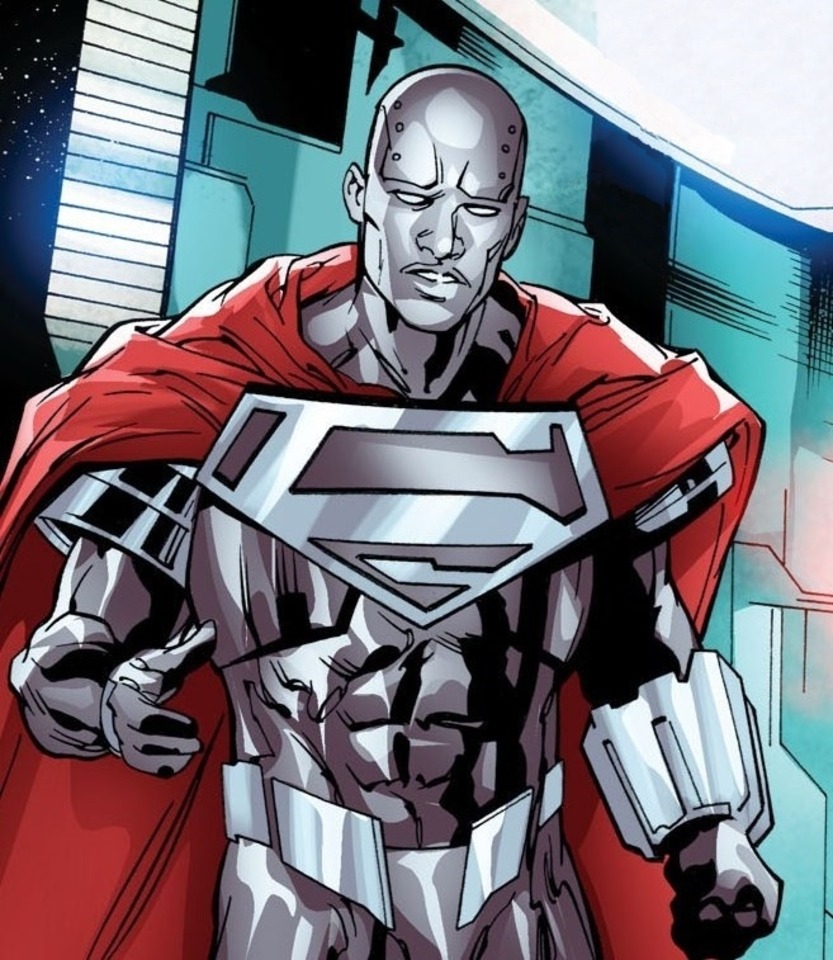
Steel as Superman

Hank Henshaw/Cyborg Superman
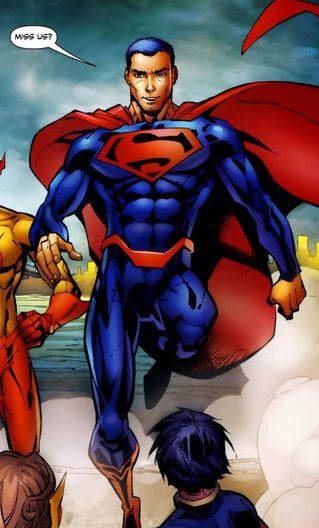
Conner Kent/Kon-El as Superman
Honorable Mentions:
There are definitely other characters I could have touched on, but didn’t. Among them are Hawkeye (Kate Bishop and Clint Barton), Daredevil (Matt Murdoch and Danny Rand), Iron Fist (Danny Rand, Orson Randall, and many others. It’s a title passed on every 33 years or so). Flash (Wally West, Barry Allen, Jay Garrick, Bart Allen), Iron Man (Tony Stark, Arno Stark, Jim Rhodes, Victor von Doom), War Machine (Jim Rhodes, Frank Castle), Batwoman (Kate Kane, and Kathy Kane). Like, this is just a thing in comics. It allows them to retire characters, or kill them off (temporarily or permanently) and still be able to use the character in some fashion in comics still.
Toxic Fandom
Todays subject is something that affects pretty much everyone. Everyone enjoys things. And there is nothing wrong with that. Finding things to be passionate about, and enjoying them is one of the perks of life. But then you have those people. Those. Fucking. People. The ones who make everyone hate those fandoms. Hate people who enjoy those fandoms. Make people not want to get involved with those fandoms. And there are many types of those people. And these people are in EVERY fandom. So let’s get started.
What Is A Fandom:
A fandom can be anything that has a following of people. The most common fandoms that people “identify” as fandoms often involve comics or TV series. Common examples would be the Supernatural Fandom, or Marvel and DC Fandoms. But it’s not just those, fans of video game series would be a fandom. Sports fans, would in fact, be a fandom (It’s just not often referred to that, because it’s not “nerdy” or “geeky” to be a sports fan, compared to what most people associate with the word fandom).
What Makes a Person a “Toxic Fan”:
This is definitely a loaded question. There are many ways a person can be a toxic fan. From threatening and making fun of fans of other things (example: Philadelphia sports fans and Pittsburgh sports fans). Or gatekeeping (“Oh, if you don’t know who wrote the Superior Spider-Man run, you’re not a real Spider-Man fan”). It could even be “My guy can beat your guy no matter what” where it goes beyond friendly talk (I know my friends and I will trash-talk each other all the time. So we’ll say things like “Oh yeah, well, Doctor Doom would beat Thor any day of the week.” “Oh yeah, fuck you, Old King Thor would stomp God Doom.” type thing.) What I’m talking about here, I’m going to use the most common examples I see in comic groups, Dragonball Z fans (especially when it comes to Goku) and Batman fans. Now, before you jump on me, I’m aware that it’s NOT ALL FANS. But these toxic fans are definitely amongst the loudest fans (which makes them seem like the large majority of them), and the minute you agree that “their guy” can’t win, no matter what, they immediately go into attack mode. And don’t get me wrong, it’s not just DBZ and Batman fans, every fan group (regardless of show/comic/sports team/esports team/whatever) has fans like this.
Why I Believe that Gatekeeping is Among the Worst Toxic Fan Traits:
This one is a personal one for me. When I was younger (in my early teens), I’ve been a bit of a gatekeeper. I’m not happy about that, I’m not really proud about that, but it happened. And having been on that side of it, I kind of realize (especially now that I’ve grown up, and matured a fair bit) how incredibly shitty it is to do. Not everyone is going to be as invested in something as you, and that is okay. And you aren’t always going to be as invested in something as someone else, and that doesn’t mean you can’t also enjoy that thing. Gatekeepers generally stop people from being interested in those things. If you constantly complain about how there aren’t enough people around you interested in your favourite comics, but then turn around and rip on anyone interested in it because “they don’t know (x) or (y) about it, and haven’t read (z) about it”, you are the problem. If someone is just getting into your fandom, EMBRACE THEM. Ask them what drew them in, what they like about it, ask them if they have any questions. Worst case scenario, you never end up talking to them again. Best case scenario, you have made a friend, or even an acquaintance that you can discuss this with, and that you get them more involved in the things you like. Getting in their face about not being as into it as you are, is going to drive them away, make them HATE the thing you like, and make them associate people who like that, with being fucking assholes. But the worst thing about Gatekeeping, is that it does nothing good, and if anything, actually shrinks the fandom. And I say shrinks the fandom, because people who are just getting into it (and aren’t around gatekeepers, whether it’s them just getting into it on their own or with one or two friends), it makes them back away saying “Is everyone into this like that? I don’t want to be associated with that.” and then even if they don’t hate it, they stop enjoying it.
The Personal Attacks:
This is definitely something that happens. In extreme cases, it could be physical attacks, but most often it’s done online. This one is particularly strong in Facebook groups where differing opinions basically result in getting attacked. People insult each other, and trash any character that isn’t their favourite. The whole “likes” thing kind of encourages an “I’m right, the likes prove it” kind of mentality, turning things into almost a popularity contest. This does lead to certain characters getting that reputation, and then as it gets more vocal, leads to that stereotype of those fans (again, Batman fans with the “Batman with prep beats EVERYONE” type thing, or DBZ with Goku or Vegeta). Sports forums get this same kind of vitriol, except it tends to be against certain players, whole teams, and entire fanbases. The unfortunate thing about this, is that all these are often fairly open/public threads, and it makes anyone who sees it wary of engaging in conversation, out of fear for being attacked because they like Green Arrow more than Hawkeye or something like that.
Diversity and Changes:
Now this one is definitely more towards the comic communities, but anytime you see changes in a character (Miles Morales as the new Ultimate Spider-Man, or Jane Foster as the new Thor, or Nick Fury Jr who was half-black). Now I get maybe being skeptical of a character when there is going to be a fundamental change to the character. But these were either completely new characters, or a different character taking on the mantle of a more known superhero, and yet the overall response was extremely negative when it first came out. Because it was different. Jane Foster Thor had really strong sales, but if you went online, you would see people rail on about how it was just “Marvel pushing their SJW agenda, and they don’t know how to create new characters so they ruin old ones.” And moving on to new characters, the new New Warriors announced by Marvel, has also received a lot of criticism because they “aren’t good characters” (the comic isn’t out yet, they only have a short bio and sketch to go off of) and that “Marvel shouldn’t create new characters, only use the ones they’ve already got.” Ultimately, toxic fans are always going to look for something to be upset about.
Overall:
Every fandom has it’s toxic fans. They suck. If you’re in an online group, and it happens to be toxic, leave it. If you follow a page and they start getting toxic, unfollow them. You don’t need that shit in your life. Find a group or page that isn’t toxic, and just enjoy it for what it is, a group of people looking to smile, laugh, and enjoy a little discussion. If you don’t know where to start, check out the Reaper Life Comic Book Multiverse, it’s full of good people, and it is incredibly rare for there to be an argument of some kind that isn’t some friendly ribbing (and by rare, I mean once in the last 5 years has there been a time where the admins have had to step in and settle a problem).
How Politics Shape Comics
There is always this argument that “Comics are meant to be fun and entertaining. Don’t ruin them with politics”, and yet comics as we know them, have always been political. And the writers and artists who have done the work, have put their beliefs into it. You have artists like Art Spiegelman and his iconic work Maus, to the authors and artists of early Black Panther being told they need to have “more white characters” leading to Black Panther vs the KKK (technically, the KKK were white characters). From churches in the late 40’s putting out comics warning of the “dangers of Communism” to comics about Vietnam War soldiers. Hell, we even have comics about G.I. Joe, a Real American Hero. Marvel has had SHIELD fight their Russian counterparts SICKLE. Avengers vs the Winter Guard. Or the Avengers teaming up with The People’s Defense Force (one of the main Chinese Superhero teams). Politics has always, and likely will always, be a part of comics.
Ayn Rand’s Objectivism, Influence on Steve Ditko and Zach Snyder:
So let’s just start off here with what the philosophical belief of Objectivism is. Objectivism, as a philosophy was formed by the thoughts of Ayn Rand. The 4 main pillars of Objectivism are the following:
1. Absolute Reason
2. Objective Reality
3. Individualism and Self-Interest
4. Laissez-faire (free market, or “hands off”) capitalism
Ayn Rand once described Objectivism as “the concept of man as a heroic being, with his own happiness as the moral purpose of his life, with productive achievement as his noblest activity, and reason as his only absolute.” The works of Atlas Shrugged and The Fountainhead stress rugged individualism and the success of the individuals over the good of the group. The reason this is important, is because Steve Ditko was an avid believer in Ayn Rand’s philosophy of Objectivism.
“But how does this affect comics?”
Well, if you look at the works of Steve Ditko, you notice how he prefers the self-made individualists. He also had a very “black or white” “Good or Evil” view of the world. There was no compromise. Let’s look at Spider-Man (one of the many co-creations of Ditko and Stan Lee). Anyone who stands by and watches evil instead of standing against it, is just as responsible for evil. A young Peter Parker stood by, and watched evil happen (the mugger at the store). That mugger murdered Uncle Ben. That was a huge motivation for Peter to become Spider-Man. He was ALWAYS looking to do the right thing. It also influenced Ditko in the sense that he despised characters that were morally confused, and refused to portray those characters in a heroic fashion. His thoughts on individualism and self-made capitalists showed in the supporting casts of Spider-Man, J. Jonah Jameson, and Norman Osborn. His beliefs were unwavering, and would eventually lead to him quitting Marvel (and his infamous feud with Stan Lee). He showed his beliefs in the creation of characters “Hawk and Dove”. The original Hawk and Dove were two brothers, with opposing ideas. Hawk was all about being tough, and aggressive, while Dove was more intellectual and passive. But Ditko was known for drawing Hawk in what he perceived as a positive light, being strong and had strong conviction. Dove he drew as weak, and almost, effeminate (instead of as the “Brains and the Brawn”, like many other similar duo’s). Eventually, he left DC as well due to conflicts because of his political and philosophical beliefs. But no characters represented Ditko’s political and philosophical beliefs as Mr. A, and the watered down Comics Code Authority approved, Question. The Question originally in Charleston Comics (before DC bought them), was about finding the truth at all costs, and had rigid, unchanging, beliefs (even espoused in an episode of Justice League Unlimited “Everything that exists has a specific nature. Each entity exists as something in particular, that has characteristics that are part of what it is. A, is A. But no matter what reality he calls home, Luthor, is Luthor.” His character Mr. A is that belief taken to a more extreme, which ironically makes him a very passive character (something he has stated he wasn’t a fan of) as he lets the villains die, but doesn’t necessarily take an active stance in bringing them to their deaths.
Movie Director Zack Snyder also has many Objectivist beliefs, and it also shows in his superhero movies, such as Man of Steel where Clark’s parents are actively telling him “you don’t have to go out there and do anything. You don’t owe them anything”. It shows in his adaptation of the DCEU, leading it to be more dark and gritty than many previous adaptations of the characters.
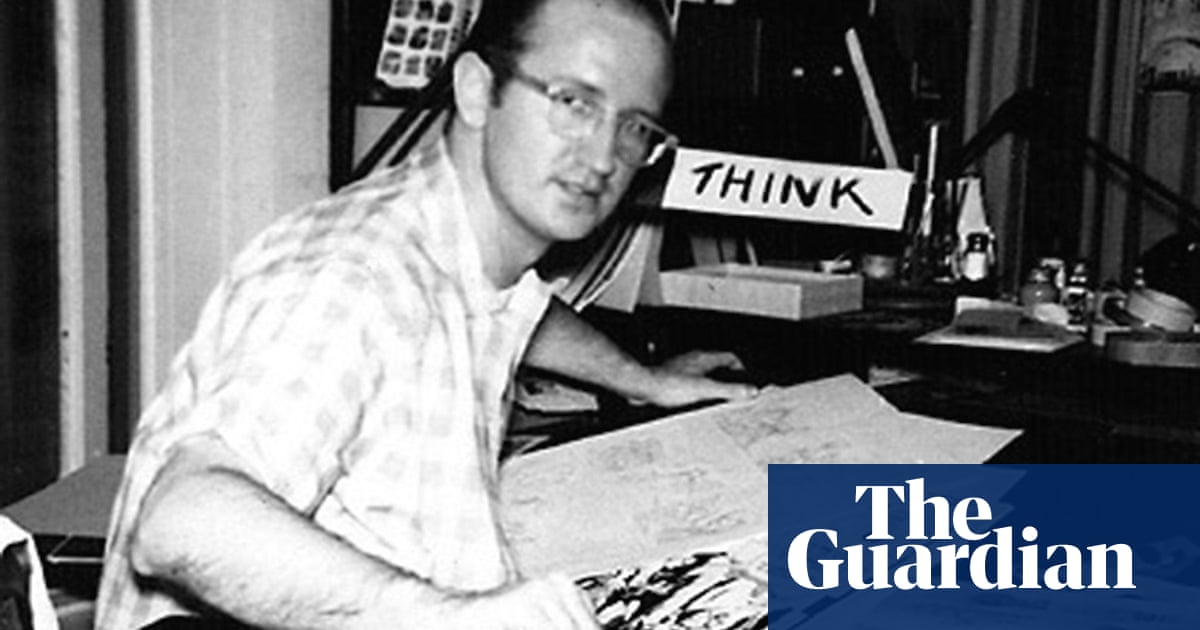
Stan’s Soapbox (A History of Stan Lee Putting Politics in Comics):
Stan Lee has been well known in the past to write monologues in Marvel Comics These were known as “Stan’s Soapbox”, and were used to let the readers know of various updates. But the were also used to espouse his personal beliefs. Here he often took a stand against racism and bigotry, he took stands against hate and preached love and tolerance of each other (even quoting the teachings of Jesus, Moses, and Buddha). He also regularly talked about how that even though the stories are meant for entertainment, if they didn’t insert their own beliefs into some of the characters and stories, they would fall flat. While he often asked readership if he should make the comics more political or not, his beliefs did seep through. Stan Lee was well known for talking to media, and doing convention circuits, and he was always open to discussing his creations. He regularly talked about characters with moral grey areas (such as Magneto, Namor, and Doctor Doom) and how he never saw them as villains, but people with their own problems, and different views.
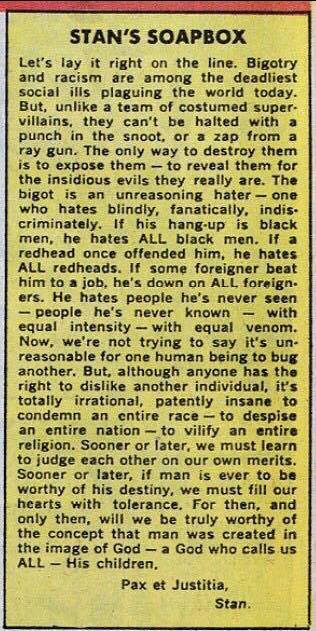
Hector German Oesterheld and The Eternaut:
The Eternaut was a comic written by Argentinian writer Hector German Oesterheld, and drawn by Argentinian artist Francisco Solano Lopez between 1957 and 1959. To understand this comic on a deeper level, you have to understand the Argentinian political situation of the time (you can understand it as a sci-fi comic without the political understanding, but the comic takes on a whole different feel when taken in context with the times). The late 40’s and early 50’s in Argentina was a time of mass prosperity, an increase in socialist ideology, and increased labour and civil rights. There was a military coup in the early-to-mid 50’s that attempted to kill the Argentinian president Juan Peron and forced him into exile. Supporters of Peron (called Peronists) were forbidden by jail sentence. Hector Oesterheld was a Peronist. The Eternaut 2 was written a bit later during what is known as the “Dirty War” which was a US backed Argentinian terror campaign that was based around fighting left wing figures and military organizations in the region (including outside of Argentina, such as the Pinochet coup in Chile). The politics of the Dirty War influenced the subject matter of The Eternaut 2. The veiled criticism of the government eventually lead to all four of Hector Oesterheld’s daughters, their husbands, and Oesterheld himself, “disappearing”, and they were presumably killed by the government for subversive activities (two of the daughters were pregnant, and the babies were given to Oesterheld’s wife after they were born). Oesterheld was quite literally killed, for being a social justice warrior.
The plot of the Eternaut is that there is an alien invasion of Earth, and that the people must work together to fend it off. The aliens have caused snow to fall, and if it touches your skin, you die. The aliens utilized other aliens through chips implanted in them, that would kill them if they didn’t fight for the main villains. The main protagonist, Juan Salvo eventually travels through time continuums, and is nicknamed the “Eternaut”, the voyager of eternity. It is fairly widely accepted that the invasions are meant to by symbolic of the military coups that the country had experienced in those years, and that he was symbolically attacking the Dirty War. Oesterheld often talked about how there was no single hero, but it was the group as the hero, which was said to be an allegory for the struggle of the working class against their oppressors (the aliens). The series is wildly popular in Argentina, and the imagery of Juan Salvo is a popular graffiti mural.
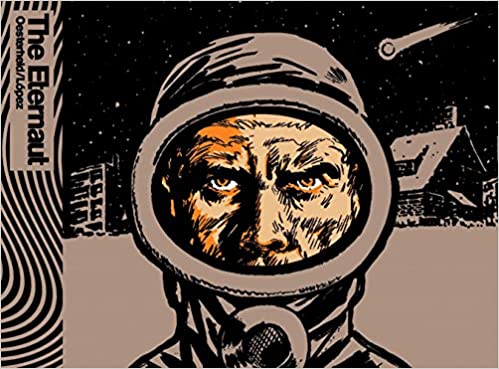
Captain America, Batman, Superman, Magneto: Political Origins and Political History:
For this bit, we’re doing a quick look at 4 major characters, and how either their main motives, or their origins, involve some form of politics.
Captain America: The character is literally a soldier who enlists to fight nazis. He has the famous cover of punching Hitler. His origins are rooted in anti-fascism. But then you have the comic arc “Civil War” where he takes a firm stance (which applies politically) “Compromise where you can. Where you can’t, don’t. Even if everyone is telling you that something wrong is something right. Even if the whole world is tell you to move, it is your duty to plant yourself like a tree, look them in the eye, and say ‘No, you move;.”
Batman: Batman is a character whose parents were killed in cold blood. When he grew up, he was known to take an anti-gun stance. “This is the weapon of the enemy. We do not need it. We will not use it.” When Batman was first written, he did in fact use guns and killed, but in 1940, Bill Finger (co-creator of Batman) decided that a “gunslinger Batman just doesn’t feel right.” The other aspect of the rise of the anti-Gun Batman was the growing criticism of the violence in comic books at the time (which later lead to the creation of the Comics Code Authority).
Superman: Superman stands for Truth, Justice, and the American Way. But his origins are a perfect allegory for immigration. After all, he is an illegal immigrant, who eventually attained citizenship in the US. And then later, got tired of every move of his being considered sanctioned by the US Government, and announced to the world, that he is no longer an American Citizen.
Magneto: While initially the big bad X-Men villain (and still more often than not, the example used when talking about the Mutant Boogieman), Magneto’s character origins are heavily political. He is a German Jew who lived through the Holocaust. From that young age, he decided “never again”. When humans started hunting down mutants, Magneto took the “never again” to heart and fought back in the only language he had seen previous oppressors (the Nazi’s) back down to. Extreme Violence. It is also worth noting that Magneto was also (rightfully) compared to Malcolm X, as the mutant struggle was an allegory to the civil rights movement of the 60’s.
X-Men: A Political Legacy:
The X-Men as a series, is rooted in politics and social justice. Their origins were a metaphor for the civil rights movement (with the X-Men being the representation of Martin Luther King Jr, while Magneto’s philosophy was in line with Malcolm X’s “By any means necessary”). But it wasn’t just the political philosophies that it matched up with. In the 60’s (and still today), people who look different, or are different, are often discriminated against. As they moved past that (kind of), you also openly saw LGBTQ+ representation actively within the X-Men with characters such as Northstar (the first openly gay character in Marvel comics, and one of the first in comics in general). Another X-Men character, Iceman is also openly gay. Other X-Men characters who are shown to be LGBTQ+ include Graymalkin, Anole, Mystique (who had to have a storyline altered because she was actually a he, and fathered Nightcrawler before the alteration, arguably making her the first functionally transsexual character), and Destiny. Then you have the Morlocks, a group of essentially social outcasts. Most of them have extremely limited mutant powers. In fact most of them have no mutant powers, their mutations are solely physical changes. Scales, or different coloured skin. Things that are mutations, but not anything that could be useful in a fight. This is a perfect example of discrimination, and a social commentary on how we treat people different from us. And then you have the whole concept of nation-states, and especially mutant nation-states. Nothing screams political intrigue like running a country, and dealing with internal politics. Whether this nation state has been Genosha, Asteroid M, Utopia, or Krakoa, the politics of nation-building has been at the forefront of the X-Men for many years.
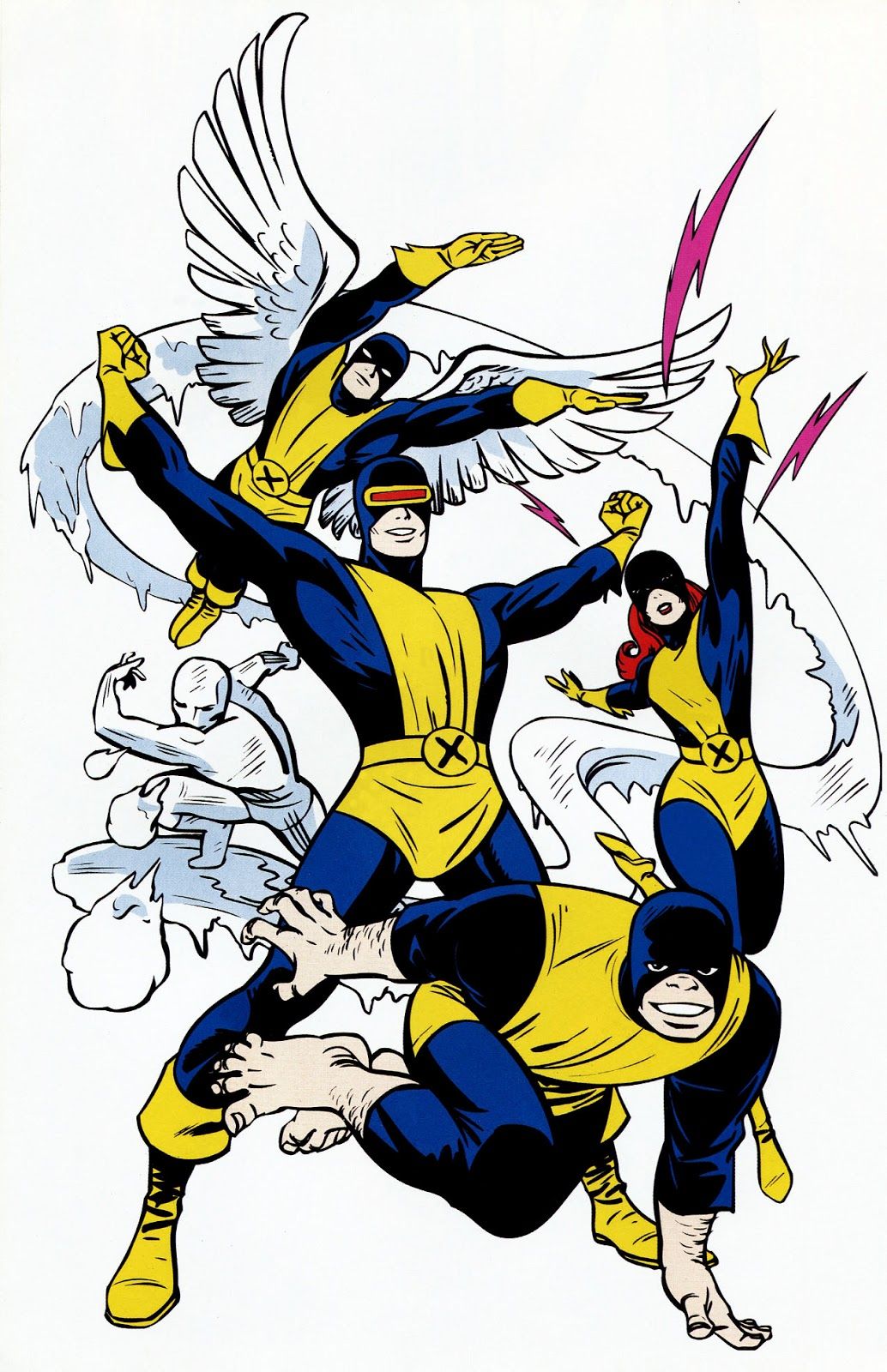
Scott Snyder and the Representation of Real World Issues
Writer Scott Snyder (no relation to film director Zack Snyder) has published comics ranging from Batman to Iron Man. Superman to the Justice League. Swamp Thing to Attack on Titan. He is very vocal on social media, but strives to be more balanced within the comics he writes. And yet despite that, he also makes a point of translating real-world issues into comics. He has touched on gun-violence and environmentalism to topics like police brutality. He has taken the subjects of climate change, biological warfare, and isolationism into comics. Scott Snyder has stated he can’t get as political as he’d like to with a character like Batman, because the character is meant to be a centrist independent, but a character like Captain America, due to his origins and his history, is a character that you can make openly political stories about.
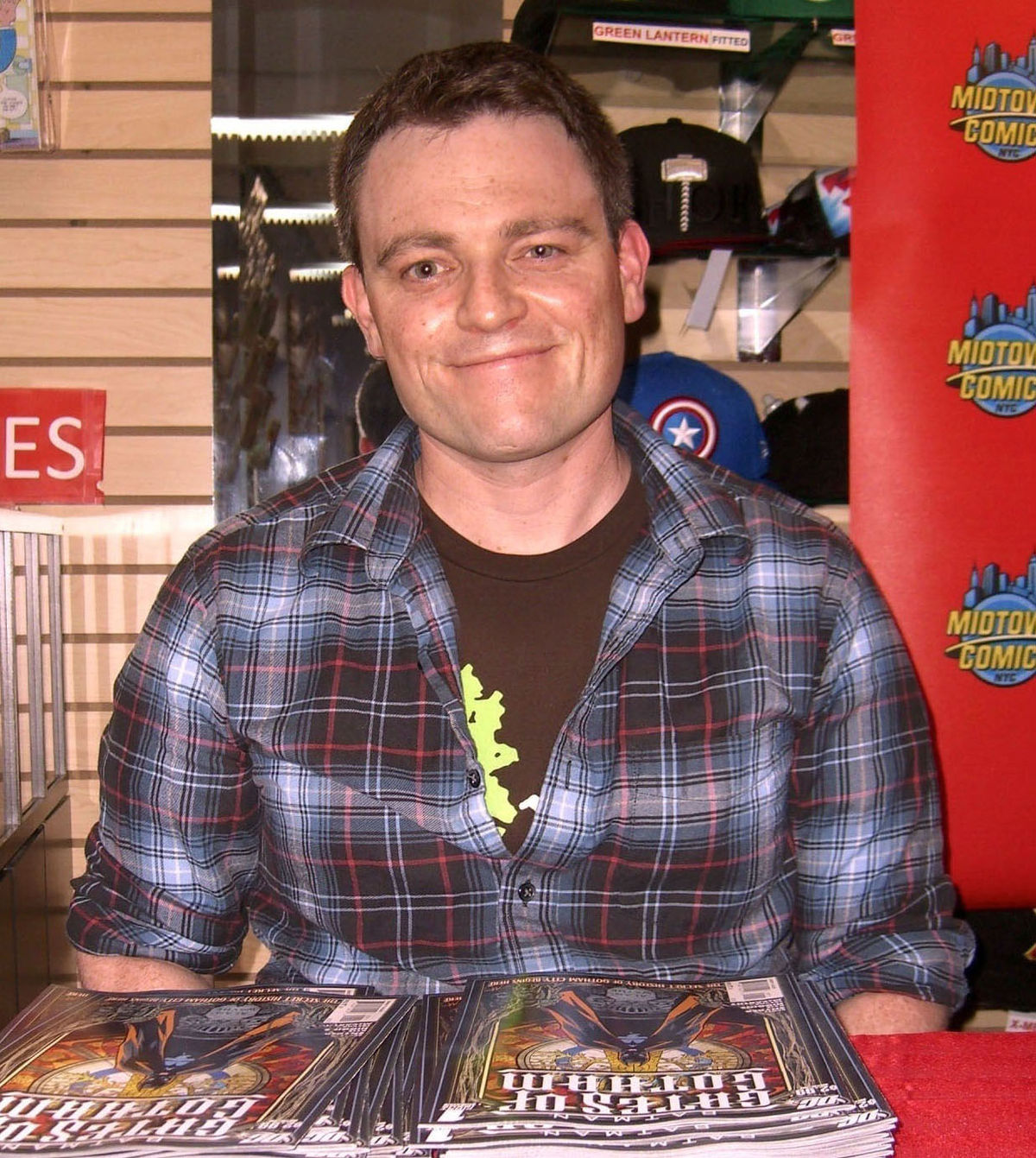
Quotes From Artists and Writers on Politics in Comics.
“All the arts are political by nature. Stories are created in a time and we are influenced by the times in which we create.” -Cecil Castellucci
“In my work, hiding in plain sight, is always how I feel about the world.” -Jimmy Palmiotti
“Politics are woven into the DNA of my series. I couldn’t write Green Arrow without being political. It would be untrue to the legacy of the character.” -Ben Percy
“We have to laugh a little uneasily … Every day that future looks a little more plausible.” -Mark Russel. For those who don’t know, this quote is in reference to his comic Prez. Prez is a series meant to take place in the US years after the Trump presidency, with the effects of his policy being shown everywhere (US/Mexico border wall, other countries isolating themselves from the USA, etc…)
“I try to write more about general trends. How we make ourselves useful to demagogues, or how good people can be coaxed into doing horrifying things.” -Mark Russell
“To expect writers to avoid subjects that gnaw at them is to not really understand what it is to be a writer.” -Mark Russell
“It seems to me that a story without a message, however subliminal, is like a man without a soul” -Stan Lee
“None of us lives in a vacuum – none of us is untouched by the everyday events around us – events which shape our stories just as they shape our lives. Sure our tales can be called escapist – but just because something’s for fun, doesn’t mean we have to blanket our brains as we read it!” – Stan Lee
“Those stories have room for everyone, regardless of their race, gender, religion, or color of their skin. The only things we don’t have room for are hatred, intolerance, and bigotry.” -Stan Lee
Other Characters that have Touched on Politics or Social Commentary:
There are definitely other characters who have a major part involve politics or social commentary. Louis Lane is a determined reporter, who isn’t shy of confronting “the powers that be” for a story, even if they don’t like it. Colossus had a storyline about how the differences between capitalist America and communist Russia was a severe culture shock for him (and he pointed out positives and negatives of both systems). Black Panther, and his Avengers team, deal with the fact that since he leads an Avengers team and isn’t a US citizen, that they get their support systems removed as “We can’t guarantee you have American interests at heart.” Sam Wilson, the Falcon, during his time as Captain America experienced a lot of hate due to the colour of his skin (both in the comics, and the writer of that series receiving threats from people). Iron Fist and Luke Cage, both in their series, and in their Heroes for Hire series, regularly tackle the issues of systemic racism, the wealth discrepancy (and how that dynamic changes interactions with the law and government), and being social outcasts. Green Arrow regularly comments about social justice and activism, and in the early days of Green Arrow/Green Lantern, would touch on subjects of drug use and poverty. And these are just examples from the two major publishers, but if you dig down into them, and into other publishers, you’ll see more and more political, philosophical, and religious influences throughout.
Legends of Comics: Jim Starlin
Today, we are going to talk about the legacy of comic writer and artist (in the entirety of the sense of those words. As far as a writer goes, he was a penciler, as well as the plot writer, and story writer. As far as artist, he was the main artist, as well as inker, and colorer), Jim Starlin. He may have been most known for his works in Marvel, but he has also done some impressive work with DC as well. So, we are going to dive into his legacies, both in the terms of characters he’s created (or co-created), significant story lines, some of his common tropes, and his impact on the comic universes today.
Personal History:
Jim Starlin was born in Detroit, Michigan on October 9, 1949. He served in the US Navy during the Vietnam War, and it was immediately after leaving the navy that he actually broke into the comic industry. During his off-duty time he would write, draw, and submit comics to various people, often getting recognized in fan publications, officially breaking in to the industry in 1972, when he sold 2 comics to DC. He often said that “Everything I learned about storytelling, I learned from Ditko or Kirby. But Ditko had the best story layouts.” He was one of the most iconic names of the Bronze Age of Comics, and grew up an active fan of the Silver Age artists and writers. His first job for Marvel was as the inker (or at the time, it was known as the “finisher”) of Amazing Spider-Man. As an inker, his job was to interpret, and copy over the pencil drawing. Sometimes it is exactly as was drawn by the penciler, sometimes the inker makes some changes (for better or worse). His work there got him his first main-artist (penciler) job on a 3 issue arc of Iron Man (where he introduced his first 2 Marvel character creations, Thanos and Drax the Destroyer). After drawing one issue of Captain Marvel, he was placed in charge of Captain Marvel as the plotter (which made him the writer/author of the story, and in charge of making the penciler, inker, and colorist, bring his work to life). In many of his early works, Starlin did everything, while other times he only did writing and penciling. In the mid 70’s, he submitted (and got published) a cache of stories with Star Reach, where he actively developed concepts involving death, god, infinity, and other metaphysical concepts, free from the Comic Code Authority and the heavy censorship of the mainstream comic companies. In the late 70’s, he helped create Upstart Associates, which was a shared studio space for comic artists. During this period, he also did a few works for DC, including the Legion of Superheroes and Detective Comics
In the 80’s Starlin did a lot more work for DC, starting in late 1980, when he co-created the supervillain Mongul. His other notable DC work happened in the late 80’s, when he took over Batman, creating KGBeast in his arc “Ten Nights of the Beast”, the miniseries “Batman: The Cult”, and culminating in his most iconic batman work “Batman: A Death in the Family”. Other DC work he did in the 0’s was The Weird, Cosmic Odyssey, and Gilgamesh II. In the early 80’s, he introduced a character called “Vanth Dreadstar” in the anthology Epic Illustrated, which eventually turned into a full comic series called “Dreadstar”. In the mid 80’s he contributed to a Marvel charity one-shot with a bunch of non-comic writers (including George R.R. Martin, and Stephen King) called “Heroes for Hope” where the proceeds went towards a charity dedicated to African famine relief. He also contributed to a DC charity one-shot (again, for African famine relief) called “Heroes Against Hunger”.
His later career is a bit less prolific, but still influential. In the 90’s he had started with the revival of the Silver Surfer series (which lead to the return of regular Starlin used characters, Thanos and Adam Warlock), which culminated in the crossover Infinity Gauntlet story. He also wrote Hardcore Station for DC in 1998. In the early 2000’s he wrote Marvel: The End, and also did some independent work with Devil’s Due/Dynamite (creating Cosmic Guard/Kid Cosmos). In the late 2000’s and early 2010’s he returned to DC working on a few different mini-series including the Death of the New Gods and the Rann-Thanagar: Holy War stories. He also took over as the writer for Stormwatch. In the mid 2010’s he did more work for Marvel on his latest series of Thanos graphic novels. In 2016 he injured his drawing hand, which has since limited him to writing stories only. When talking about that injury, he had this to say: “It takes me two minutes to write the sentence and will take the artist a day and a half to draw the scene. But there is a certain satisfaction to the drawing part … you get up from the drawing board at the end of the day and there’s this image there that wasn’t there before. That’s very satisfying and I miss that.”
Due to his creation of Thanos, and the legacy he left in the Marvel Universe, in the 2019 MCU film Avengers: Endgame, Starlin had a cameo as one of the survivors of the “Snap” in Steve Rogers/Captain America support group. He also co-wrote 4 published non-comic novels with his wife Daina Graziunas (whom he married in 1980, and is still married to today).
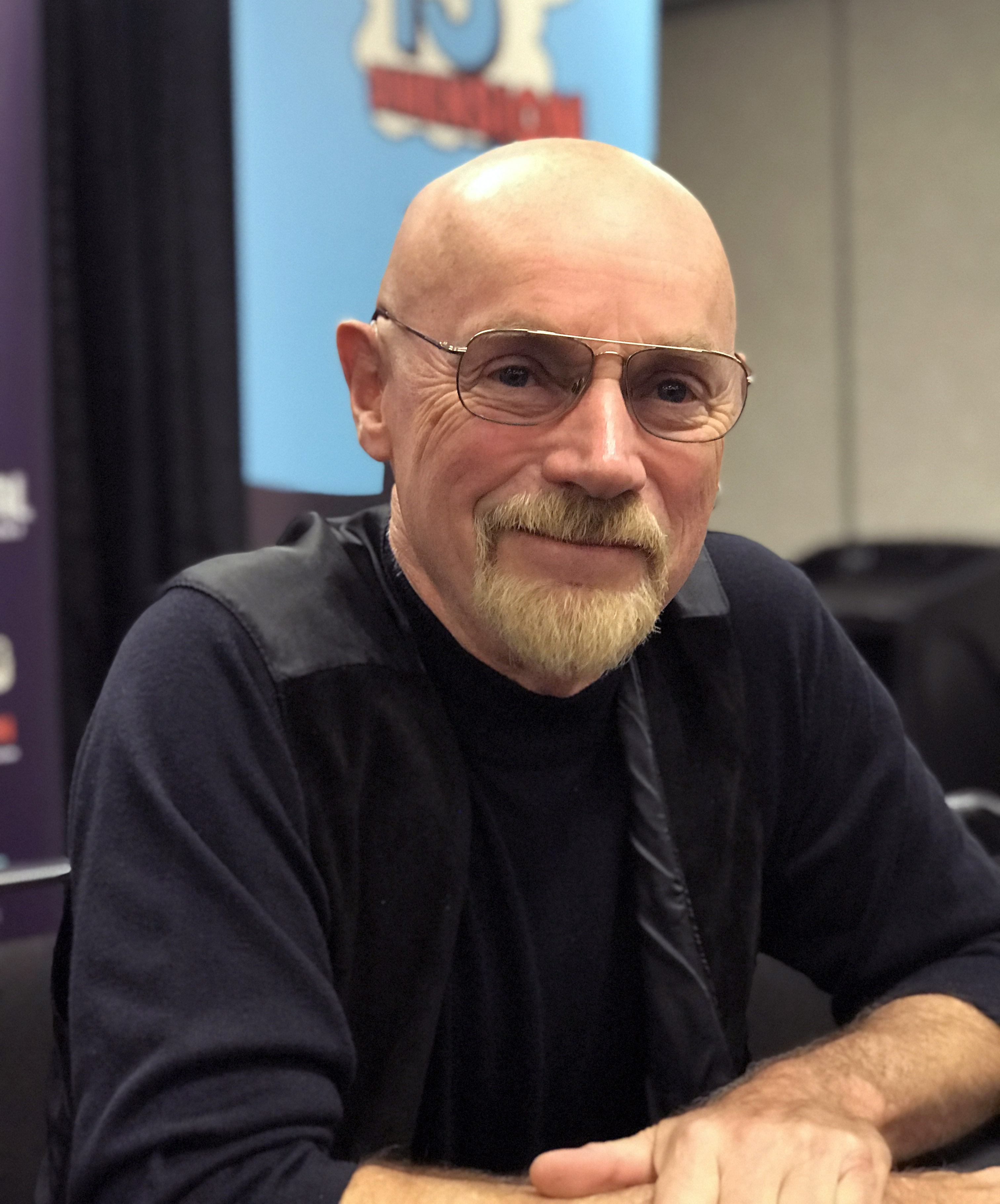
Characters:
Let’s start with the characters of Jim Starlin. Most notably:
Thanos (Marvel): Thanos is possibly one of the most iconic Jim Starlin characters. Thanos is the Mad Titan, the destroyer of worlds. The man who played god, on more than one occasion. He is the legendary Darkseid rip-off who is arguably more well known, and more popular. Ranging from his days in the Infinity Watch, to his box office billions with Avengers: Infinity War/Endgame, to his countless graphic novel trilogies, events, and other appearances, the Mad Titan himself, still is making an impact everywhere he goes.
Blood Brothers (Marvel): Two brothers who are alien prison escapees who have also served Thanos on occasion. Primarily an Iron Man villain, they have also fought Thing, the X-Men, Drax the Destroyer, and the Avengers at times. Once, they even teamed up with the heroes of Earth to fight off a bigger threat.
Deacon Blackfire (DC): Blackfire is a DC villain, who has primarily faced off against Batman. He claims to be over 100 years old, and is an established con-man with some mind control powers. He has continued to influence modern Batman appearing in both the New 52, and Rebirth.
Death (Marvel): While the concept of death wasn’t new, the character of Death (or Mistress Death, Lady Death, etc..) was introduced by Starlin. Debuting in Captain Marvel, Death became most associated with Thanos, and to a lesser extent, Deadpool. The personification of Death, that we all know (and in some cases, love), is another creation of Starlin.
Doppelganger (Marvel): A lesser known one for sure, but Doppleganger (known as Spider-Doppleganger) is a Spider-Man villain, with 6 arms and 2 legs. Razor sharp teeth, and a penchant for violence and destruction. He has teamed up with Magus (an evil manifestation of Adam Warlock), and Carnage on multiple occasions, he is a feared (if often underused) opponent.
Drax the Destroyer: A beloved member of the Guardians of the Galaxy, Drax is the Avatar of Life itself, a universal counterpoint to Thanos (the 616 Avatar of Death). His body was created by Kronos (Thanos’s grandfather) and had the spirit of Arthur Douglas put in (Arthur’s wife was killed by Thanos, and his daughter was also seemingly killed, though later revealed to have been saved by Thanos’s father Mentor). His sole purpose is to kill Thanos. In the MCU, he is an alien whose family was slaughtered by Thanos.
Gamora: The deadliest woman in the Galaxy, Gamora, adopted daughter of Thanos, is yet another creation of Jim Starlin. If Thanos is stirring up trouble, Gamora is sure to be there in order to help bring him down. She is also a member of the rag-tag Guardians of the Galaxy.
Hardcore Station (DC): Technically not a character, but it is a place. An outpost in space, known for corruption. It’s home to Comet Man (not a Starlin creation), but has also been visited by Adam Strange, Hawkman, and Starfire.
KGBeast (DC): Batman villain KGBeast first appeared during Starlin’s run of Batman. He is a master assassin, skilled combatant, and overall, just a beast of a character. He has been in TV shows and Comics, both as a Batman villain, and as a member of the Suicide Squad. He also almost successfully assassinated Nightwing in Tom King’s Batman Rebirth run.
Mongul (DC): Mongul is the lord of Warworld. He is feared on a galactic scale, and one of the few individuals who is as strong as, or stronger than, Superman. He has fought against Earth many times, but he has also waged war on the Sinestro Corps as well.
Nitro (Marvel): Nitro’s first major role was in Captain Marvel, where he was the one who ended up giving Captain Mar-Vell cancer (ultimately, and so far permanently, killing him). He has also played a major role in another significant Marvel event, causing the explosion that triggered the first Civil War (killing more than 600 civilians, destroying a neighborhood, and killing a couple members of the New Warriors).
Pip the Troll (Marvel): While he only really plays a role in stories involving the Infinity Stones, it always seems to be a universe changing role. A sometimes ally of Thanos, and an ally of Adam Warlock, he was a member of the Infinity Watch, in charge of protecting the stones. He has also been a part of X-Factor Investigations with Jamie Madrox (Multiple Man).
Shang-Chi (Marvel): While not exactly a major character, Shang-Chi saw a lot of popularity in the 70’s when the Kung-Fu trend in North America was going on. Shang-Chi has seen regular usage (even if in lesser roles) since then, including appearances in Agents of Atlas, Heroes for Hire, and Secret avengers. With an upcoming MCU movie, his popularity and usage is likely to pick up.
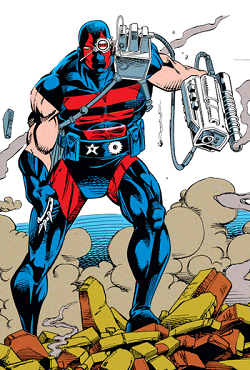

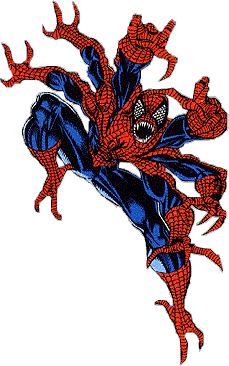
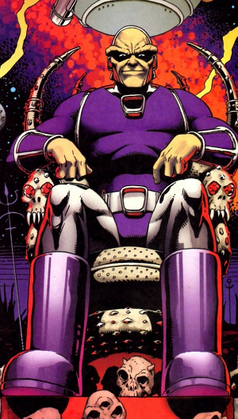
Other Characters:
This is just a list of more minor characters that Starlin has created. Instead of a quick rundown, it’ll basically be their name, and who they’re most associated with, and the company it was for.
Autolycus (Adam Warlock minor villain, Marvel). “Black” Jack Tarr (A Shang-Chi supporting character, Marvel). Black Lama (minor Iron Man villain, Marvel). Bob Diamond (Shang-Chi supporting character, Marvel). Abe Brown (Shang-Chi supporting character, Marvel). Fu Manchu (Shang-Chi’s father and arch-villain. Marvel). The In-Betweener (associated with Thanos and Adam Warlock, Marvel). The Infinity Watch (Pip the Troll, Thanos, Gamora, Doctor Strange, Drax, Loki associated. Marvel). Korvac (Guardians of the Galaxy, Avengers. Marvel). Lord Chaos (abstract entity, Marvel), Mentor (Thanos’s father, Marvel). Midnight Sun (Shang-Chi villain, Marvel). Omega (abstract entity, DC). Starfox (Thanos’s brother, Avengers. Marvel). Sui-San (Shang-Chi supporting character. Marvel). Lin Sun (Shang-Chi supporting character. Marvel). Terraxia (Thanos’s created lover. Marvel). Uranos (Eternals, Marvel). The Weird (Captain Comet, Blue Beetle, Green Lanterns. DC).
Common Tropes of Jim Starlin:
Tropes in comics, are usually analogies, allegories, imagery, or recurring themes within an artists/writers work. Some of the common tropes throughout Jim Starlin stories include a few subjects.
Death: Death is not only a character within Marvel that Starlin helped create, but also a regular theme within his work. Two of his most notable runs include a major character death. “The Death of Captain Marvel”, where the Kree superhero Mar-Vell contracted cancer, and despite his heroic efforts, eventually succumbed to the disease. The other major Death story arc he is known for is the Batman arc “A Death in the Family” where Batman’s sidekick Robin (Jason Todd) was killed by the Joker. While many characters regularly die, what is significant with Starlin is that he doesn’t treat death as a “just another Tuesday” event for heroes. Mar-Vell is still dead in the Marvel universe, and Jason Todd did eventually come back as Red Hood, but is still regularly scarred and traumatized by his run-in with death. The only character that Starlin will regularly kill off is Adam Warlock, and that is more due to the character being messianic in nature as well as regularly going through a metamorphosis and rebirth cycle.
Religion: Starlin has touched on belief and religion in his stories in the past. Most significantly was with his Adam Warlock “alter-self” known as The Goddess. This was during the Infinity Crusade arc. But with how often Starlin touches on the subjects of death or cosmic/metaphysical philosophy, it’s hard not to also bring in religion.
Cosmic or Metaphysical subjects: Starlin is probably best known for his development of the greater cosmic universe of Marvel. Between the creation of Thanos, the Infinity Watch, and his usage and development of characters like Korvac, Silver Surfer and Adam Warlock, the cosmic arena is that much larger, and more full of life. His characters, especially on the cosmic scale, regularly delve into the philosophy of existence, and what it means to be alive. You could argue that metaphysical philosophy is a driving factor behind Thanos’s motivations. His independent comics are best described as cosmic space operas.
Poetry: While he may not use full poems, he often does use poetic language for certain characters. Starlin is also known for having quotes from famous poets, or a sentence from a poem, within his stories. A perfect example, the very first line of the Infinity Crusade is a quote from Alfred Lord Tennyson “There lives more faith in honest doubt, believe me, than in half the creeds.”
The next few tropes are specific to his time
Adam Warlock (Marvel Only): This is Jim Starlin’s go-to protagonist. Adam Warlock is probably one of Starlins most used characters in Marvel, having him play villain, to Earth, hero to the universe, and everything in between. Pretty much every cosmic story Starlin writes, involves Warlock in some way.
Infinity Watch (Marvel Only): The next one is the Infinity Watch. The original group included Adam Warlock, Drax the Destroyer, Thanos, Gamora, Pip the Troll, and Moondragon. Tasked with protecting the Infinity Stones (spoiler alert. They do a pretty crap job of that) they often get dragged into cosmic adventures.
Thanos (Marvel Only): Thanos is another main aspect of Starlin’s runs with Marvel. He is a virtually perfect villain, he’s strong, smart, tactical, skilled in science and magic. But he always serves a cause (even if it usually isn’t a great one). Because of that, he plays the heroic role if something comes up that would interfere with his own plans.
Comic Runs:
It is impossible to cover everything that Jim Starlin has worked on. After all, just in Marvel, he has 183 cover artist credits, 231 writer credits, 147 penciler credits 41 inker credits, and 28 colorist credits. In DC he has 90 cover artist credits, 117 writer credits, 82 penciler credits, 13 inker credits, and 3 colorist credits. This doesn’t even touch the work he’s done with Awesome Comics, Acclaim Comics, Dark Horse Comics, Devil’s Due Comics, Dynamite Entertainment, Eclipse Comics, HM Communications (the Heavy Metal magazine), Image, Malibu Comics, Slave Labor Graphics, Star*Reach, and Warren Publishing. To put it simply, this guy has worked everywhere, and has done everything. So here I am going to give a list of comics he had a longer tenure on.
Batman (DC): he did 18 issues of Volume 1 (issues 414-430+Batman Annual), and the entire run of Batman: The Cult.
Death of the New Gods (DC): all 8 issues.
Hardcore Station (DC): all 6 issues.
Mystery in Space vol. 2 (DC): all 8 issues.
Rann-Thanagar: Holy War (DC): all 8 issues.
Stormwatch: he did 11 issues of volume 3 (issues 19-30).
Captain Marvel (Marvel): Volume 1, he did 9 issues (26-34).
Epic Illustrated (Epic): Volume 1 he did 12 issues, scattered throughout the run (each issue had multiple stories each done by a separate writer, and not always the same writer).
Punisher P.O.V. (Marvel): all 4 issues of this run.
Warlock and the Infinity Watch (Marvel): he wrote the first 31 issues
Marvel Universe: The End (Marvel): He wrote AND penciled the entire run.
The first Infinity trilogy (Infinity Gauntlet, Infinity War, Infinity Crusade): he wrote them all
The second Infinity quadrilogy and tie-in (Infinity Revelation, Thanos vs Hulk, Infinity Relativity, Infinity Entity, and Infinity Finale): He was the writer on all of these, but this one gets a little confusing. The reading order starts Infinity Revelation. Thanos vs Hulk takes place between Revelation and Relativity. But it also takes place between Indestructible Hulk issues 10 and 11. Then you have Infinity Relativity and Infinity Entity taking place at roughly the same time, before they lead into Infinity Finale.
The Thanos Quest (Marvel): he wrote the entire run
Thanos: Redemption (Marvel): he wrote the entire run
Dreadstar (Epic): Volume 1 issues 1-40 were written by Jim Starlin.
Essential Jim Starlin Stories:
Here, we are going to talk about the “essential” Jim Starlin stories. The ones that had a huge impact on the comic universes. The ones that are his greatest hits.
Batman Vol. 1: Issues 426-429: This is probably best known as the “Death in the Family” story arc. Where Joker brutally murders the second Robin, Jason Todd. It was such a game-changing moment for the Bat-family, it’s ramifications have been felt in comics since.
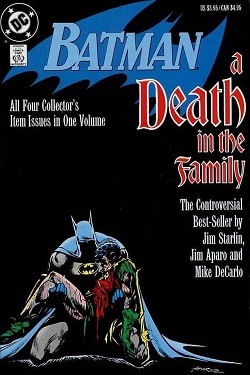
The Death of Captain Marvel: The first Original Graphic Novel ever put out by Marvel, this was never released in serial format for comics. This story propelled villain Nitro into infamy (but it wouldn’t be the first time), and we saw cancer strike down a great hero, for good (at least in the main 616 universe).
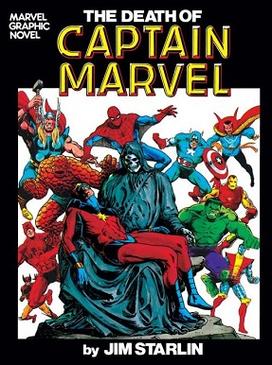
Strange Tales issues 178-181, Warlock issues 9-11: Despite this taking place over 2 separate comic series, these 6 issues comprise what is known as the “Magus Saga”. Here you see Adam Warlock, alongside allies Pip the Troll and Gamora, fight the Universal Church of Truth, and it’s leader Magus. Plot twist: Magus is an evil Adam Warlock from the future.
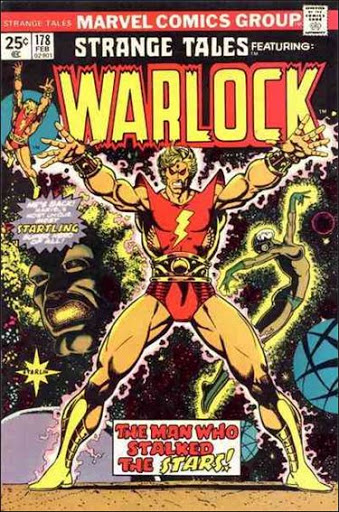
Infinity Gauntlet: The one that kicked off Thanos’s legacy of bloodlust, and inspired multiple billion dollar movies (Infinity War+Endgame). Infinity Gauntlet was an amazing story that caused Marvel to tell Starlin to write a sequel. That eventually became the first Infinity Trilogy, and set a heavy theme for Starlin’s work in Marvel for decades to come.

Cosmic Odyssey: Starlin does great work with the heroes of Earth teaming up with Darkseid, and the New Gods to stop the Anti-Life Equation from destroying the galaxy. We see one hero die. And another hero whose overconfidence leads to the destruction of the planet he was trying to save, and then fail to kill himself in the aftermath of that.

The MCU Timeline
So the Marvel Cinematic Universe is a great thing. It has 23 movies out currently, with 8 more movies confirmed to come out. And, thanks to time skips, and other movies taking place in the past, or at the “same time”, what the proper order to watch them (if trying to start from MCU chronological order, and not the release days). There are also a *few* assumptions that have to get made during this. Very few movies have actual dates sets on them, so we have to assume they take place in the year they come out. A few that we can place dates on, we can place dates because of calendar shots, or because of other Easter eggs of sorts, in the movies. There are also a couple films where it gets real weird, because they claim dates from events in other movies, but it causes things to mess up the timeline, so we have to adjust the dates and assume the writers royally fucked it up (I’ll explain why later). We are not going to cover Agents of SHIELD (which takes place over a rather large timeline), or the Netflix series (which while good, and reference the MCU, doesn’t really interact with it). This also isn’t going to really touch on future projects (movies or Disney+).
Captain America: The First Avenger: This one is easy. We know it takes place during WW2, starting in 1942 and ends in 1945. This is a movie that we have a hard date on. We even have references in other movies to certain dates within this movie (such as Bucky’s fall from the train being in 1944). Outside of the very opening scene (where they discover Cap’s body) and the closing scene and post credit scenes (after thawing him out), the rest of the movie basically tells the story of Cap during WW2. So this one is real easy, we can get it out of the way.
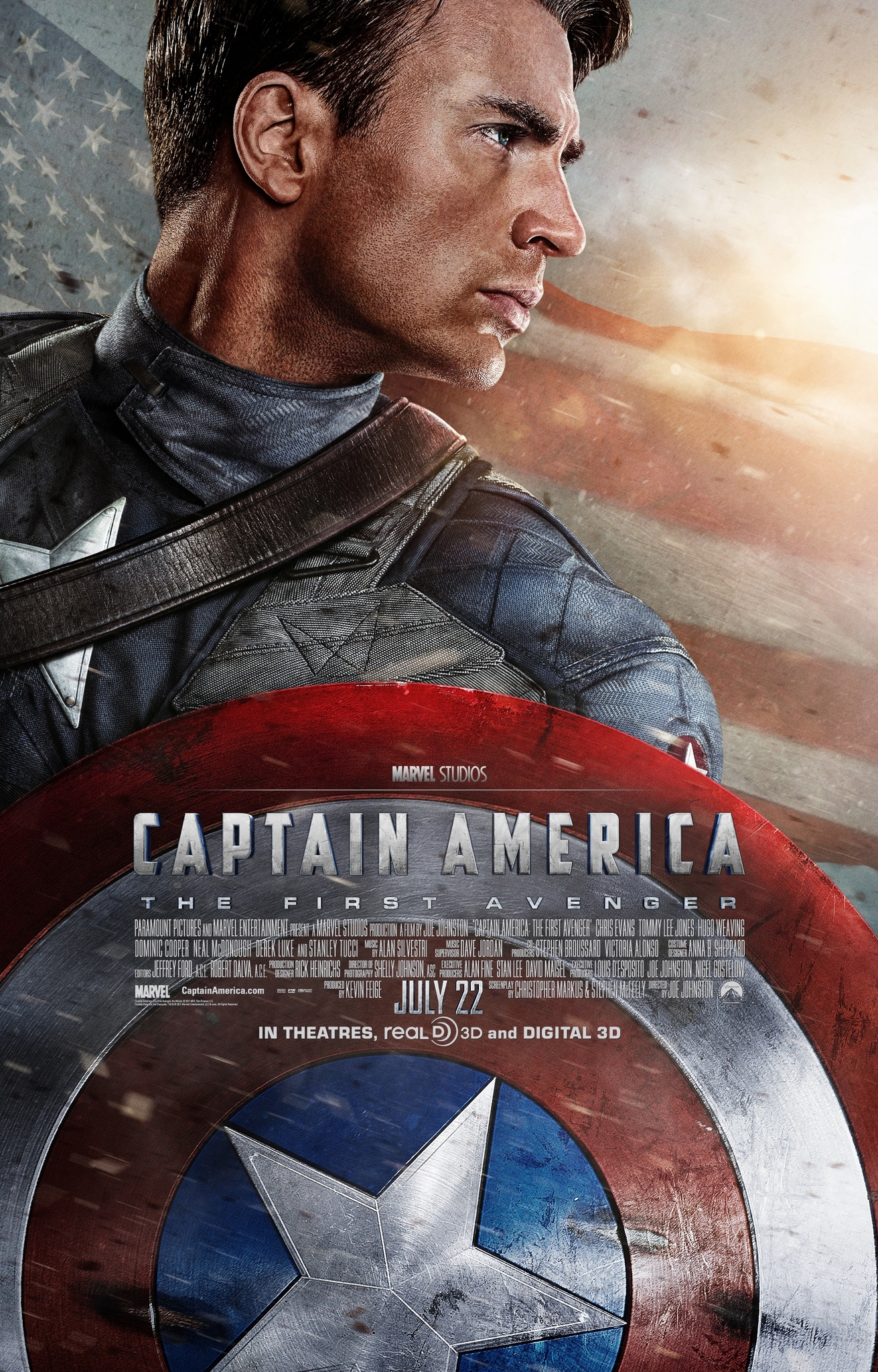
Captain Marvel: This one, was accidentally confirmed by Disney Japan, but could relatively easily be pieced together from in-movie references. Captain Marvel takes place in 1995. The scene where Carol Danvers accident takes place lists 6 years earlier, and has 1989 on it. But we also see things like Blockbuster Video. That means it had to take place before 1996 (which is when they rebranded to just “Blockbuster”). We also see advertisements IN the Blockbuster Video for the movie True Lies. That hit theaters in 1994, and was released on VHS in 1995. We see LA transit’s Red and Green lines, Red line was introduced in 1993, while Green Line was 1995. With that said, this would be the second movie in the MCU continuity (as it currently stands), taking place in 1995.
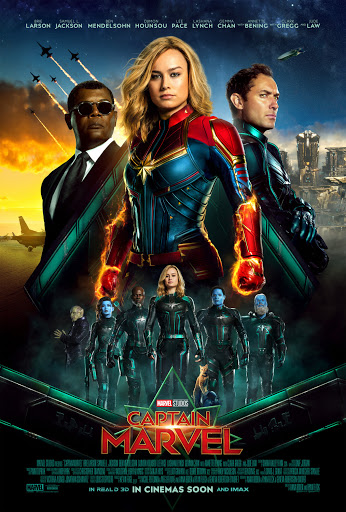
Iron Man: The movie that started the MCU, and revived the career of RDJ. This is one of the few confusing timeline ones. Presumably it takes place in 2008. And that would line it up with Civil War (which Vision mentions it’s been “8 years since Tony Stark announced himself as Iron Man”) which does take place in 2016. But there is a few references that would suggest it actually takes place in 2009, and this heavily comes from the next couple movies. I personally lean towards 2008, but would definitely suggest that the announcement and defeat of Obadiah Stane as probably taking place in November/December.

The Incredible Hulk: This one is almost a complete write-off dating. In-movie dates and events have Incredible Hulk taking place everywhere from 2002 until 2007. And then Iron Man 2 suggested that these events happened in 2010 (in one theory). Avengers (and the second theory of IM2) suggests it happened in 2011. In the movie, it says Banner has been fleeing for 5 years, and was last seen October 2006. Then we get a cut to Banner working in Brazil, and it says “158 days since Hulking out” which suggests March 2007 is the date. Emil Blonsky’s rules of engagement are dated March 24th, 2007. The rest of the movie takes place in early April. The problem here, is that the rest of the movie (Hulk entering America, and finally culminating in the Battle for Harlem) supposedly take place during “Fury’s Big Week” which takes place during the events of Iron Man 2, Thor, and the last half of The Incredible Hulk. And this is where things are falling apart already. If Hulk takes place in early 2007 (roughly 12-18 months before the events of Iron Man 1), how does this take place during Iron Man 2 and Thor? With this, we basically have to assume that the retcons done in the Avengers movie is the real date, which places part of this movie before Iron Man 2 and Thor, and the rest during those movies.

Iron Man 2: This one has a little controversy, but it’s fairly easily explained, and you have one of two ways of looking at it. There is an opening sequence showing a bunch of news articles. And then a scene that shows “6 Months Later” and one of the films villains, Ivan Vanko. Now, a lot of people take this to mean that Iron Man 2 takes place 6 months after Iron Man 1. And it’s a fairly reasonable guess. BUT that throws the timeline as we know it off, as that would put Iron Man 2 in 2009, and not in 2010 (as was originally thought) or 2011 (as suggested in Avengers). Now here is the second theory. The magazines and news articles take place over a period of 8 months or so from the end of the first Iron Man (he wouldn’t have finished and had that many articles, (including I believe a Person of the Year) in less than 6 months. So if we assume it was 8-12 months after the first Iron Man, and then the Ivan Vanko scene was “6 months later” from that quick montage, it lines it up significantly better with the rest of the timeline. Assuming it’s 8 months for the articles, and 6 months from that for Ivan, it puts us about early 2010. The Monaco Grand Prix was legitimately held May 16 2010 (which puts it in line with this), and he asks Pepper to cancel his birthday (which is May 29th as shown in Fury’s files and in The Avengers). Also, it should be noted that Natalie Rushman (Natasha Romanov’s undercover name in Stark Industries) wasn’t hired until June 2010, and that can be seen when he looks at her files. It’s reasonable to assume this is all done in May and concludes in early June 2010. And you would be right, except for one small thing. The Avengers movie retconned it to taking place in 2011. So it’s safe to say that everything is in 2011, and from Tony’s birthday party on, at the same time as Thor and Incredible Hulk.

Thor: Thor actually doesn’t have a set date on it. The only things that set a date for Thor, is Iron Man 2 where Coulson has to go to New Mexico (where Thor’s hammer fell), and in Avengers where Fury specifically mentions “A year ago, we had a visitor from another planet who had a grudge match that leveled a small town.” while pointing at Thor. So we can tell that from Thor’s exile to Earth, and the end of the movie takes place in 2011 (Same time as IM2 after Tony’s birthday, and Hulk after returning to America). The movie itself seems to take place over about 3-4 days, so the entire “exile” period would roughly appear to take entirely within Fury’s Big Week. We also get a reference in Thor: The Dark World about how long Thor was gone for when Darcy says “Last time he was gone for two years” (this was after Avengers, where he didn’t interact with Darcy or Jane, so would place Thor about two years before Thor: The Dark World). So with Thor taking place during Fury’s Big Week, and Iron Man 2 when he’s developing the new element for his heart being the definitive time Thor was on Earth, it’s safe to say that Thor takes place at the same time, during 2011.

The Avengers: The Avengers is a definite, hard, 2012 timeline. We know it’s 1 year after Thor and Iron Man 2 happened (and it retconned Incredible Hulk to happening at the same time as well). Marvel has also stated that it takes place in 2012. So pretty easy label (and given that they’ve said Avengers is 2012, and the events of IM2, Thor, and Hulk take place 1 year earlier, than it’s safe to say those were all in 2011, as well as the unthawed Captain America scene). The dates provided in the movie is so detailed, that we can actually pinpoint the exact days the movie takes place. Loki crashes the museum party May 4th (signs up saying that opening day was May 4th, and Loki crashed the inauguration party). And he attacked the SHIELD base May 3rd. May 4th we hear Black Widow say “Loki killed 80 people in two days” (after the Loki captured scene). And the Battle for New York happened the next day (May 5th). So Avengers took place over May 3rd to May 5th 2012.
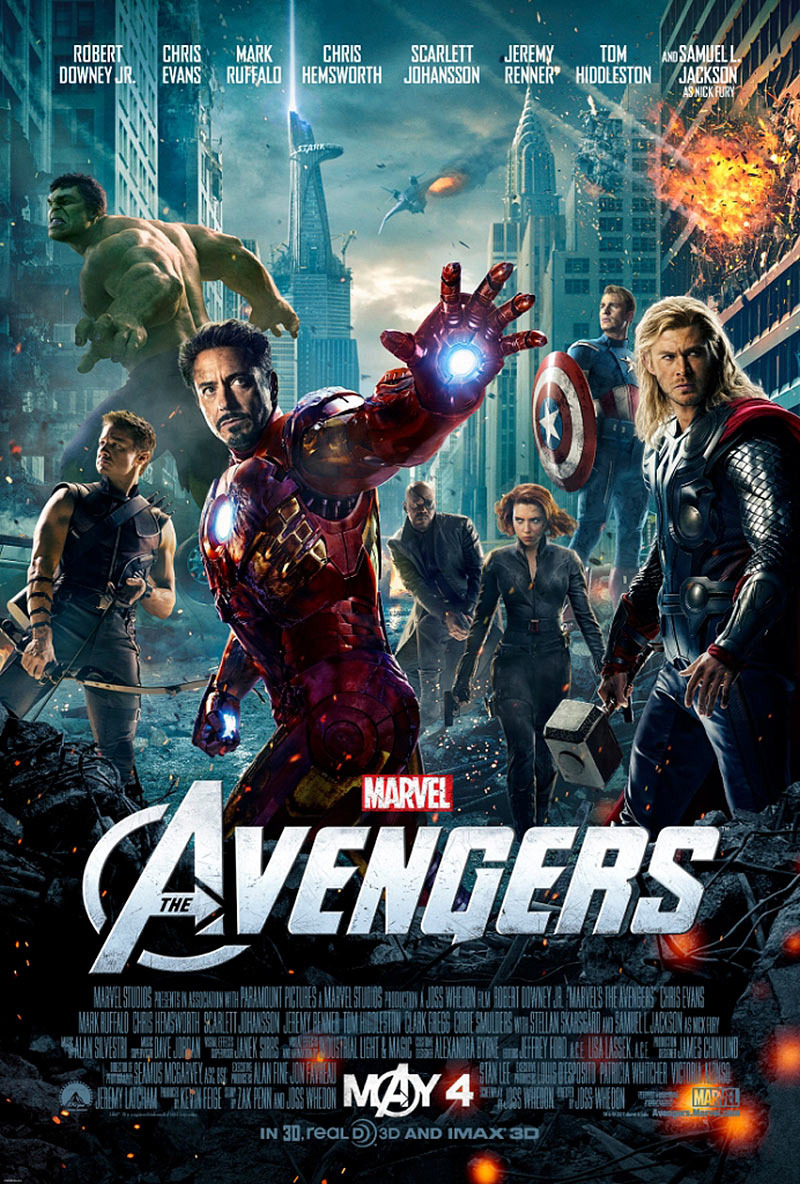
Iron Man 3: This is the first movie of the united Avengers era. A few scenes via flashback take place in 1999 (including meeting Aldritch Killian, Maya Hansen, and my favourite throwback, Dr. Ho Yinsen. If you paid attention, Ho Yinsen was the man Tony was trapped in the cave with when he was captured by terrorists in Iron Man 1, who even mentioned he met Tony at a conference in Bern, Switzerland, which is the conference this flashback takes place at). The reason that flashback to 1999 is so important to placing this movie, is that we know it takes place after Avengers (his PTSD is a major plot point). But, Pepper, Killian, Hansen, AND Tony all mention that conference 13 years ago (Note, the flashback was on New Years Eve, so they could be referencing 13 years from 1999, or from 2000, and it’d be fairly accurate still, as they had all interacted in 2000 as well). The movie does have a bunch of christmas and winter themes, but that could be anytime from November until January. We can rule out November because we can see the date from when Happy Skype calls Tony as December 22nd. But the movie itself also has an exact date. The Mandarin attacking Tony Stark’s house is referenced on a newspaper, as “December 23, 2013”. This is where things get tricky. If it IS December 2013, IM3 takes place AFTER Thor the Dark World (which Marvel has said that Dark World takes place after IM3, and even doubled down on that in Season 1 of Agents of SHIELD, which we aren’t really placing in the MCU timeline due to the sheer timeline involved). As such, we must believe that Iron Man 3 takes place December 2012 in order for the timeline to make sense as far as the rest of the MCU goes.

Thor: The Dark World: Arguably the worst MCU movie (alongside Iron Man 3), it is one of the only movies in the MCU that hasn’t had it’s dates retconned while interacting with the greater MCUniverse. We see early, and often, that The Dark World takes place in 2013. From Erik Selvig’s chalkboard in the oldfolks home (dated 2013), to Darcy signing the release papers of Selvig (November 13th 2013) to Darcy telling Jane that she saw Thor 2 years ago (Jane did NOT see Thor during Avengers, meaning she last saw him during the first Thor Movie, which as we’ve already established, is 2011). But we also learn that the flashback scenes (where Bor is leading Asgard in war against the Dark Elves in the previous convergence) would have taken place in 2987 BC (as it only happens every 5,000 years. As stated multiple times, by multiple people. This also makes Malekith old as fuck, seeing as he was an adult, and king of the dark Elves during the 2987 BC convergence, he is presumably at least 5100 years old at his time of death).
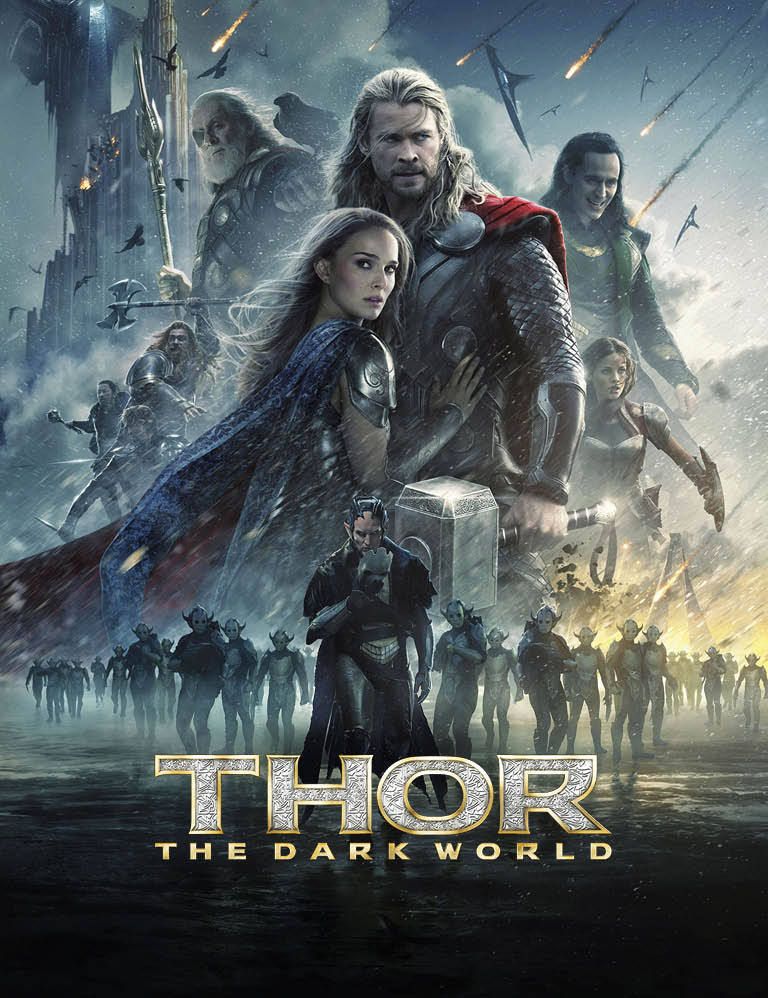
Captain America: The Winter Soldier: While there is a slight hiccup (as the assassination attempt of Fury, the hospital dates it April 14th, 2013). This can’t be possible as SHIELD was taken over by HYDRA, and in Thor: Dark World, they reference SHIELD still, so it had to take place after November 2013. We do get 2 other dates mentioned, that both suggest it was 2014 though. Nick Fury’s gravestone reads he died in 2014 (he kept undercover as “dead” from that assassination attempt, so it would be from that day he was killed). Captain America also says he is only “95, not dead”. We know his birthday is July 4th, 1918. So he would be 95 if it takes place before July 2014. Given that the Fury assassination was in April, 2014 makes the most sense (and if it was April 2013, Cap would actually be 94). Now one of the few things we can get mixed up is that Zola was captured in 1944 (in Captain America: The First Avenger) but Zola states it was 1945. Both are accurate, he was captured in 1944, but due to Operation Paperclip in 1945 (recruiting Nazi Scientists to actually WORK for the USA), 1945 is when he was officially brought in.
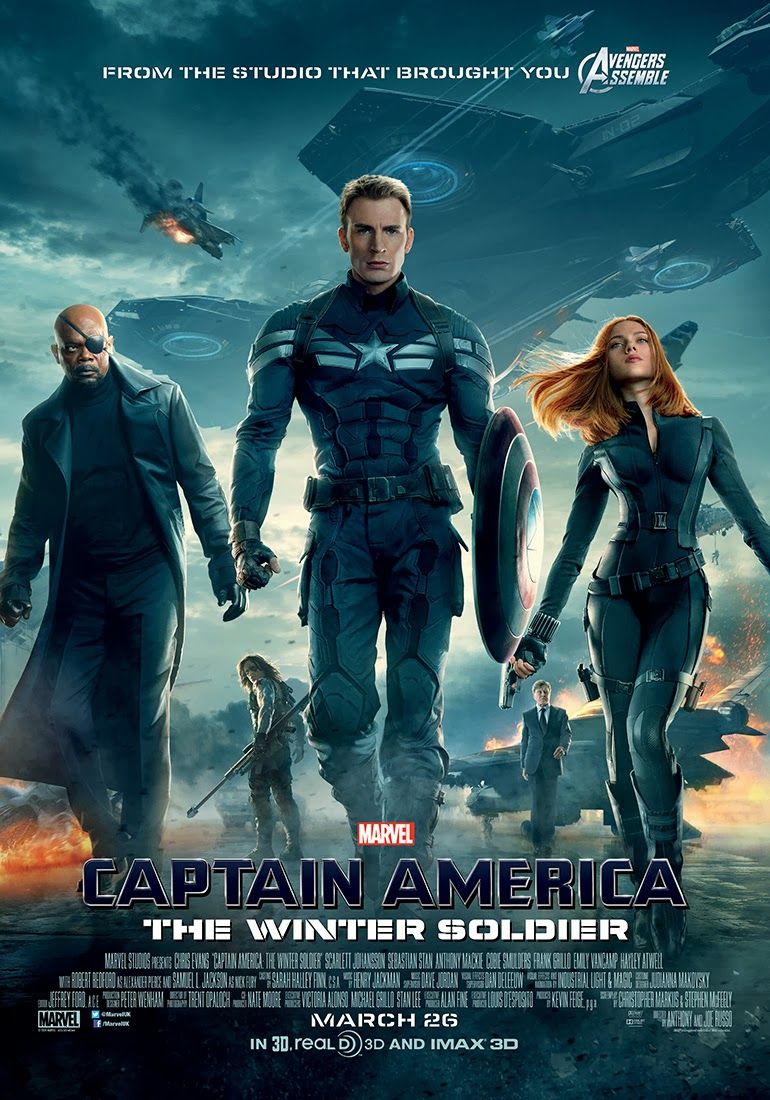
Guardians of the Galaxy vol. 1: This one is an easy pick, it quite clearly states it is in 2014. We know this because it mentions 1988 in a flashback while talking that is “26 years ago”. 1988+26 is 2014. The only part that is unsure is whether it is before, or after, the events in Winter Soldier. Because there is no months or exact dates mentioned, we follow it with release date in the real world. Since it came out after Winter Soldier, we assume that the movie itself, is after Winter Soldier (but as we stated, we KNOW it’s in 2014).
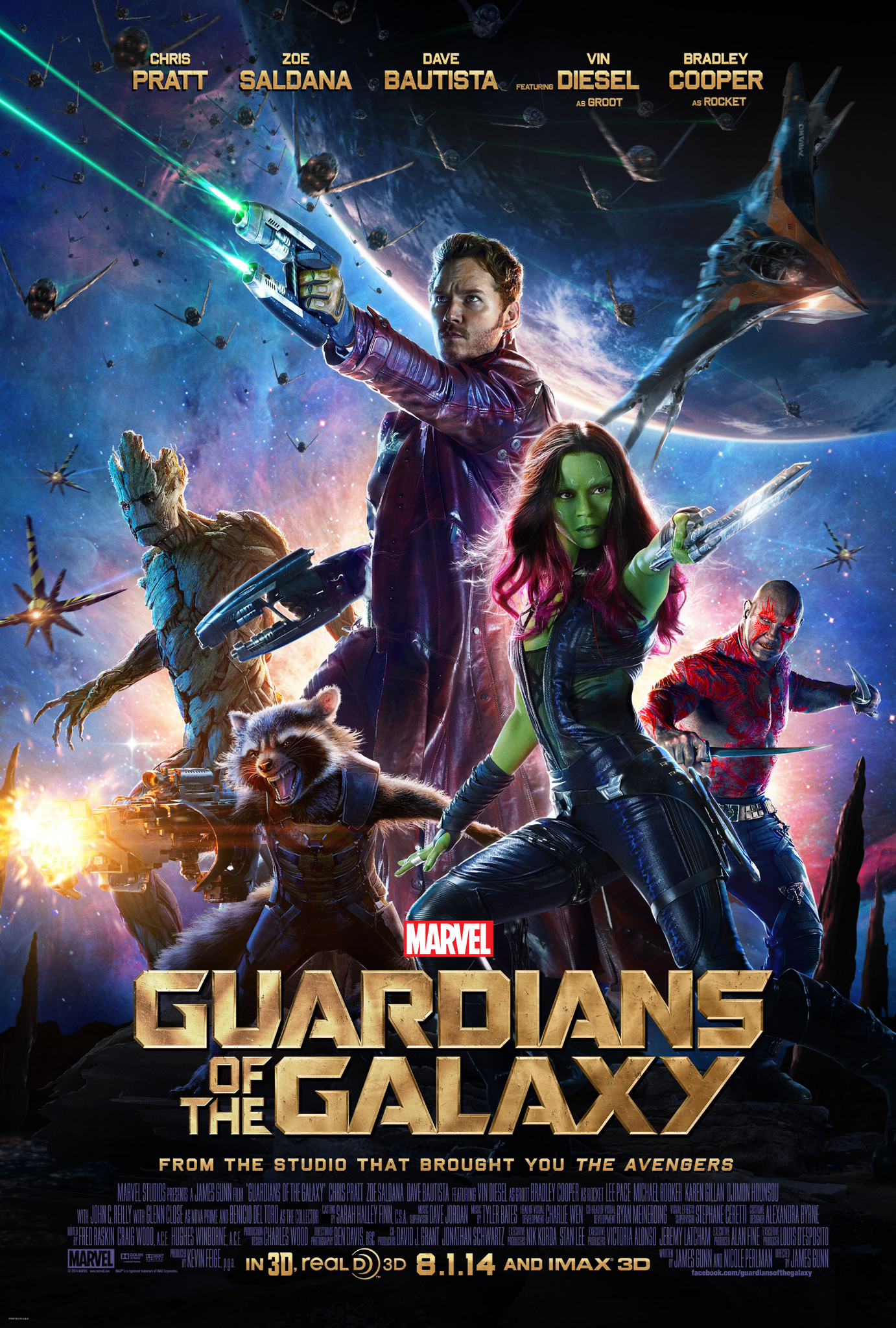
Guardians of the Galaxy vol. 2: This one is wholly an estimate, but it’s pretty safe to say it takes place shortly after Guardians 1. We say this because Baby Groot (end of Guardians 1, 2014) is already a teenager by Infinity War (2018). Given that 4 year period, to go from dancing twig to baby Groot in Guardians 2, would probably only be a couple months. So with an estimated time based on Groot’s growth, we also assume Guardians 2 also takes place in 2014. And before anybody brings up the Stan Lee cameo (where he mentions the time he was a postal delivery driver, referencing his cameo in Civil War) James Gunn did say that scene was a mistake, as that cameo happens after the movie takes place (basically saying that Guardians does take place before 2016).
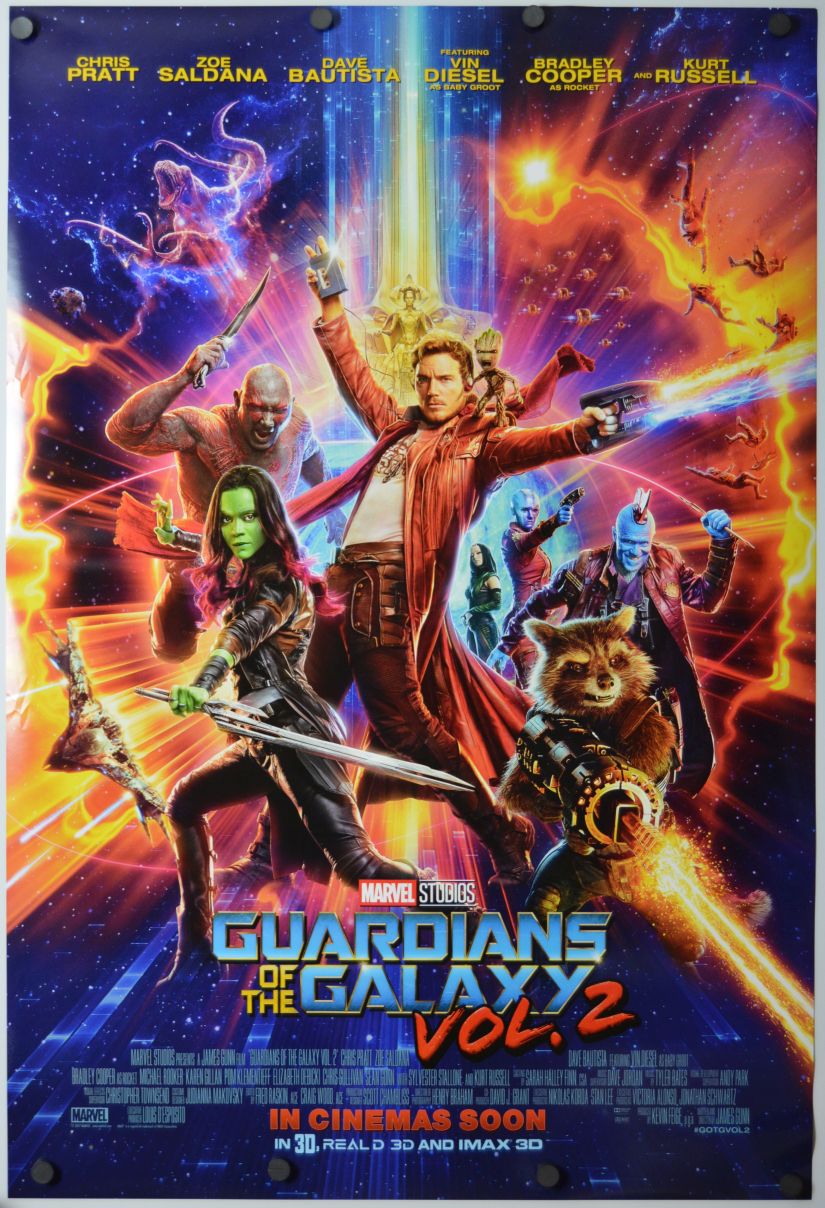
Avengers: Age of Ultron: Age of Ultron doesn’t necessarily date itself. But it’s fairly easy to date where it is from statements made in movie, and in future movies. It mentions that it’s been 4 years since the infinity stones first appeared (the first infinity stone appeared in Thor, with sightings of both Loki’s staff/Mind Stone, and the Tesseract/Space Stone). 4 years from that firmly established 2011 year means this takes place in 2015. Captain America: Civil War also states that it happened “last summer” (we’ll get to that one later). We can also reasonably assume the events of the movie take place between May and June. We see a news segment dated June 2nd about the Avengers actions in Sokovia (the assault on Baron Struckers Hydra fortress takes place). We see this in one of the “three days” Tony and Banner were given to look at Loki’s Scepter for. All the events after that take place in June.
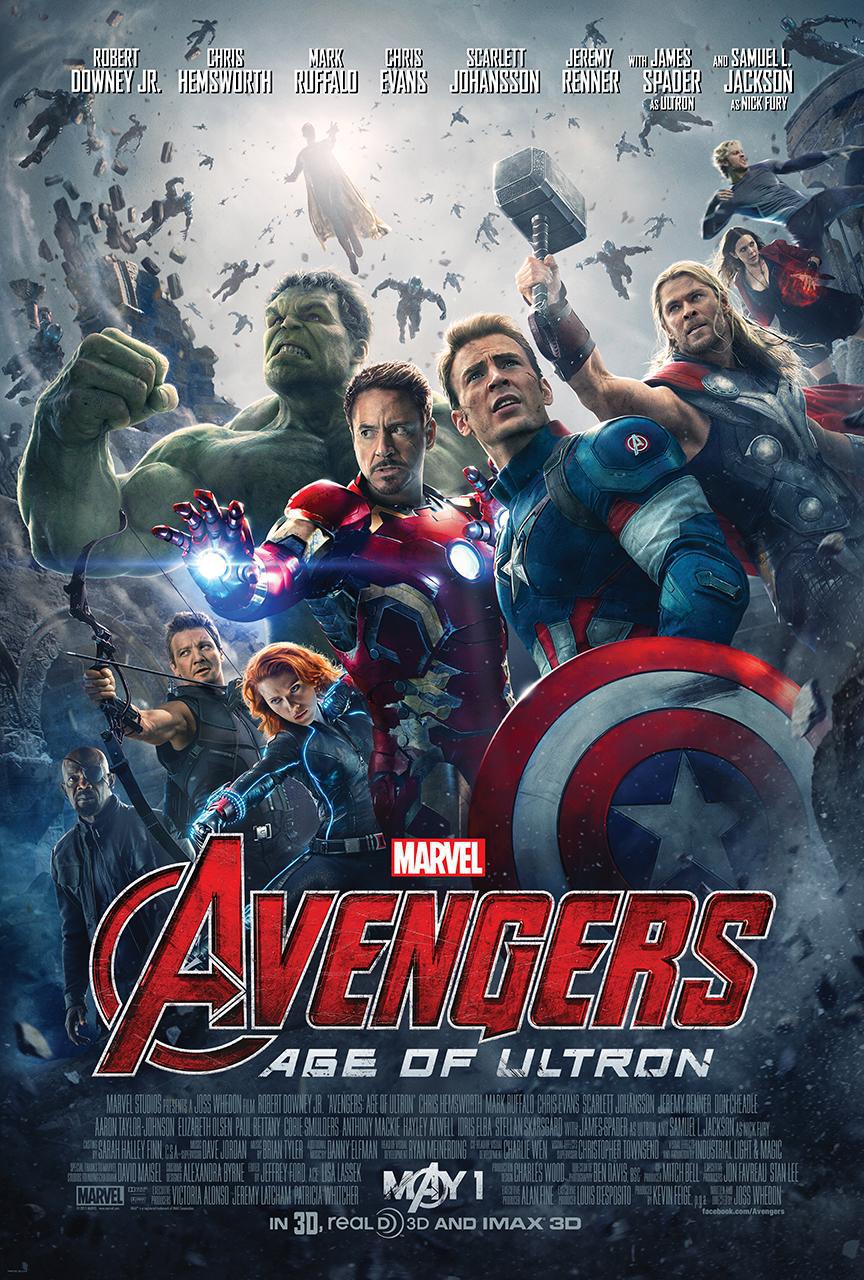
Ant-Man: We know the introduction of Scott Lang starts off in July (as the news announced Scott Lang’s release from prison as July 17th). We know several months pass, because when he shows up to his daughters birthday, he gets chastised for not paying child support (not something the step-father, who is a cop, would be bringing up if he had just got out of prison). We also know this happens after Age of Ultron, because Hank Pym references the Avengers dropping a city out of the sky. We also see Scott break into the new Avengers facility in upstate New York, which takes place after Age of Ultron, but presumably not fully set up yet because the “Moving Day” for it happens later (that area was already a storage facility for SHIELD that presumably Stark bought). We also see Hank Pym’s medicine bottle, which has an expiry date of May 17, 2016, so we know it takes place before that day. We also see in the first Yellowjacket/Ant-Man fight in the briefcase, the date on the phone (October 9th) which would be a Friday in 2015. Because we know it takes place before May 17th 2016, and we see a date for October 9th, it’s safe to presume that this movie takes place in 2015, mostly in late September and early November.
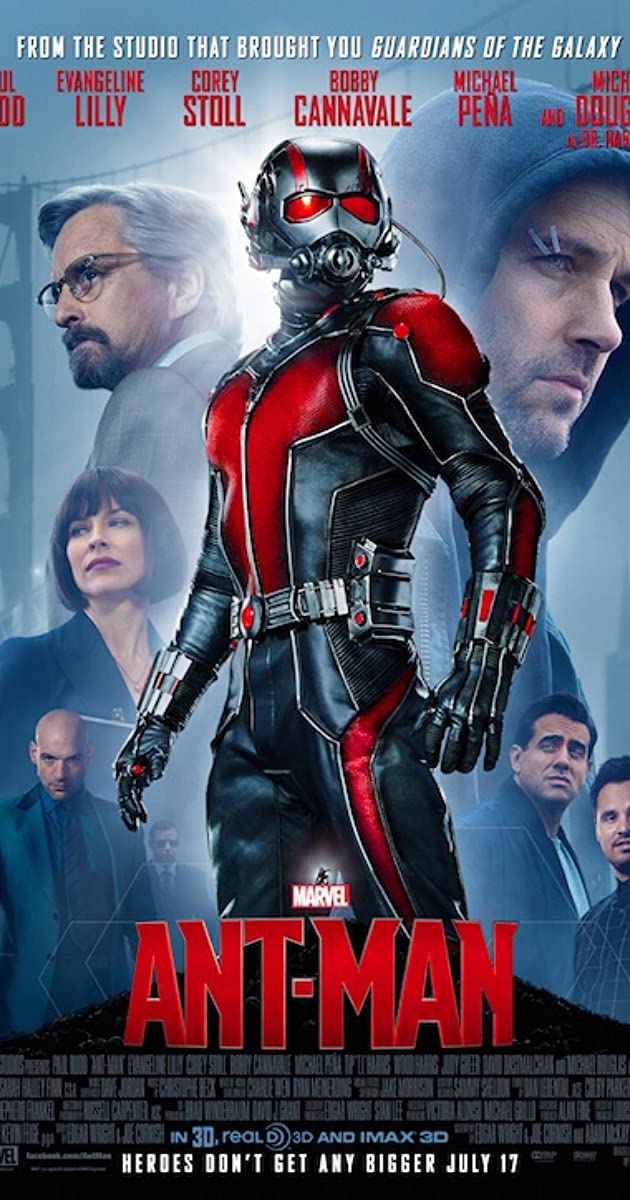
Captain America: Civil War: This one is a key movie, because it solidifies a bunch of dates in previous movies, and sets the cornerstone for dates in future movies. It shows a newspaper dated 2016, with an article about March 22nd there will be an opportunity to vote (the picture on the cover was Crossbones right after the Lagos incident which triggers the need for the Sokovia Accords). When General Ross shows up to present the Sokovia Accords to the Avengers, they mention that the Lagos event happened the previous month, so it puts that part of the movie in April 2016. Ross gives a small speech referencing how he had a heart attack in 2011 (probably shortly after Fury’s Big Week), and that the “past 4 years you’ve operated with unlimited power and no oversight” (referencing their actions since the first Avengers). Vision also confirms that Iron Man takes place in 2008 (in the eight years since Tony announced he was Iron Man). Tony confirms Age of Ultron was the previous year. Falcon confirms that Winter Soldier happened 2 years earlier. Zemo also confirms that Age of Ultron happened the previous year (the destruction of Sokovia was why he wanted to destroy the Avengers in the first place). We know the events take place in early April, because the Stan Lee cameo delivering Captain America’s package to “Tony Stank” is dated for April 10th. Because of all this information, it is safe to assume that this movie takes place in a 3 week span covering the last 10 days of March, 2016, and the first 10 days of April, 2016.
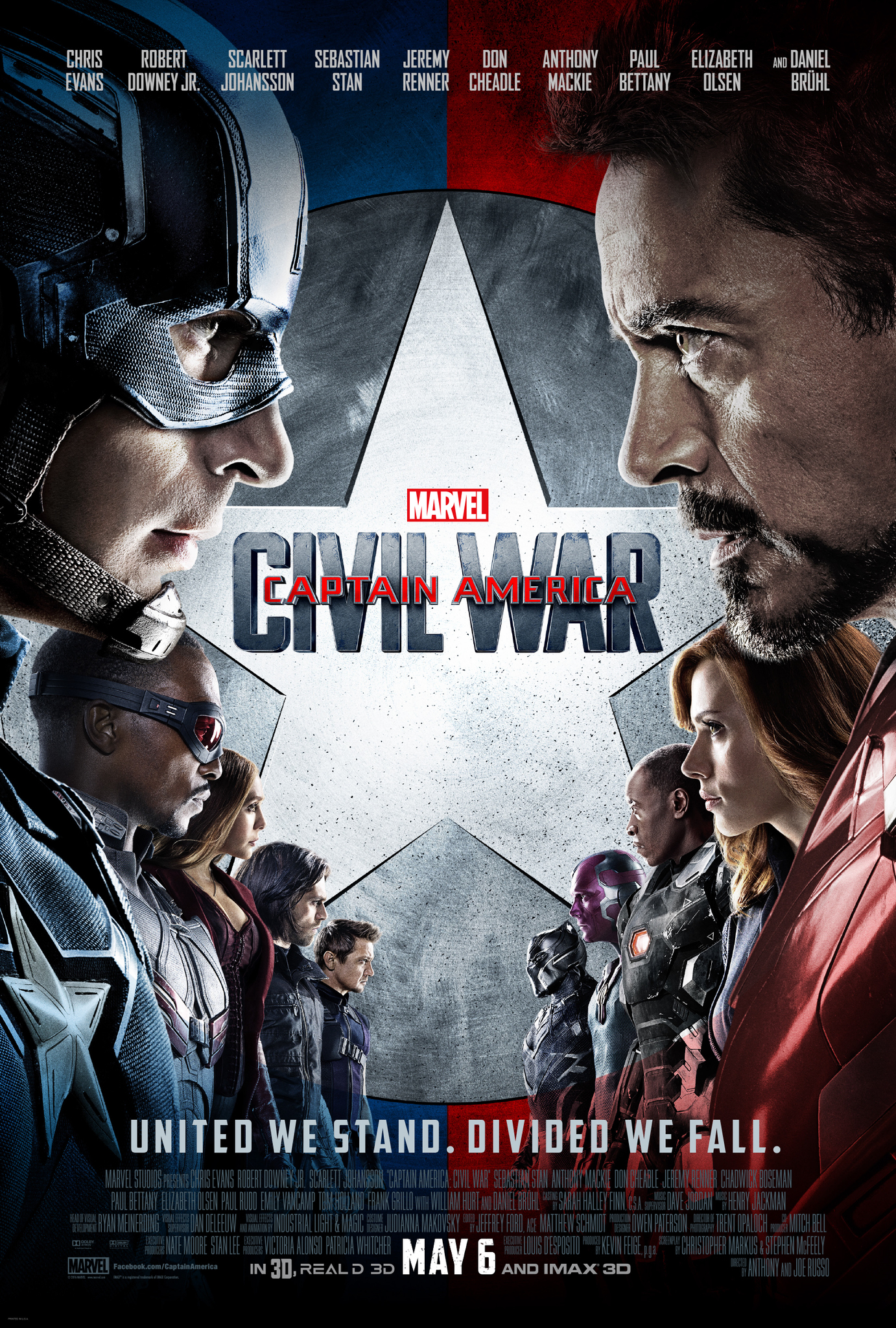
Black Panther: This movie doesn’t have any listed dates, months, or years in the movie outside of the flashbacks to 1992 with Prince N’Jobu, his stolen vibranium, and his young son Erik Killmonger. Because of this, most people believed it takes place in 2018 (the same year the movie was released). But, thanks to lines in the movie, most those people would be wrong. You see T’Challa watching a news report early in the film that talks about his fathers assassination “a week ago”. Given that Civil War would have happened in late March/early April, and how early the Lagos incident was in the film, that the “week ago” would have been in the last couple days of March, or first couple days of April. There is the possibility that T’Challa is watching a recording of the news incident, except for the fact that the news of T’Chaka’s death is a surprise to Nakia when T’Challa tells her after that scene. So that implies that the movie takes place in mid-to-late April, 2016. The end-credit scenes (Shuri being in charge of the science and technology exchange with America, Bucky waking up and viewing Wakanda, and T’Challa announcing it was opening up to the rest of the world at a UN meeting) are hard to pin down, but you have to believe that the first two are still in 2016 (even if late 2016). The UN announcement would take much planning, and deliberation within Wakanda about to what extent they share what technologies and everything else. We’re talking a societal restructuring of beliefs in Wakanda. So it’s pretty safe to say that announcement would be in 2017.

Spider-Man Homecoming: This one here definitely has a couple problem areas. Given Peter’s age in this movie, and his age in Civil War, we can safely assume that it hasn’t been that long. We also see regular viral footage of the airport fight scene from Civil War as well. This suggests that Homecoming is no more than a few months after. But we have just one teeny problem with that. The film starts off with a flashback to 2012, just after the battle for New York and the Chitauri invasion. Adrian Toomes and his crew, contracted by the city of New York, to clean up, is being told to stop, and Damage Control is taking care of it. Then we see a time jump to the current day. Except for this aforementioned teeny problem. Across the screen slaps an “8 Years Later” tag. 8 years later means that either Avengers took place in 2008 (again, Avengers 1 took place in 2012, it is well established), OR it is currently 2020. Again, with the constant references to Civil War (including the “Pretty sure this guy is a war criminal now” in reference to the Captain America video in the Gym class), it is reasonable to assume this is still in 2016 (Again, we can date Civil War to around April, this would likely be a few months later, such as the start of the school year). We see two conflicting dates in regards to the Academic Decathlon that Peter, Ned, Liz, and a few other major characters are attending. The first one suggests October 13-15. Again, still fairly early in the school year so not the most unreasonable thing. And then later in the movie it is referenced as September 13th and 14th. Then we see a few things suggesting the movie is in 2017. When it shows Aaron Davis in the criminal background check, it gives his birthday (April 15th, 1984), and then states he is 33 (which would make it 2017). This movie also does confirm Iron Man takes place in 2008 when Happy says “I’ve been carrying this ring around since 2008” which was when the Tony and Pepper first got together. Given everything we do know, such as it can’t possibly be in 2020 because Peter was affected by the Infinity War snap (which takes place in 2018), and that in Infinity War he is wearing the Iron Spider suit (presented at the end of Homecoming), it is impossible for the movie to take place after that. Also given that the Civil War event seems to be considered a recent event, and people are still talking about it, it’s not very likely that it takes place in 2017, 17-18 months after Civil War. Therefore we can fairly reliably place this movie in 2016 where it would make the most sense (and given that the movie contradicts it’s own dates on multiple occasions, we have to take the dates provided in this movie with a grain of salt, and go with what makes the most sense in the overall timeline).

Doctor Strange: The opening scenes of the movie, we have to assume take place in 2016. This is because when we see Stephen Strange getting ready for the party (before his accident), we see a plaque dated 2016, and his watch reads February 1st, 2016. A man like Stephen Strange probably doesn’t wear a watch with the wrong day, month, year, on it’s display, it makes this very likely. We don’t know how long passes in his recovery phase, but we can safely imagine around 4 months (hand injuries wouldn’t prevent him from walking around, and this gives some time for his rehab and him looking into other methods of recovery). Then he travels to Kathmandu, Nepal. Let’s add another month before he gets there, so we can say he meets the Ancient One in July sometime. We don’t know how long he was training in Kamar-Taj, but we can assume he spent some fair bit of time there. Though he learns quickly (even guys such as Wong are impressed at how quickly he is mastering spells and going through books), his major personality shift would also suggest it’s been around 5 months or so. Because of this, we can safely assume that this movie takes place in 2016. The post credit scenes would most likely be in 2017 due to the late time of the year that the main movie took place, one being literally from Thor: Ragnarok, and the other having Mordo say he’s “been gone for many months”.

Thor: Ragnarok: Ragnarok is another movie that has no actual dates, years, or months, shown in the movie. But placing when this movie takes place, isn’t super hard. After Hulk reverts back to Banner, we hear Thor say “Banner, listen to me. Sokovia, Ultron, that was TWO YEARS AGO“. This gives us a good idea when this takes place, as Age of Ultron can be placed in 2015. Banner also reiterates that with the line “Maybe the fact that I’ve been trapped inside the mind of a monster for TWO YEARS made me a little weird.” Whether it’s because he was aware of how long he was Hulk (he has shown some limited awareness of what happens, though not complete awareness. It’s not known if he has a full idea of concepts like time) or if it was because Thor mentioned it earlier is unknown. When we see Loki and Thor in New York City, we see how everyone is dressed, and we can assume it is October/November from that. We also know that a fair bit of time has passed given their visit to Doctor Strange has shown both a change in attire (including wearing the Time Stone, which in Doctor Strange, was left in Kamar-Taj when he took over the NYC Sanctum), and a mastery of his powers (even as a quick learner, to get to where he is shown would have taken several months). We don’t know how long Thor and Loki were on Sakaar, but given how events seem to transpire rather quickly, we can assume it takes place over a week or two. One of the big points of confusion is that the post credit scene involving Thanos’s ship appearing, would signify the start of Infinity War. Infinity War taking place in 2018 (we’ll discuss that next) may suggest that Ragnarok also took place in 2018. The thing is, a decent amount of the post-credit and mid-credit scenes take place at a different time than the movie, so we can guess that they may have been traveling on the ship towards Earth for a couple months (which would place that scene into 2018).
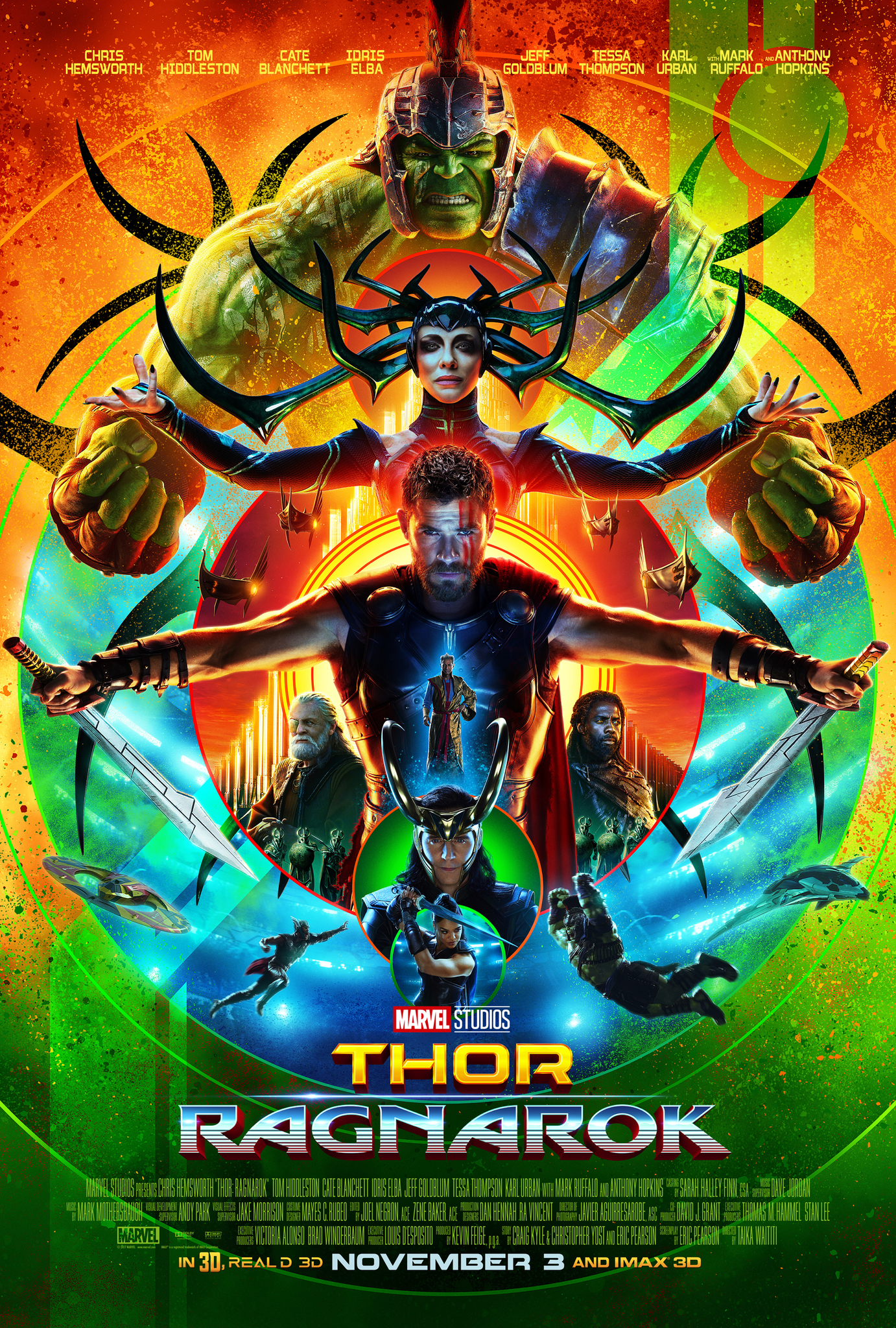
Avengers: Infinity War: While there is once again no dates in the movie to place when this is, we are given a few clues. We know Ragnarok taking place in 2017, they visited NYC late in the year (judging from the winter garb), and when we’re in NYC during Infinity War, it is sunny, no snow, and people wearing spring/summer attire, suggesting that it is in 2018. We also have Tony talking to Strange saying “Thanos has been inside my head for SIX YEARS since he sent an army to New York and now he’s back” referencing the first Avengers movie (and how that kick-started Tony’s desire to protect the world, especially now knowing that it was Thanos behind the attack). We also get multiple references to it being two years since Civil War took place, from Rhodey seeing Steve, Natasha, Vision, Sam, and Wanda and saying “it must have been a rough couple of years” (while colloquially could mean a few years, if taken in a literal sense would be two years), and Vision telling Wanda “For TWO YEARS we’ve stole these moments” suggesting that it’s been two years since Civil War as well (and Vision is almost always literal). Because of this, it’s fairly easy to say that Infinity War takes place in 2018. While some theories suggest it takes place over a couple days (or a week), it’s hard to tell because of how the story was told. With so many different groups doing different things (Star-Lord, Drax, Gamora, Mantis in one group, Thor, Rocket, Groot in a second. Tony, Strange, Peter in a third. Everyone else in a fourth group) it is hard to get a proper judge on when each day takes place.
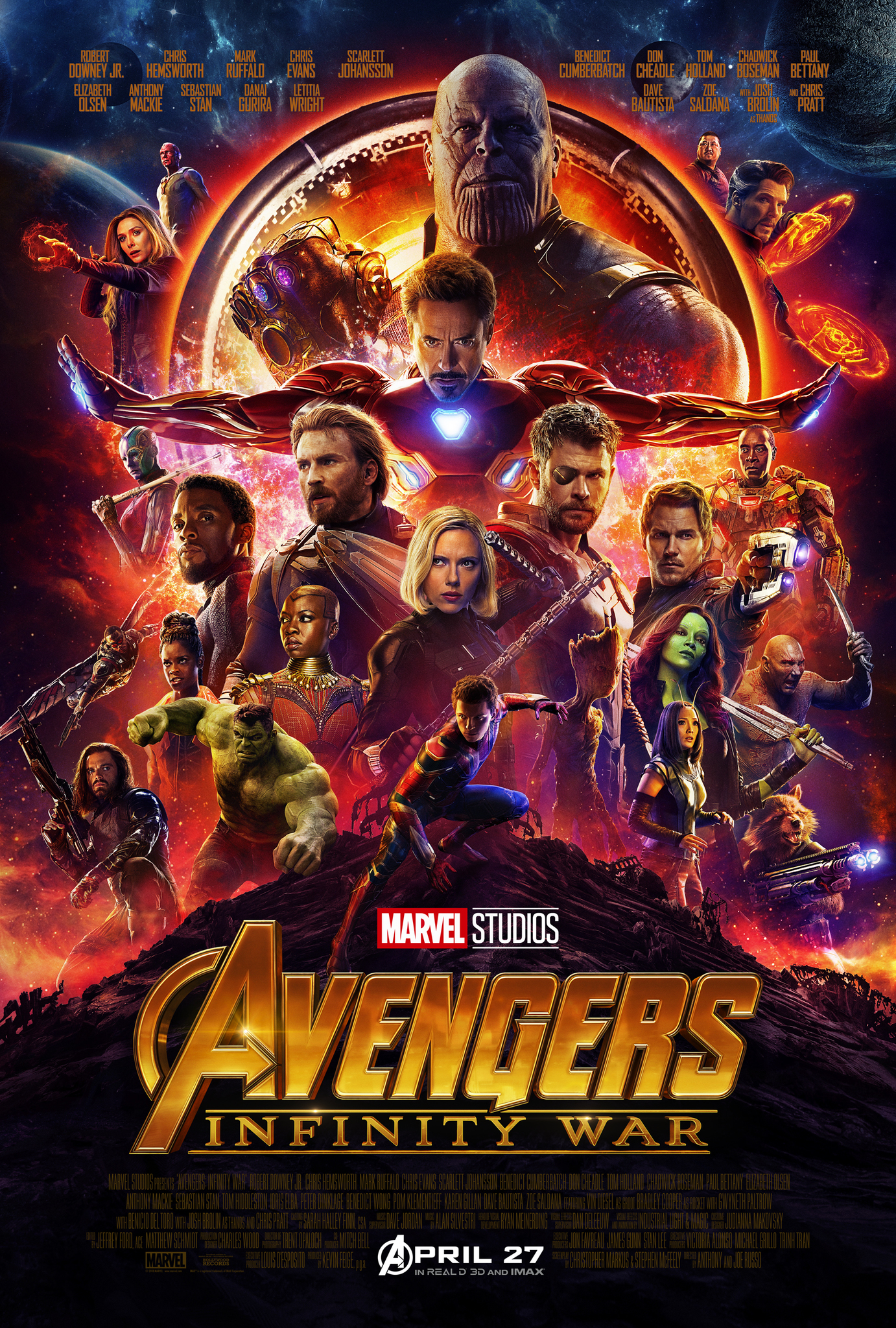
Ant-Man and the Wasp: Well, there are many clues as to when Ant-Man and the Wasp take place. One is a reference to Civil War about how Scott and Clint took bargains to stay in House Arrest to not be separated from their families. We get another clue when FBI agent Wu says that he has to serve “two years house arrest, assuming he doesn’t violate probation.”, and then Scott saying “Come on Woo, I’ve got 3 days left”. This tells us that it is 2018 (two years after Civil War). We also see Scott taking an online magic course, and in the corner of the computer screen you can see the date, “4/10/2018” or April 10th, 2018. Once Scott’s house arrest is done, we see Scott and Hope go on a date, and the computer screen reads June 2nd. Seeing as this happened in June 2nd, you can assume the Thanos Snap happened shortly after that (possibly in the next couple days) as it happens while Scott is in the Quantum Zone and Janet, Hank, and Hope get snapped. House Arrest and Probation is exactly why we don’t see Scott (and Clint) help in Infinity War. But we do know that the end of Ant-Man and Wasp happens at the same time as Infinity War. As such, we have to believe And-Man and the Wasp happens in 2018.
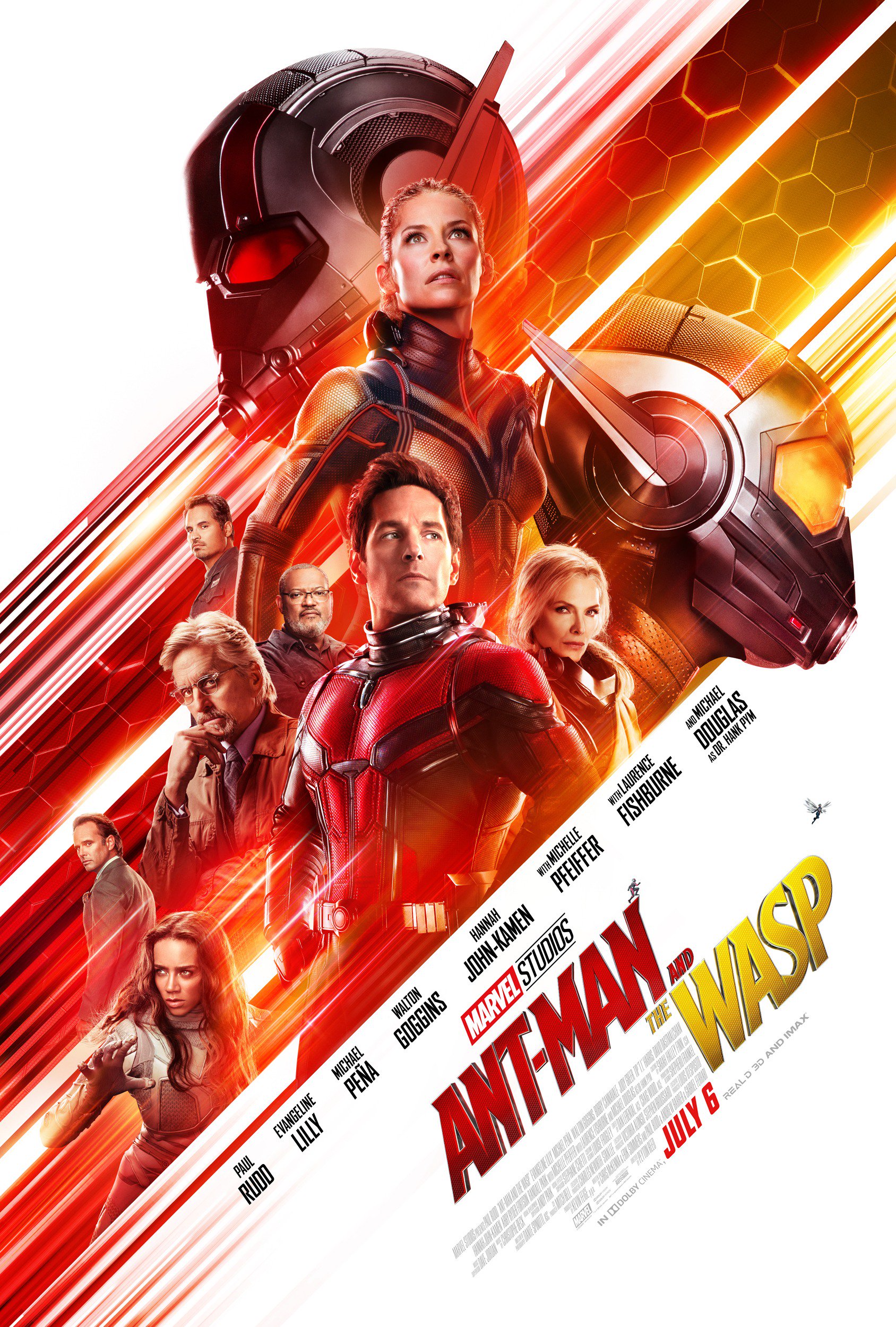
Avengers Endgame: Endgame, the big finish to Phase 3, the build up of 10 years of cinematography and storytelling in a comic movie universe. Ten years realtime would suggest that it takes place in 2018 (as a good many of MCU movies take place the year they were released). And, the movie DOES start off in the immediate aftermath of Infinity War. And this movie introduces… time travel (ugh, I HATE time travel). So it does take place heavily in other periods of time. We see appearances taking place in 1970 (SHIELD facility), 2012 (Battle for New York), 2013 (Asgard), and 2014 (Knowhere). But the main timeframe of the movie is 2023, and we know this as it takes place in a flash-forward “5 years later” after the Snap. We see wildlife return to a lot of areas, we see people learning to cope with the new world. We see the remaining heroes try and set things right. And we see two notable absences from Infinity War appear. Clint (Hawkeye), taking on the identity of Ronan, killing crimelords around the world. And Scott (Ant-Man) return from the Quantum Realm after being trapped there for 5 years, by a rat coincidentally stepping on the button needed (after Hank, Hope, and Janet all got snapped, unknowingly). We can safely place Endgame in the year 2023 though, as that is where the bulk of the story takes place.
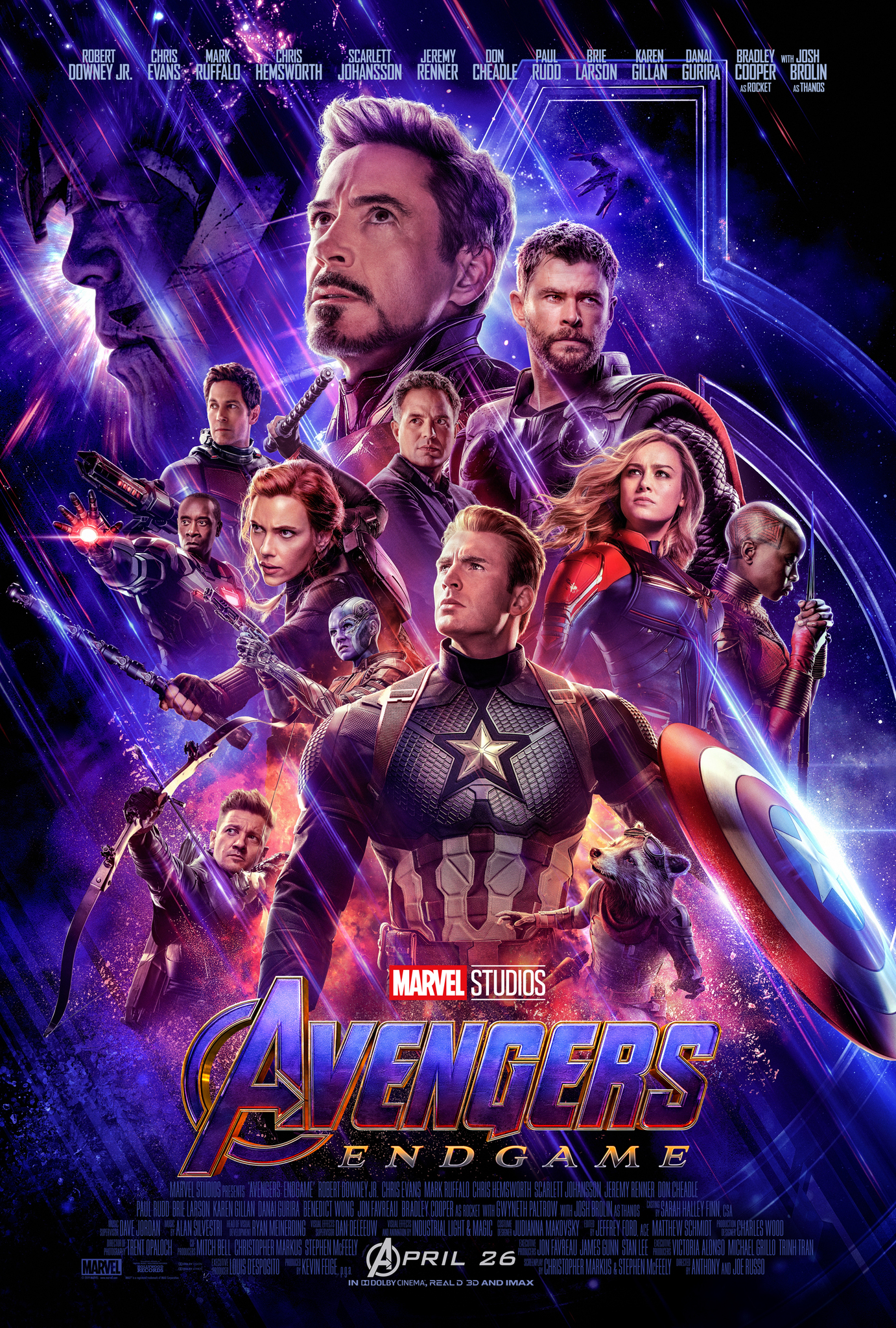
Spider-Man: Far From Home: The first post-Endgame, post-Tony Stark movie. We get references in movie (and from the directors/producers/Kevin Feige’s staff) that the movie takes place after Endgame, during the summer and the start of the next school year. Endgame takes place in 2023, so this would reasonably mean that we are looking at the summer of 2024 for Far From Home. This is further given legitimacy when the school year starts and the school newscaster talks about “The Blip” (what they call Thanos’s Snap) taking place “EIGHT MONTHS ago”. So assuming that this takes place eight months after Endgame, and endgame appeared to take place (or at least start) in the spring/summer of 2023, it would imply that this definitely takes place in 2024.
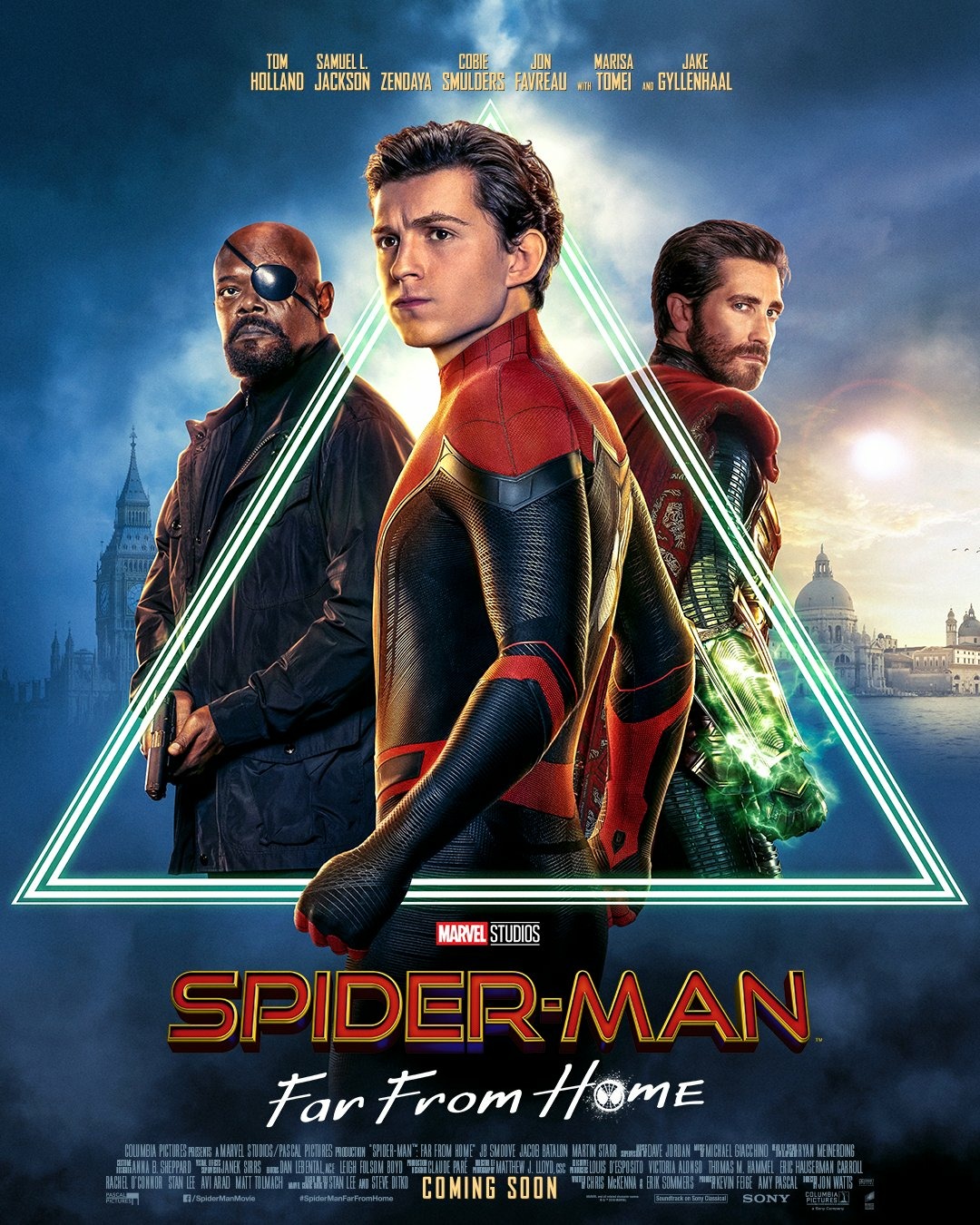
The Future Timelines: I know I said I wasn’t going to go into detail about the future movies of the franchise, but knowing that the next movie out is Black Widow (and her death in Endgame) we can assume that this movie is kind of a “prequel”, which gives the real world time to catch up to the current year in the MCU. It is unknown whether the Eternals will follow this as well, or if it will take place after Endgame. Other upcoming movies include Shang-Chi and the Legend of the Ten Rings, an untitled Spider-Man 3 film, Doctor Strange in the Multiverse of Madness, and Thor: Love and Thunder. We do know whether a few of these movies take place pre or post Endgame though. Black Widow is pre-Endgame. Spider-Man 3 is post End-Game (presumably set in 2025/2026 as they have confirmed it is Peter’s Senior year), Thor: Love and Thunder is post-Endgame (even though it is a Jane Foster Thor, we have also had confirmation that Thor Odinson is with the Guardians in this movie, and that they will cameo. That does mean this is post-Endgame, though what year is unknown). Presumably Doctor Strange in the Multiverse of Madness is post-Endgame (as pre-Endgame the two have not interacted at all). We know Shang-Chi focuses around the Ten Rings clan, and the real Mandarin, so this could honestly take place anywhere from IM3 (2013) until sometime post-Endgame. That gives quite a range of time, and all the options in the world for them to do this.
We also don’t know if there are going to be movies that may take place IN the “Blip” or the Snapped period (2018-2023). It would be interesting to see how some of these next generation of MCU characters acted and perhaps rose to prominence, while half the other characters were gone (Say what you will, I would love to see a couple of movies take place during that period, it could give rise to some new and interesting villains who filled the power gaps, and new heroes who rose to stop them).
In Conclusion: If there is one thing that the MCU brought from the comics perfectly, it’s the fact that the timeline is an Odin-damned mess, and it retcons itself on a regular basis, and also provides incorrect dates and date inconsistencies between movies (and also, in Spider-Man Homecomings case, within it’s own movie, multiple times). We see certain films almost completely disregarded (Incredible Hulk, basically the only things to come out of that movie was the Hulk and Banner as a character, not even the same actor. The destruction of Harlem. And General Thaddeus “Thunderbolt” Ross. There has been little to no mention of Abomination/Blonsky, the Leader, or even Betty Ross, anywhere else in the MCU). Hopefully, in the future, Marvel helps correct some of these errors and prevents more in the future. Perhaps bringing in a guy to literally just handle the timeline, and provide that information to all the writers. But given all the information (and retcons) that we have available, this is the chronological order to watch all the movies.
ERB: A Historical Analysis 2
Doing the next issue of my Epic Rap Battles of History analysis, this time we are featuring the Shaka Zulu vs Julius Caesar episode.
The video can be found HERE
Shaka Zulu First Verse:
His opening line is really strong “Iwisa, meet Ceasar, he’s a commander. Who thinks that he can dance with Conan of the Savanna. But when I go hand to hand with you, I go hammer”. The next line to follow is “Knock off his dome, and wrap it up in his own banner. Send it back to Rome, with a message from the Zulu. If you battle Shaka, this what happen to you” which is a big grandiose line claiming he will kill Caesar (Roman soldiers who died in battle, were often rapped up in a Roman banner, and sent back to Rome for burial). The finishing line is “If you cross that equator you’ll head straight into a massacre, you’ll be fucked by more than just Cleopatra in Africa.” This line is great, because it was well known that Cleopatra and Julius Caesar were sleeping together for political gain (Caesar needed her wealth, Cleopatra needed the Roman army).
Iwisa is a Zulu term for a “Knobkerrie”, which was a type of club that was thrown (one end had a knob or ball end, almost resembling a hammer) that would be used to knock animals unconscious. The “When I got hand to hand with you I go hammer” line is a reference to the hammer look of the Iwisa, but also a play on the phrase “go HAM” (Hard As a Motherfucker). This part is a bit inaccurate, as while the Iwisa WAS used in hunting, it was rarely used in combat. Tthe thrown spears were known as Assegai and were traditionally used as most African tribes in southern Africa, including the Zulu up until Shaka, avoided hand-to-hand combat. Shaka utilized (often claimed invented, but the historical accuracy of whether he invented it, or just made it a common military practice) the Iklwa to take advantage of close combat fighting (The Iklwa being a short two-foot spear, whose head was a one-foot blade, closer to a sword than a spearhead. Also, it was named the Iklwa, because that was the sound the weapon made when removing it from the victims wounds). The “Conan of the Savanna” line was a reference to the comic and book series, Conan the Barbarian, who was loosely based off of Gaul and Gothic culture (who the Romans called Barbarians, both of which Julius Caesar struggled to defeat), while Shaka compared himself to Conan as the great warrior of the African Savanna. The “Knock off his dome, wrap it up in his own banner” line, as previously mentioned was a reference to the Roman method of wrapping fallen soldiers in their banners. But it was also a subtle reference to how Pompey the Great had his head cut off (“knock off his dome”) and sent to Caesar as a threat (“If you battle Shaka, this what happen to you”).
Julius Caesar First Verse:
Caesar’s opening line was “You talk a lot of shit for a man wearing a diaper, I heard you spit poison, where was it in this cypher?” He immediately swings at how the traditional loin cloths that the Zulu wore (compared to a diaper), followed immediately by how he thought Shaka’s first verse was weak. “All I hear is threats from a brute with no discipline, and I’m ruling over you like a boot full of my citizens”. Here Caesar calls Shaka undisciplined, and references the fact that he would crush the Zulu like a boot, with Italy being compared to looking like a boot. “You should take your cow-skin shield and hide under it.” Referencing the hide shields that the Zulu used in war (hiding under it when the spears were thrown). “You’re fucking with the most triumphant third of the triumvirate. First of the empire, and last of the republicans.” This line is bragging about how he rose to rule Rome. “Ask my kidnappers, if I’m just a shit talker, Doc J dunk on ya like Boom Shakalaka” Caesar talks about how he backs up what he says, dunking on Shaka like Julius “Dr. J” Erving over his competition (referencing the popularized phrase “BOOM SHAKALAKA” shouted under every hard slam dunk in the NBA). “Don’t go rattling your sticks at me, if I wanted to shake spears I’d waggle my biography”. This is just a reference to both the Zulu using spears (a weapon of many defeated Roman opponents) and how Caesar has a Shakespearean play about him (Shake spears, Shakespeare. Get it?).
The “I heard you spit poison” line was a great reference to a tactic the Zulu were known for doing. Their warriors would chew poisonous herbs out of battle to build an immunity to it. Then when going into battle, they would chew on the herbs, mixing it with their saliva, allowing them to spit it on their opponents faces causing temporary (or sometimes permanent) blindness. His “The most triumphant third of the triumvirate” line is great, because the Triumvirate was a political alliance between Caeser, Pompey the Great (who was assassinated), and Crassus (who died in battle expanding the Roman borders in the Middle East). Being the last one alive, gave him sole power over Rome (circumventing the checks and balances meant to prevent that) making him the most successful of the three. And the “First of the Empire, last of the Republicans” is a line referencing how under Caesars rule, it went from the Roman Republic, to the Roman Empire signifying a major change in both how the country is run, and how it would be seen for centuries to come. “Ask my kidnappers if I’m just a shit talker” is a huge reference to when Caesar was kidnapped by pirates. The pirates asked for 20 talents of silver (modern equivalent of $600,000 American) and Caesar laughed at them, mocked them for not knowing just who they captured, and told them to demand 50 talents of silver (roughly 1.5 million USD today). The 50 talents of silver was paid after almost 40 days, during which Caesar basically acted like he was the pirates leader and not their captive, and also informed them that when he was free, he would hunt them all down and have each of them crucified. The pirates didn’t take his threats seriously, and Caesar came back with a small fleet, captured them, killed them all, and took back his ransom, and all their possessions. He then had them all killed, by slitting their throats, and having their bodies crucified.
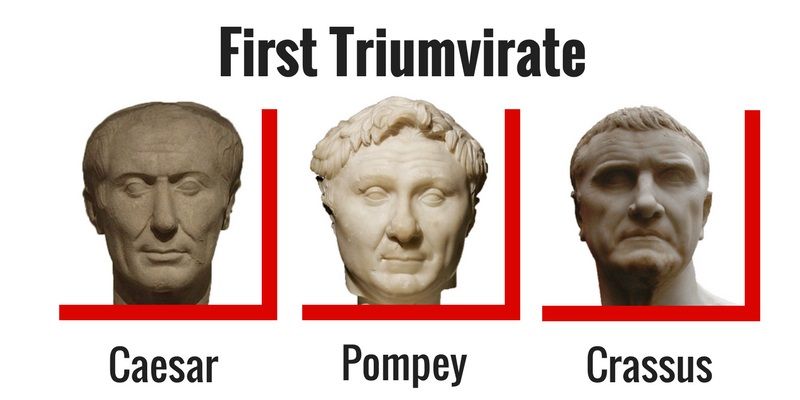
Shaka Zulu Second Verse:
“I’ve heard of your play, tell me how does it end? Oh yes, you get stabbed many times by your friends.” Shaka immediately swings back at Caesar, referencing his last line (The Shakespeare book) and makes fun of how he gets killed in it. “What you gonna do with your Roman swords, watch the lines of your legion get gored by the horns of the Zulu warriors.” references the battle tactics used by the Zulu under Shaka (who revolutionized warfare amongst the African Tribes of the region with new tactics, and emphasis on close quarters combat). “Trained on thorns, to dismember any emperors pasty white hoards” is a reference to both Zulu training tactics, and the “crown of thorns” that the Romans made Jesus wear. The pasty white hoards reference is also a shot at how the Zulu held off the early British invasions of their territory. “I’ve got the strength of a lion and the speed of a cheetah, and everyone knows you’re just a chicken, Caesar.” This line is a reference to how Shaka has the strengths of his homeland animals (such as the Lion and the Cheetah), while calling Caesar a coward (and referencing the Caesar salad).
“You get stabbed many times by your friends” is a reference to both how Caesar died in the play, getting stabbed by his friends and political advisors, and how he died in real life (unknown how many of them would have been considered “friends” per se, but he did get stabbed many times). Ironically, Shaka himself was killed by his own half-brother in a similar fashion. “Gored by the horns of the Zulu” is a direct reference to the Zulu tactic where the “Chest” (veteran and experienced warriors) would engage in combat, while the reserves (compromised of the young, and the inexperienced warriors) would wait behind, before splitting in two and coming up the left and right flanks (making the “horns”). He would then keep another group in reserve to reinforce when needed, or to swap out those starting to get overwhelmed. This tactic quickly crushed opponents protecting their veteran forces from being flanked, and stopping the retreat of enemies as they are now fighting from multiple sides. “Trained on Thorns” is a direct reference to how Zulu warriors would train by running barefoot over fields of thorns to toughen them up (and build a mental willpower to ignore minor scratches and pains).
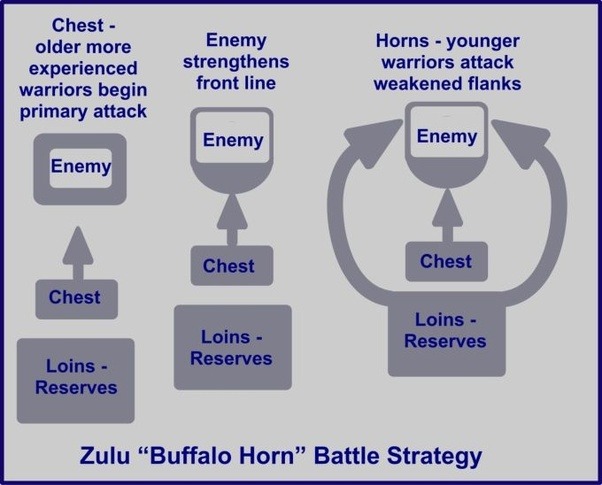
Julius Caesar Second Verse:
“I’ll pave roads with the bones of your goat-herding ass” Caesar talking about how the Romans were known for paving roads everywhere. “First my front lines will drop back and spank you in the chest. Then I’ll decimate your horns, you can’t outflank the best. Let you’re reserves come at me, my ballista’s cocked and ready.” This here is literally the Roman tactics for dealing with people flanking them, and it was rather effective (so it stands to reason it would work against the Zulu). “There’s no use in murdering you and your heathen, you can grow my wheat for me after you’re beaten.”
“Pave roads with the bones” is also a reference to the Appian Way, a road that was said to be paved with the “Bones of Rome’s enemies”. The line “There’s not use in murdering you and your heathen” is a throwback to how Caesar early on was a high priest of Jupiter (calling them heathen’s because they worship the wrong gods). The “Grow my wheat for me after you’re beaten” line has two-fold proponents to it. It’s a reference to slavery, and how many of them were sent to working for farmlands (and Rome was big on making conquered states grow wheat for them). But it is also a reference to how Shaka banned the growing of wheat after his mother died.
In Conclusion:
This one was incredibly good for historical accuracy as a whole, with my biggest gripe being with the Iwisa line (using it in combat). There is a lot of historical references here. I feel that Shaka had the better flow, but also that Caesars lines were more hard hitting.
Character Battles
As I said in the Legendary Weapons: Thor and Wonder Woman article, there was a poll in the Reaper Life Comic Book Multiverse about what topic to do next. This one and the Legendary Weapons one were neck and neck, with this falling one vote behind at the 24 hour mark (after spending almost the entire time tied). So I’m going to move onto this article rather quickly, because I know a lot of people still wanted to see this.
The full title of the article is a little long, but it is actually “Character Battles (And why comparing western superheroes to anime/manga characters is so hard). So let’s start.
Character Battles: This is a common pastime amongst those on comic book forums and facebook groups. This is where you pick two characters (usually comic book characters, comic movie/tv characters, anime characters, or manga characters) and you take their feats of strength, their intelligence, their fights against other super powered individuals. And you compare them against the other, and make an argument (to be decided by others) as to why your character would win. Often times these are characters who would never interact, either they just don’t operate together, or they aren’t even in the same universe. A lot of the battles are two characters who share similar roles in different universes. The Flash and Quicksilver. Hawkeye and Green Arrow. The Nova Corps (Marvel’s superpowered interstellar space cop good guys) vs The Green Lantern Corps (DC’s superpowered interstellar space cop good guys). Sometimes they are a bit less matched and it’s just one of the big guns vs another big gun even though they aren’t as similar (Thor vs Superman, even though given the god background, Thor vs Wonder Woman would be a closer matchup).
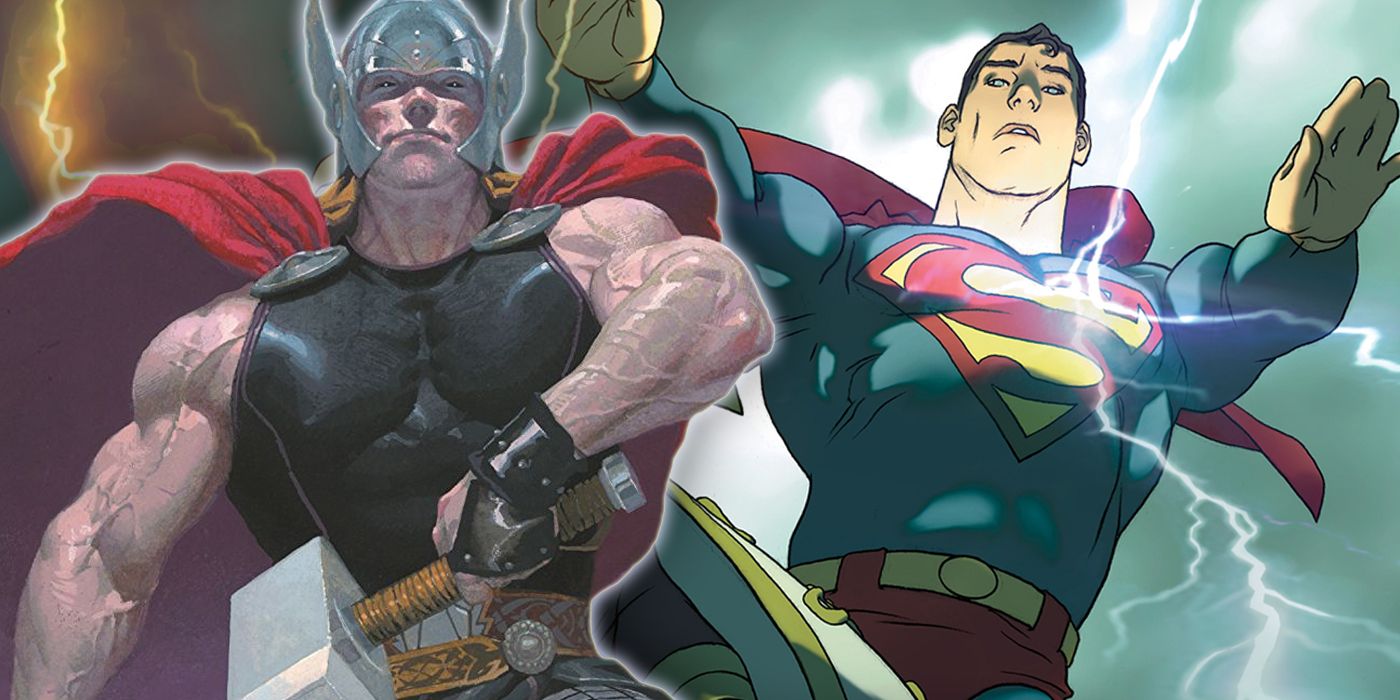
Baseline vs Feats:
Now, people often bring up “feats” in these battles. These are major showings of strength, skill, intellect, battle prowess, speed, or even prep time, to show the top end of what a character can accomplish. The characters baseline is what they can normally accomplish without any extra aid. Take Hulk for example. His baseline makes him maybe less intelligent than his normal self as Bruce Banner, but his strength is comparable to gods and cosmic beings. He can throw planes and tanks with ease. He can clap his hands with so much force that it creates a forcewave that can knock people back, and throw them around. But then you look at his top end feats such as what he accomplished as Worldbreaker Hulk, where just taking a step was causing earthquakes, and if he chose to stomp his feat, he could irreparably damage a continent. That would be a feat, what he could accomplish at his top end, if the situation absolutely requires it, and certain conditions are met. But that is a feat of strength that you could bring up. He can collapse a continent by stomping his foot, if he actually threw his hardest punch? Hulk in his Worldbreaker/World War Hulk persona, easily destroy a planet. This is repeated across most characters and most brands. Look at The Flash. All the iterations of the Flash are incredibly fast, and Wally is arguably the fastest of them all. But, in a feat of speed well above his baseline, he once raced a race of people known as the Gamblers, from one end of the universe to the other. The catch was, the Gamblers have instantaneous teleportation, but somehow Wally (absorbing some of the kinetic energy of the entire planet Earth) managed to outrun that. Yes, he outran instantaneous teleportation. What makes this a feat is that he can’t ordinarily do that, it’s not a regular part of his skill set. It’s something that can come up in extreme situations. So if you were arguing about who is faster, this would be a feat you bring up, after all he is faster than instant.
Than you get the unpowered character feats. Here you get your Iron Mans, your Punishers, your Green Arrows, and your Batmans, for example. These are guys who aren’t super powered, and yet regularly keep up with (and often surpass) their superpowered counterparts. Iron Man and Batman regularly lead super teams and have the respect of the super communities. Green Arrow and Punisher while sometimes team up with the “big guns” are regularly more seen with street-level and lower level crime. They rely on their physical conditioning, their mind, and their ability to prep for encounters that they can’t physically handle. And despite that all these guys have some incredible prep feats, this leads to what I like to call “Batman Syndrome”.
Batman Syndrome, or the Problem with Prep Time:
This is something that happens anytime you bring up prep time. It allows someone who may be disadvantaged to be in the fight. I call it Batman Syndrome because it is often used as a blank cheque for any fight vs Batman to be “Well Batman wins with prep time”. Yes, Batman is well known for his ability to prep for situations, to give him an equalizer in most fights (given that he’s got the information already). But people always use it as “Well Batman always wins with 24 hours prep time”. As if in that 24 hours he still doesn’t sleep, still doesn’t have to gather materials, gather information, formulate a plan. It’s not like it’s just 24 hours straight being awake, or else he’s going to get his ass beat in that fight because he’s so tired. People always assume that this person can prepare for every situation given that 24 hours. The reality is, even the most prepared people (like Batman), you can’t prepare for everything, even with that 24 hours, or even 48 hours prep time. You can prepare for the most common things, you can study their most common habits. It helps even it up. Prep time in these scenarios is never meant to mean “I prepped, so I win”. The reason these characters always win in the comics, is because they are the heroes, the good guys, the main characters. Even if they lose, it’s not like they just straight up lose and that’s it, they lose, they formulate a NEW plan, and try again, and barely come out on top. Punisher has prepped for killing Frost Giants in Jotunheim, he’s fought devils and angels. He’s disabled multiple Hulk’s. But this always came from a lot of prep, and usually with help from someone else. Batman has formulated plans to take down Darkseid, but he still has the help of the Justice League. Iron Man has fought Celestials and held his own, but to win he still needed the help of the Earth’s Mightiest Heroes. Green Arrow has stopped some pretty serious guys, but he’s also had help from characters like Green Lantern. Prep time helps them even the odds. Prep time helps them overcome a lack of powers. But prep time doesn’t always mean they get every tool they need to win the fight. It just helps them stay in it. Remember, yes Batman gets that 24 hours prep time, but the person he’s going to fight has 24 hours too. You don’t have to be a genius to be able to prepare or study something as well.

Anime and Manga, and why Comparing them to western comics is so hard:
While I am less familiar with manga and anime compared to western comics, there is a pretty big difference. Western comics (as explained early) you have your baseline strengths, and feats for your top end limits. Anime and Manga has a completely different set up. It’s what I like to call a powercreep (or a ramp up) situation. Your characters have their base strength. They get through a few fights, maybe even struggle with one or two. And then the big bad villain comes along, and maybe even has his own goon squad with him/her. The hero struggles with the goons, and then gets beat like he owes Luke Cage money by the main villain. After that the hero trains with a couple others, gets stronger, faster, better, and maybe learns a few new moves/abilities. Comes back, and beats the bad guy. The new stuff they learned isn’t really a “feat”. It’s their new baseline. Their baseline has no improved, they will never be as weak as they were when they started. Then you get a couple more story arcs and you get another big bad villain who beats the hero’s ass. Same thing happens (and maybe them teaming up/learning from a previous villain), they come back with even more strength, more power, more abilities. They never actually get weaker, it just continually ramps up. Continually gets stronger. There is rarely what would be classified as a “feat” in Anime or Manga, as the new outrageous things they do become the new baseline. If a character doesn’t use that move so often, it’s not because they can’t, it’s because they might consider it unfair, or the writer just forgot about it.
That big stylistic difference in “power levels”, or the “feats vs powercreep” is why any battle between an anime/manga character and any traditional western character, is so hard to properly judge. Yes people will still swing things in the western characters favour. And yes people swing things in the anime/manga characters favour. But without specifying certain situations or caps on abilities (for example, Pre-New 52 Superman vs Pre-Dragon ball Super Goku), which limits Goku to events before the Dragon ball Super series and Superman to before the New 52 stories. Then you get what is called “composite”, which is all versions of the character (movies, tv shows, cartoons, and all comics, including alternate reality story lines). Composite matches are basically the best way to compare western characters to anime/manga characters because it assumes that they’ll have met any conditions to using their high end feats and that they are actively using them. The reason I say that is it allows them to keep pace with the powercreep style of Anime/Manga. This isn’t to say that I believe all anime/manga characters are stronger than western characters, or the other way around, it’s more that the different styles of writing and story arcs make it rather difficult to compare the two on an equal footing.
Joke Characters:
These are characters that are more joke than serious. And you see them debated sometimes in groups, but in these cases it’s hard to take it seriously. Heroes like Squirrel Girl from Marvel (who was literally created as a way of poking fun of people who take comics too seriously). Saitama of One Punch Man is like this as well, like whenever he ends the fight, it’s just him doing it with one-punch. There are other examples of characters like this, but basically these characters are meant to just literally never lose while barely trying. Debating characters like these I (personally) find pointless as they were never meant to be seriously challenged by their opponents. It’s more just people having fun with it.
Legendary Weapons: Thor and Wonder Woman
Thanks to a very close (and highly contested) poll in the Reaper Life Comic Book Multiverse Facebook group (join up for some pretty friendly banter, discussions about comics, shows, videogames, movies and just good times) the next comic topic on my blog is the next segment of our Legendary Weapons series. This time, featuring the weapons of Thor, and Wonder Woman. Because both of them use multiple weapons (It’s not just Mjolnir and the Lasso people), I’m going to break it down by character.
Thor: Lets start of with Thor. He has plenty of weapons, many of which were only used once or twice. I’m trying to go with some that have been around for a bit, or had a significant impact in their time here. Obviously we are starting with none other than:
Mjolnir: Whosoever holds this hammer, if he be worthy, shall possess the power of Thor. Simple enough. The hammer is Uru forged in the heart of a dying star, and contains the God-Tempest within it (a sentient storm that took Odin many days to even weaken it). The forging process caused the start to explode, almost destroying Midgard (Earth) when that happened (fun fact, this explosion, in 616 canon, is why the dinosaurs went extinct). In the process of trying to control the unwieldy hammer, Odin cast spells and enchantments on it so that if he couldn’t wield it, no one can (even if that didn’t end up working out). So let’s get down to the properties of Mjolnir. Uru is nearly indestructible, in fact even Celestial Armour can’t withstand it (with the only known metal being on par with Uru is primary Adamantium). It has a limited sense of sentience due to the God-Tempest within it (and at great energy, it can project itself as an image of it’s choosing to communicate. The kind of energy needed causes it to be used so rarely, needing a minimum of 100 years to regain the energy needed). Upon it was placed a worthiness enchantment, which both prevents the unworthy from using it, and gives it’s controller the ability to have Thor’s powers. This enchantment also gives the user the ability to control the fundamental forces of the universe (including gravity, and the electromagnetic spectrum). It’s controller gains the ability to control the weather (and if that person can already do that, such as Thor or Storm, it greatly enhances that ability). This weather manipulation is not limited to natural laws, and as such can create things like rain in space, or storms that are planet-wide. It’s wielders gain the ability to project and channel energy for attacks (such as the God-Blast and the Anti-Blast), as well as energy absorption and redirection. Mjolnir can also create wormholes for instantaneous travel, to other parts of the universe, other planets, or even other dimensions. There are also many other non-combat uses of Mjolnir, including the ability to have Allspeak (to communicate with anyone, and it’ll be heard as whatever language the person listening would understand), the ability to be immune to most magic, can act as an interdimensional messenger, can recall past events it was there for, and can transform it’s wielder’s image (such as the Donald Blake persona).
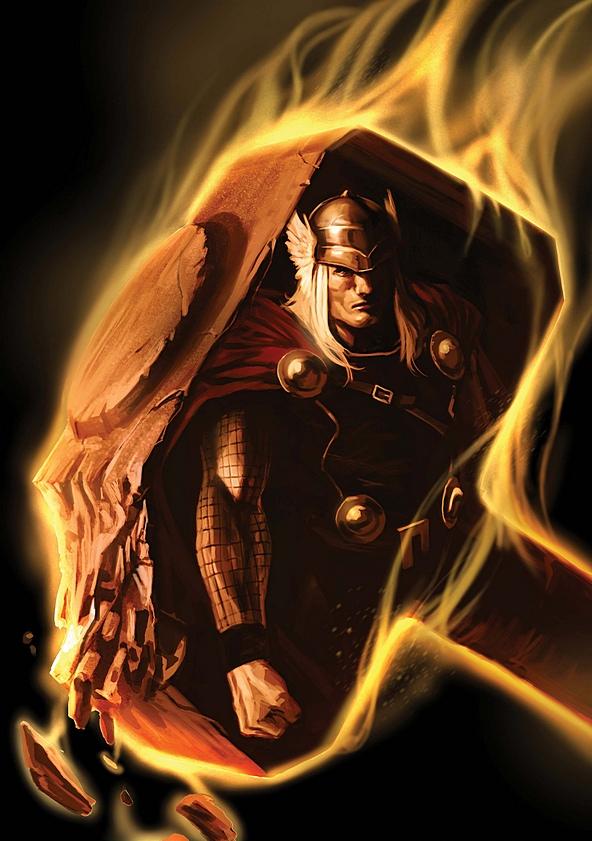
Jarnbjorn: The axe Jarnbjorn was forged by the dwarves for Thor, and was his early weapon before he became worthy of Mjolnir. It’s nickname was “Wrecker of Worlds”. Blessed with the blood of Thor itself, it was able to pierce Celestial Armour, which lead to a cataclysmic level event when Thor used it on Apocalypse in the 11th century. The axe was lost and rediscovered by Kang the Conqueror, who had it stolen from him by the Apocalypse Twins. When Thor became the Unworthy Odinson, he took up Jarnbjorn again as his weapon. Malekith the Accursed took Jarnbjorn from Thor in a battle, and used it to cut off Thor’s arm. As far as it’s attributes go, it has an impossibly sharp edge making it able to cut virtually everything. It also has a charm placed on it to make it indestructible. It also was blessed with Thor’s blood, so it became capable of slicing through the armours of beings and creatures (such as the Celestials) who Asgardians couldn’t normally fight. Fun fact: Jarnbjorn translates from Old Norse as “Iron Bear” and in some Swedish/Norwegian dialects, still translates as Iron Bear. It was named as a nod to Thor’s giantess lover Jarnsaxa.
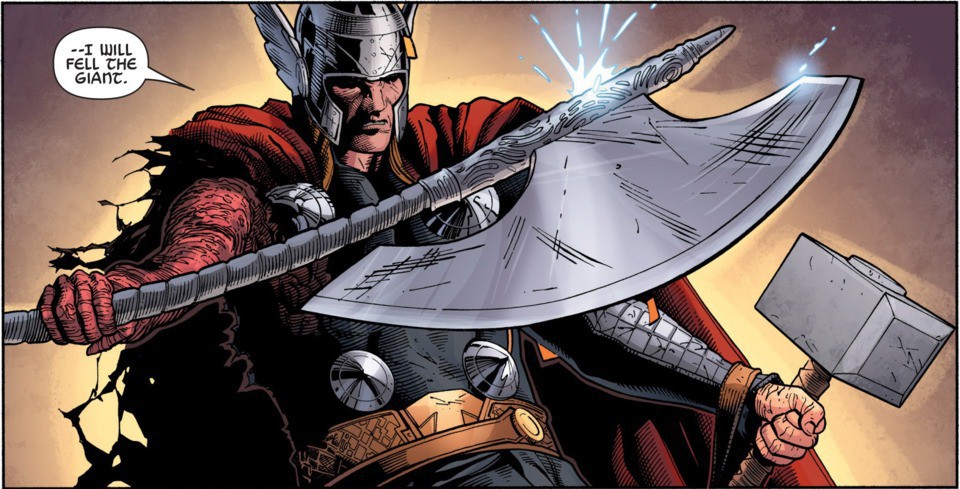
Toothgnasher and Toothgrinder: While not weapons in a traditional sense, Toothgnasher and Toothgrinder are the two goats that pull Thor’s chariot around. They are both incredibly fast, and strong (being capable of damaging things made out of Uru). They are able to be reborn every day if he is killed, as long as his bones aren’t broken. Once Toothgnasher was killed by Mangog by having his entire head ripped off, he was resurrected by Loki as a gift to Thor using the powers of the Norn Stones. Toothgnasher was also the trans-dimensional transport of Punisher, Juggernaut, the Black Knight, and Foggy Nelson after the events of the War of the Realms where Punisher hunted down war criminals who made a bunch of children homeless. Toothgnasher and Toothgrinder are capable of fighting people who are on Asgardian level strength (including War Thor aka. Volstagg).
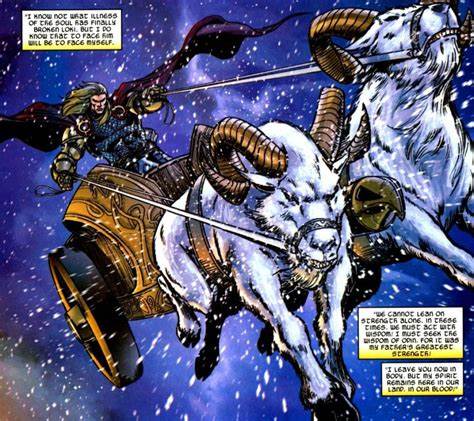
Wonder Woman: Wonder Woman has experience with a large amount of weapons and non-combat gear she is associated with. So let’s go with her most known one.
The Lasso of Truth: Wonder Woman (Diana Prince) signature weapon. The Lasso of Truth compels those captured by it to tell the truth (those with particularly strong willpower can avoid answering the question without telling a lie). It can also be used to implant commands, erase memories, and heal the mentally ill (to a limited extent). It is indestructible, and if spun fast enough, can be used to float above the ground. Diana has a limited amount of telepathic control over the Lasso. Lesser Demons are instantly destroyed by the lasso, as they are comprised of lies. It is also capable of dispelling illusions and protecting people from magical attacks.
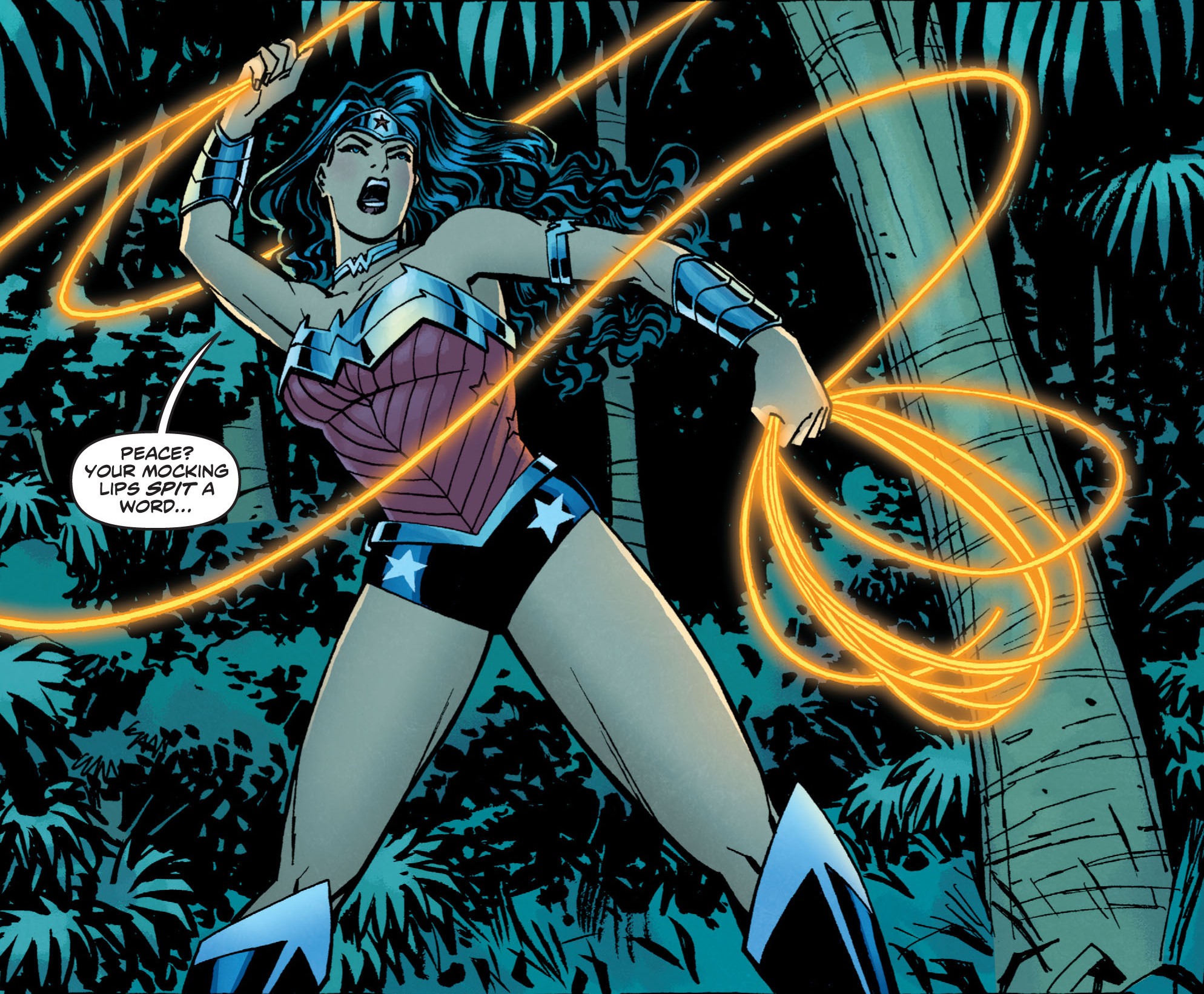
Bracelets of Submission: In the movies these are known as the Bracelets of Victory. Modelled after the shackles with which the Amazons were enslaved, the Bracelets of Submission/Victory was crafted from the Aegis Shield (Zeus’s shield). They are capable of deflecting bullets, and blocking swords and other martial weapons. When crossed, the bracelets can form a projection of the Aegis Shield protecting herself and others behind her. Every Amazon has a pair of these bracelets. The Bracelets also have the drawback that if chains are put on them (remember, they are modeled after shackles), that the Amazon wearing them loses their strength. Diana’s bracelets have additional modifications on them that allow Diana to summon any weapon that was made by Hephaestus in his forge at will (which is how she is constantly able to keep swords and shields on her at all times). Depending on what continuity it is, these bracelets are forged from Amazonium, Feminium, Steel, or Silver.
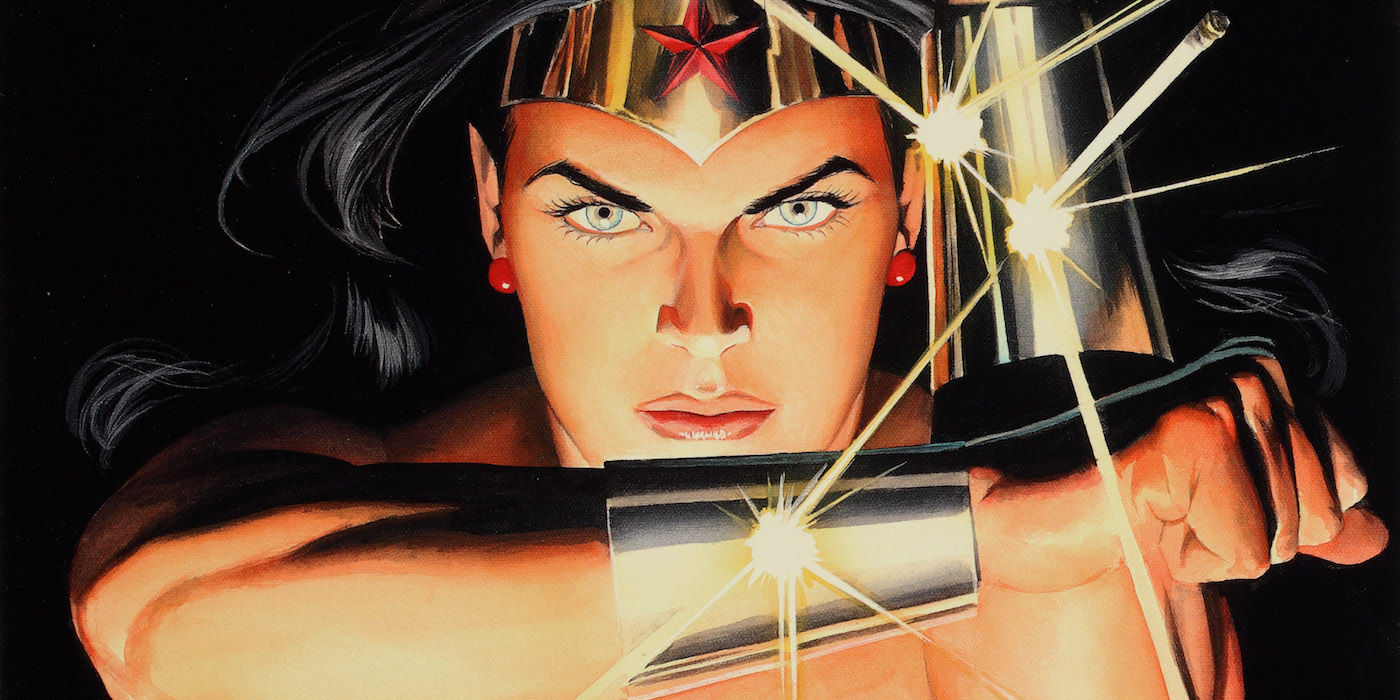
The Sandals of Hermes: The Sandals of Hermes have been worn by many Amazonians, but are primarily in the possession of Diana. They allow the wearer to fly (though that isn’t necessarily a thing that Diana needs, as most modern iterations she is capable of flying on her own), but it also allows for safe travel through the Air of Chaos (the magican mist that surrounds Themyscira). They do also increase the wearers speed beyond what they are normally capable of.
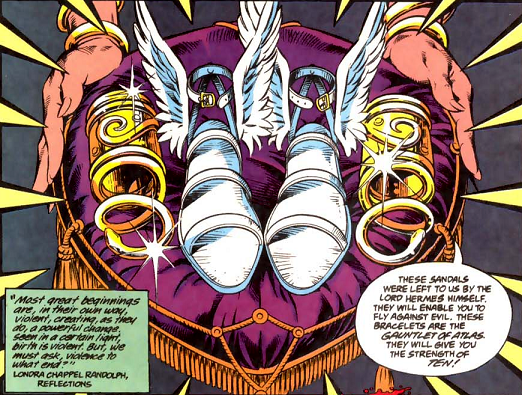
Tiara: Wonder Woman’s Tiara is a symbol of her status as the Princess of the Amazons on Paradise Island (Themyscira). It has a noticeable red star in the middle. It may not look like much, but it is an incredibly dangerous thrown weapon. The edges are sharp enough to cut through most things, and returns to her much like a boomerang. When thrown with the strength that Diana has, the Tiara can be thrown with so much force that it can cut through Kryptonian skin.
